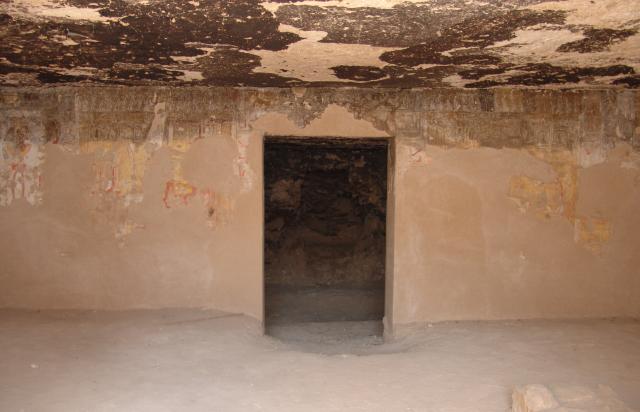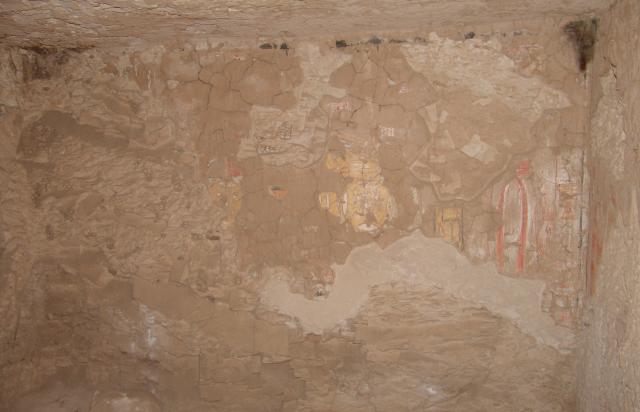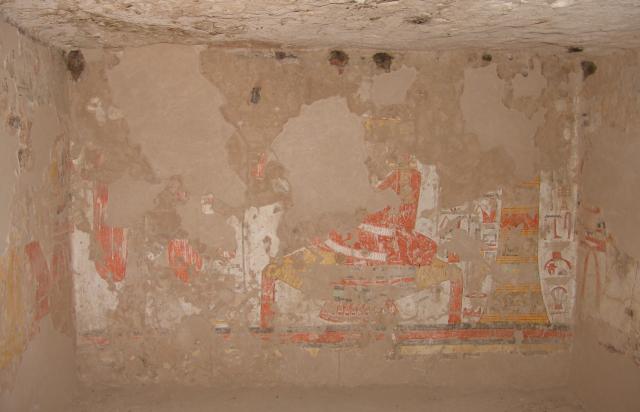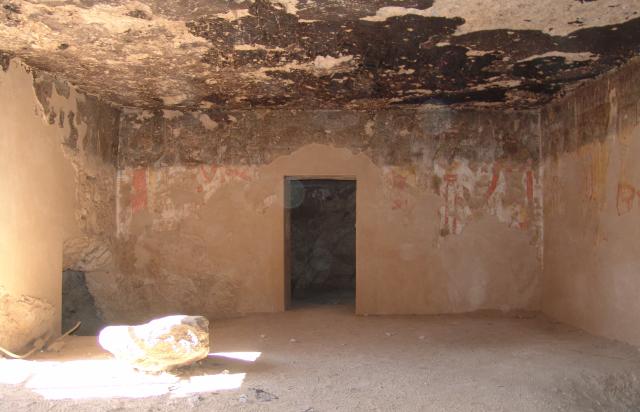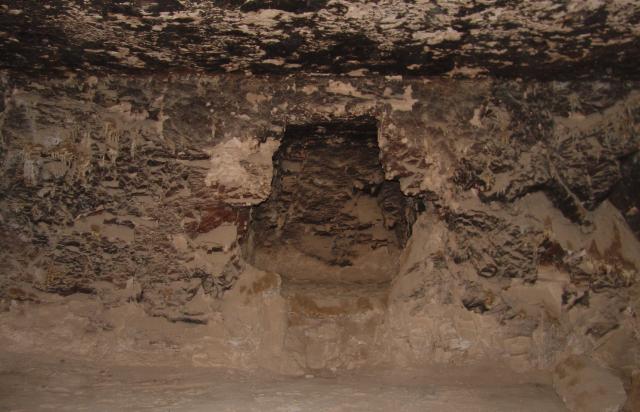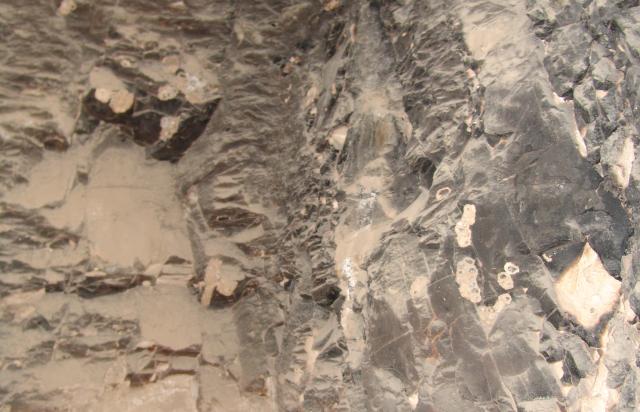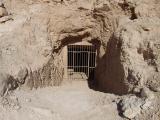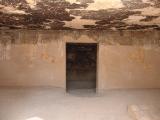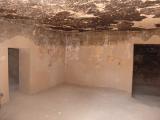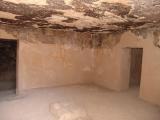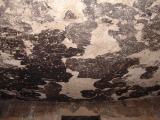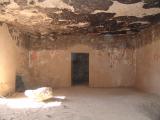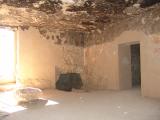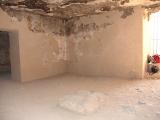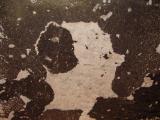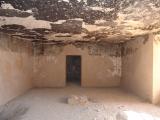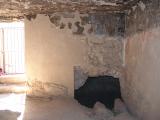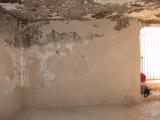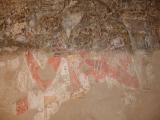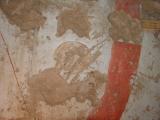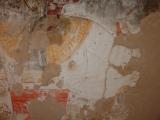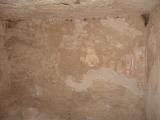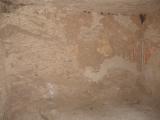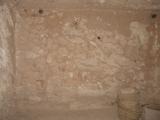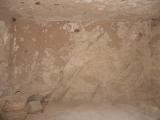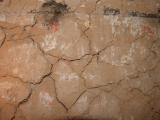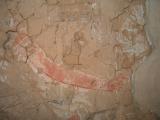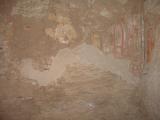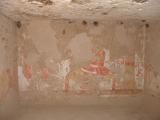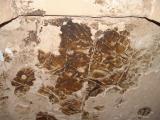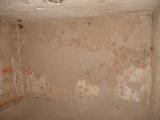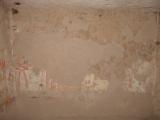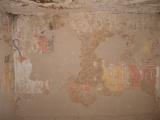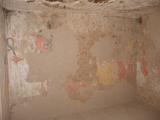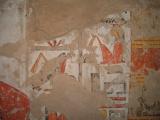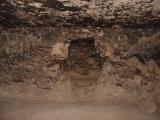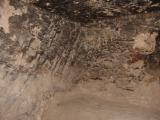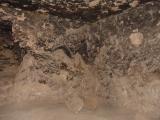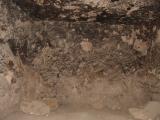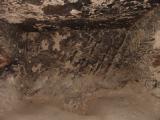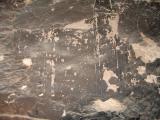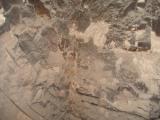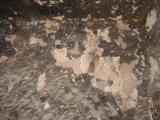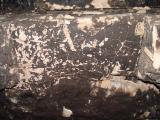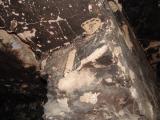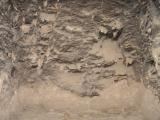QV 68
Queen Merytamen
Entryway A
See entire tombA steep Divided Stairway with a narrow center slope provides access to the tomb. The edges of the original rock-cut Steps and plaster remain along the walls of the Ramp, although now heavily eroded. There are large areas of loss in the east wall of the ramp and the entrance Overhang exhibits cracking.
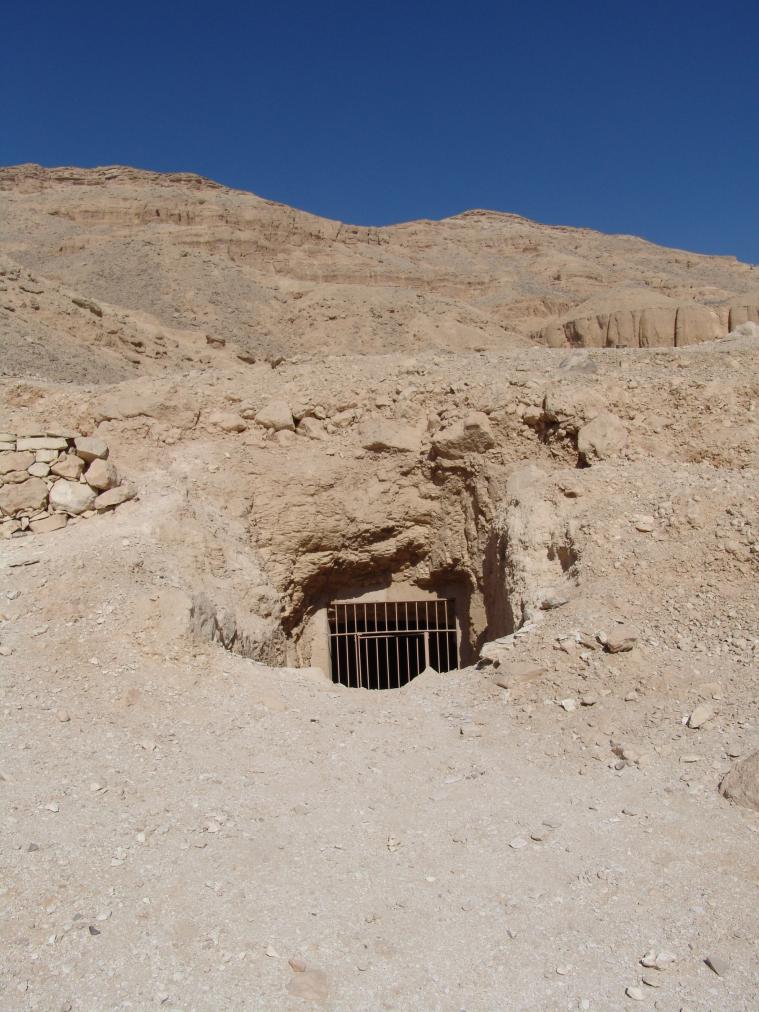
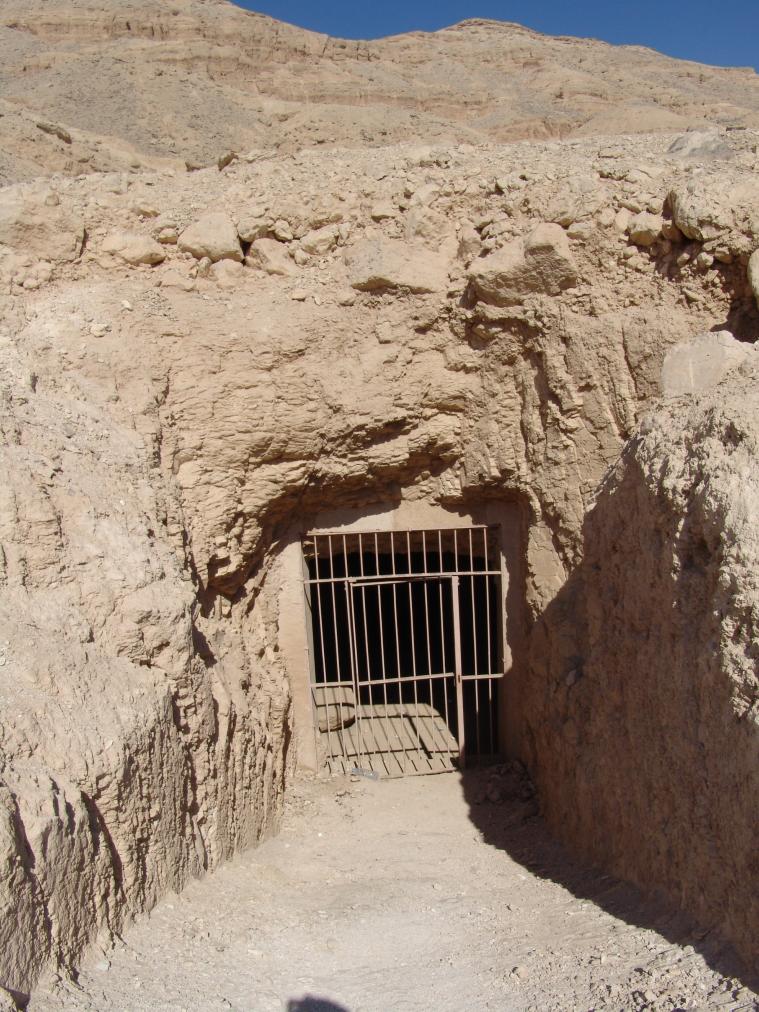
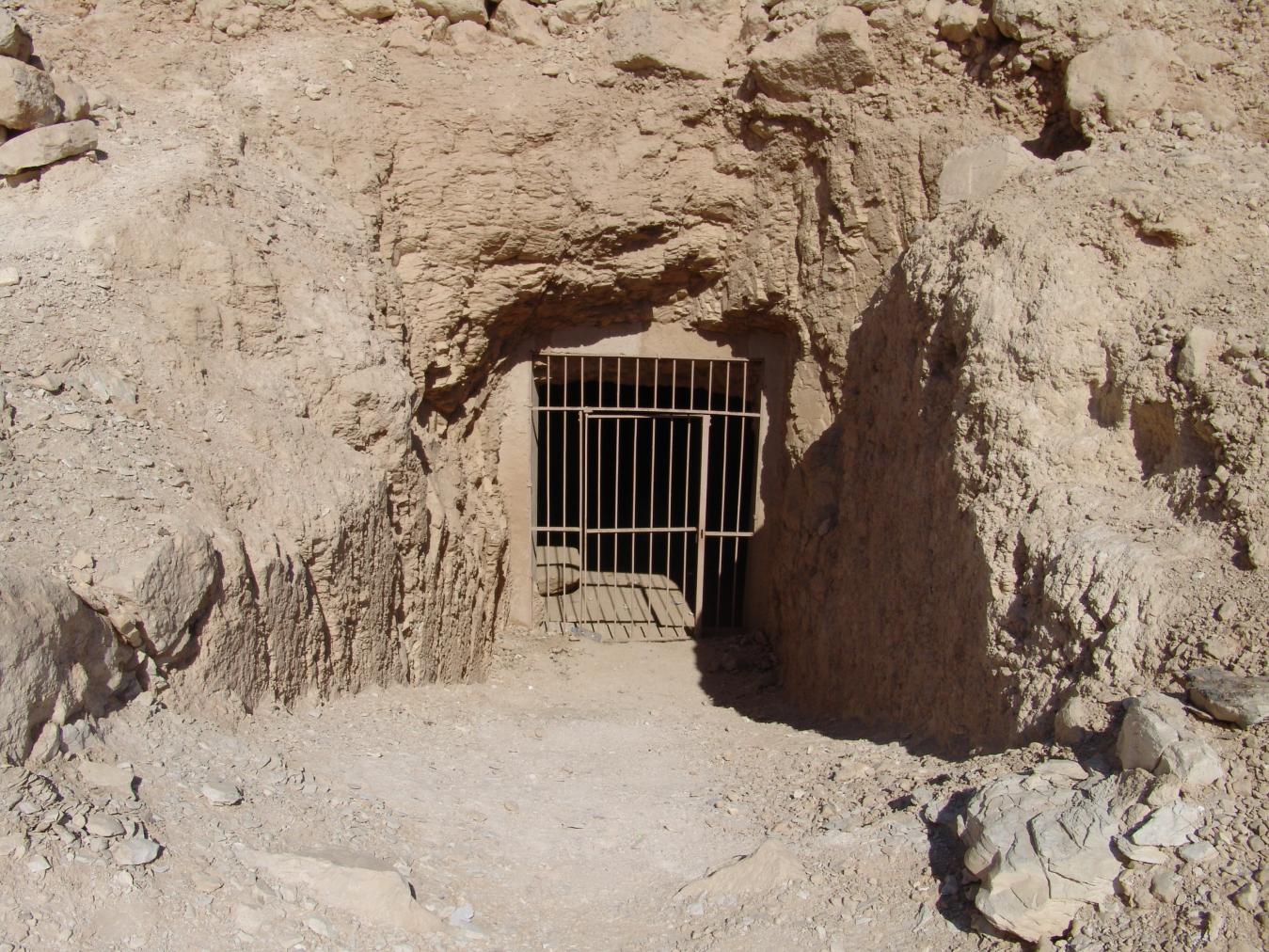
Gate B
See entire tombThis gate provides access to the tomb and has been covered by a metal grill door. There is no surviving decoration. A door post hole is visible on both sides of the gate, indicating that wooden double-doors were used to close the tomb.
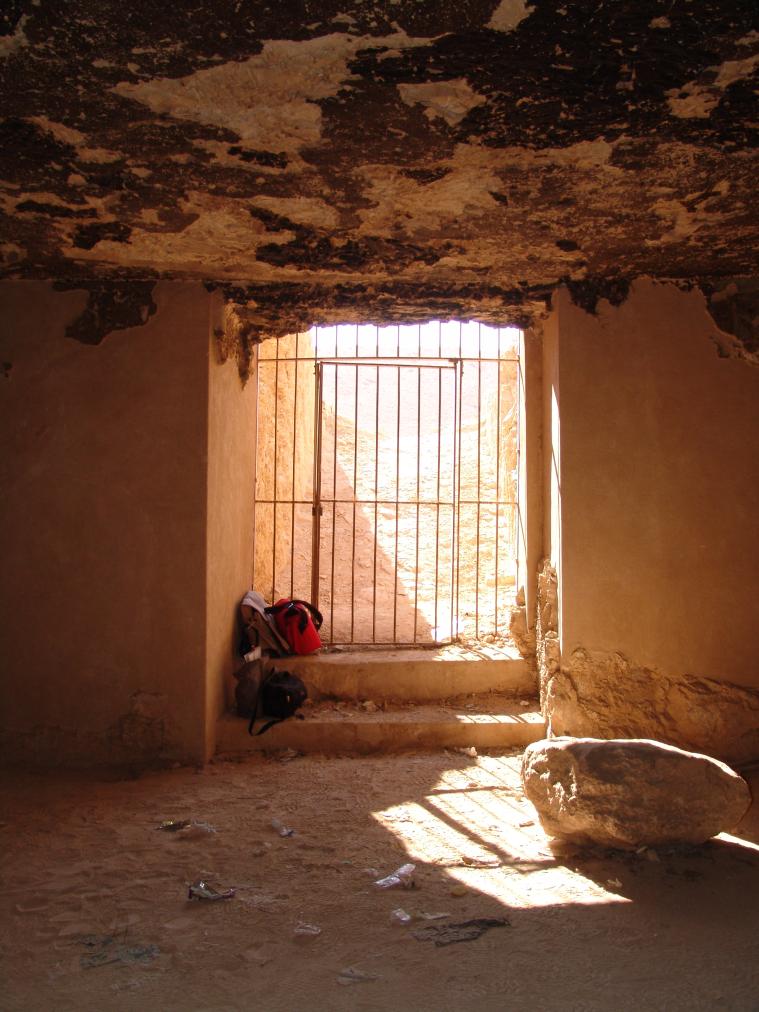
Pillared chamber B
See entire tombThis chamber lies perpendicular to the tombs axis and originally contained a reconstructed pillar. The base of this pillar is all that remains. This chamber has three side chambers, one to the east and west, as well as a side chamber to the south that is thought to be a later addition and is accessed through a pit in the floor. The walls are blackened from fire on the upper third parts, indicating that the lower two thirds may have been protected by debris.
The decoration is this chamber, though heavily abraded and intentionally scratched, still retains much of its upper painted plaster layer. A frieze of Uraei survives on the upper parts of all the walls. The scenes in this chamber center on the queen offering to various deities, including Neith, Thoth, Hathor, Re-Horakhty, and Ptah.
Porter and Moss designation:
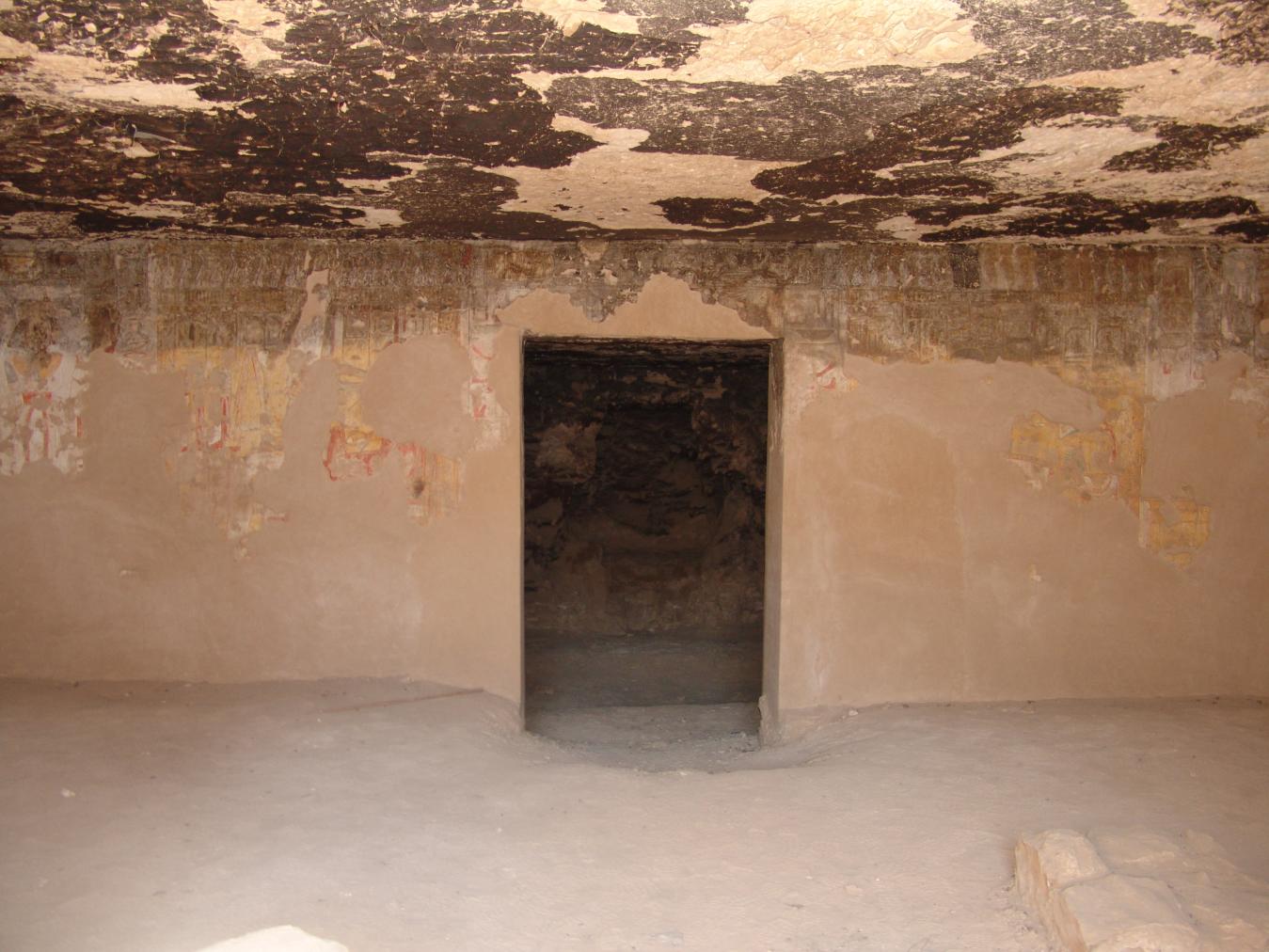
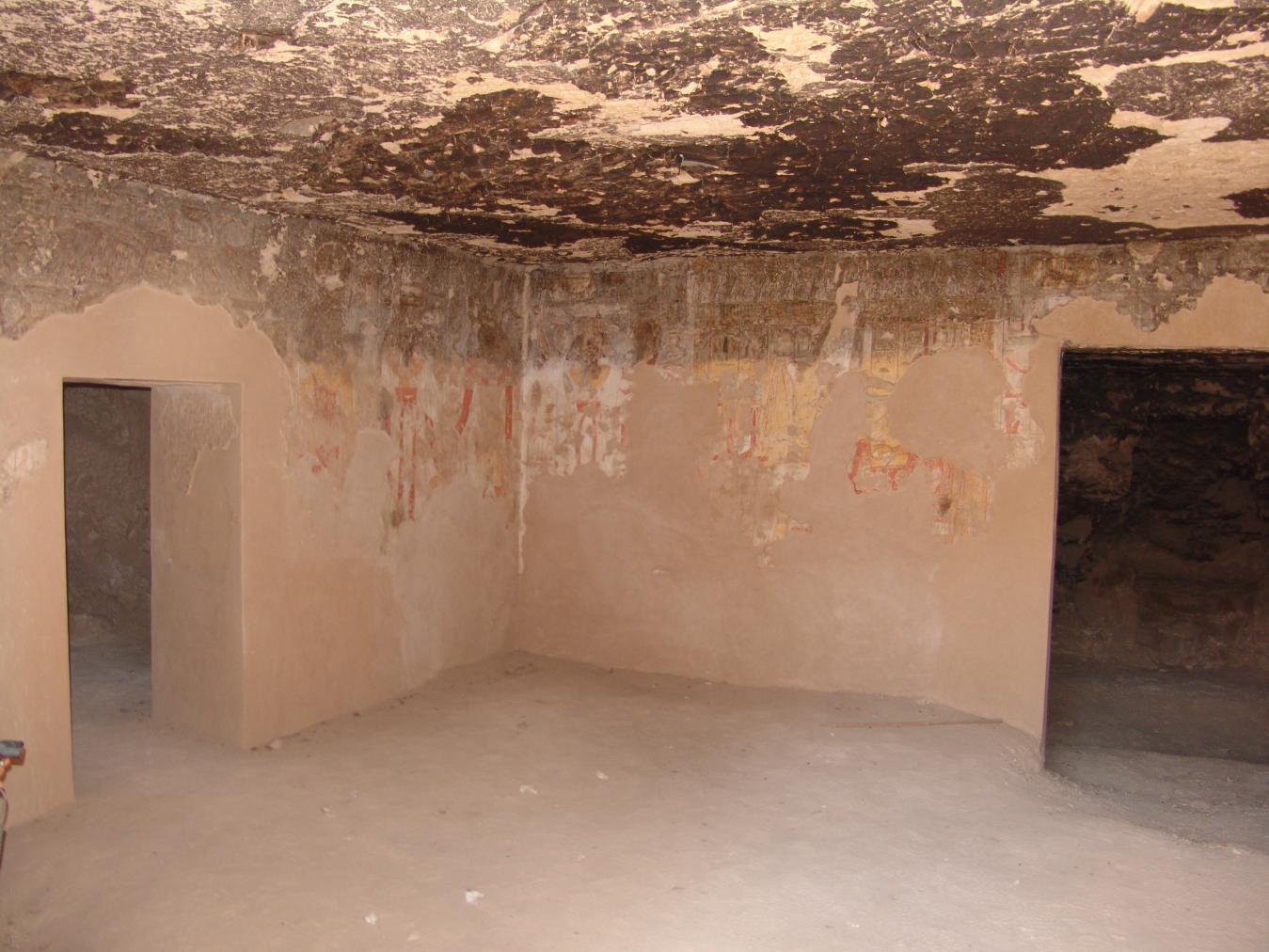
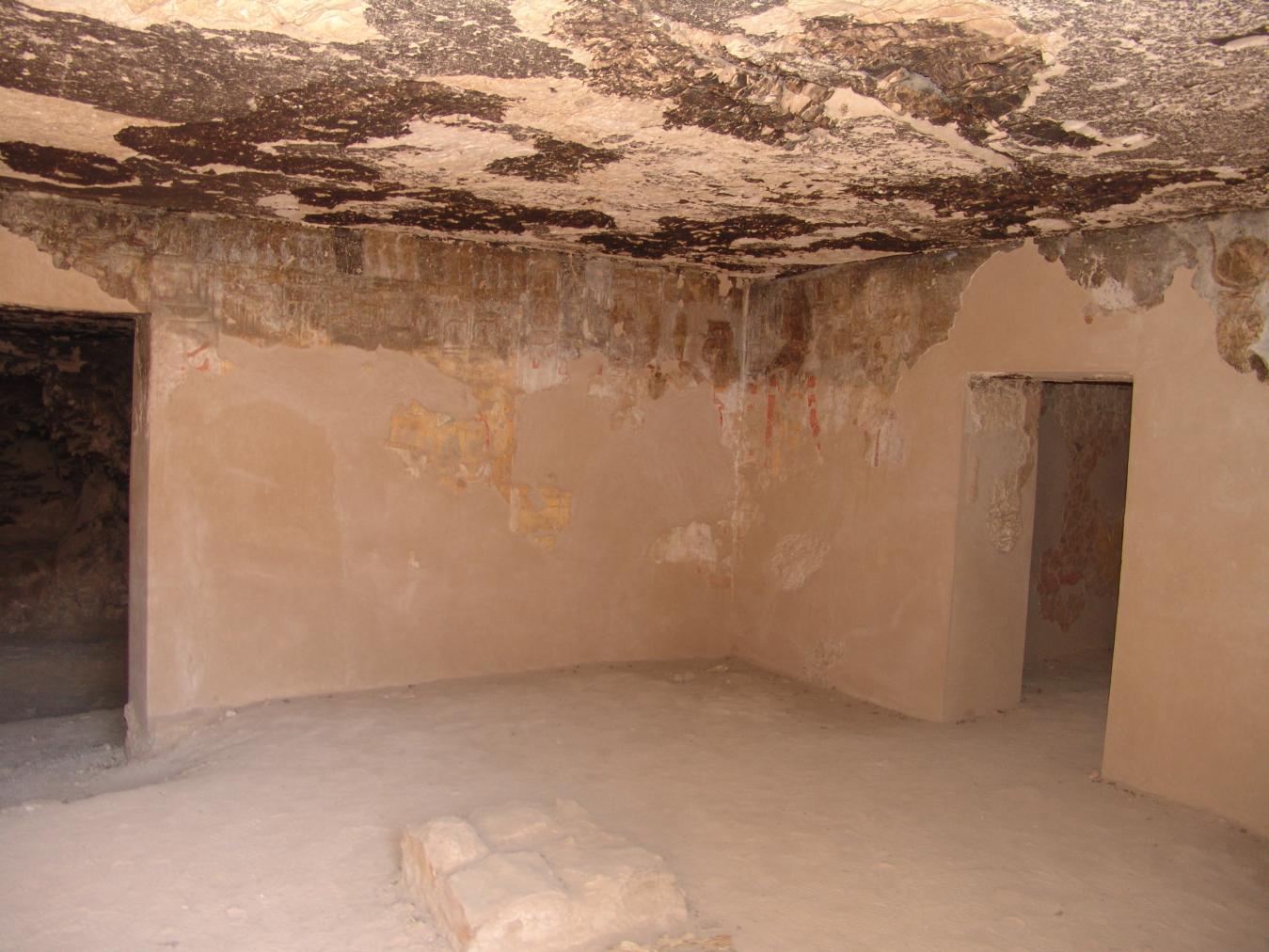
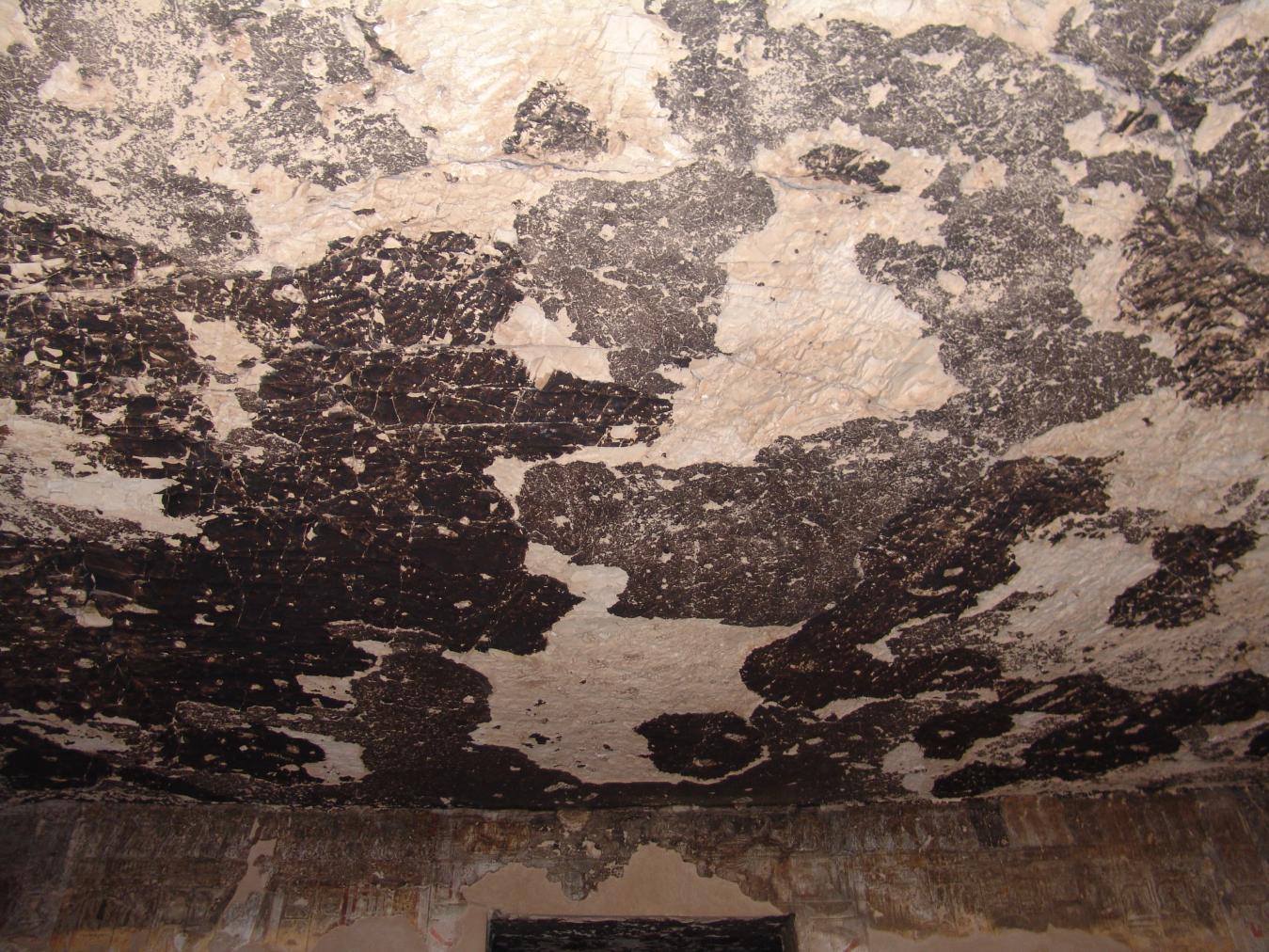
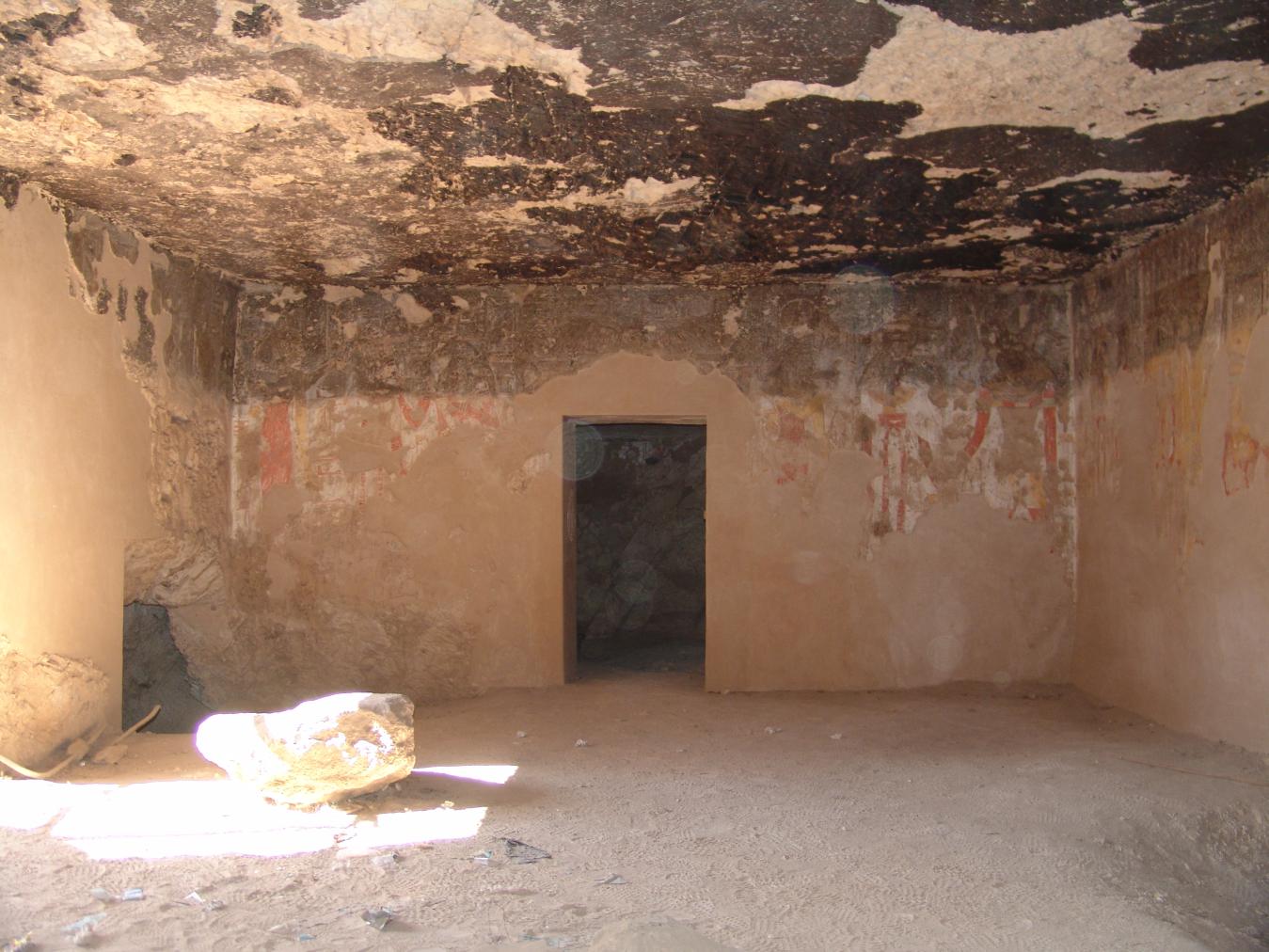
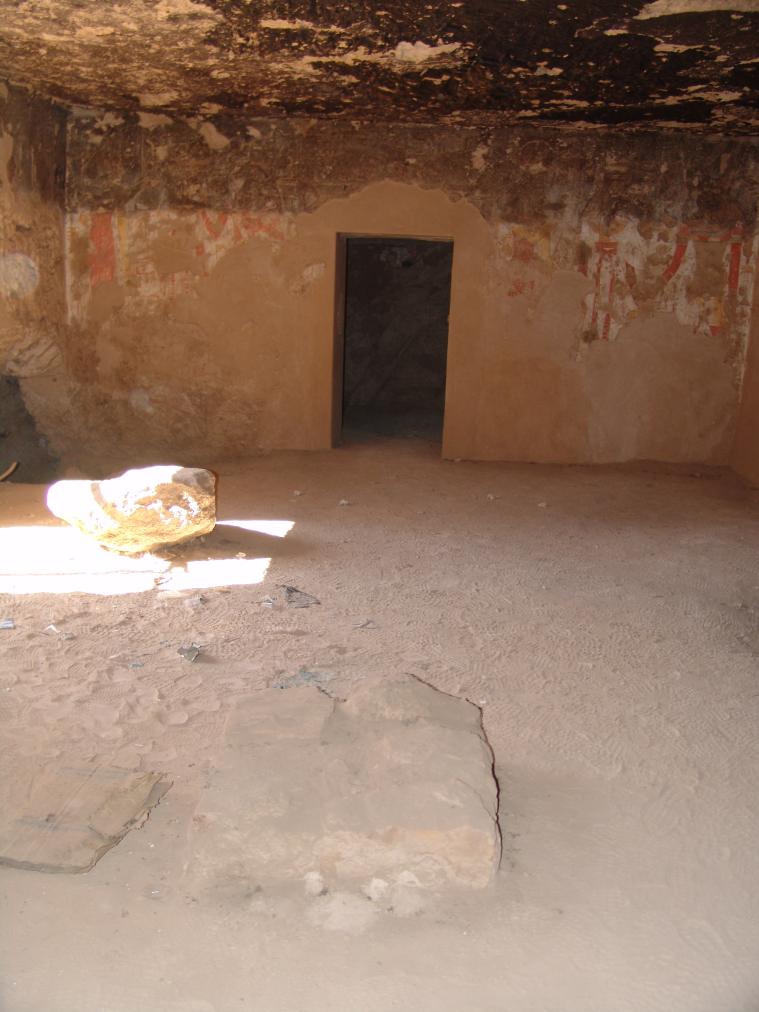
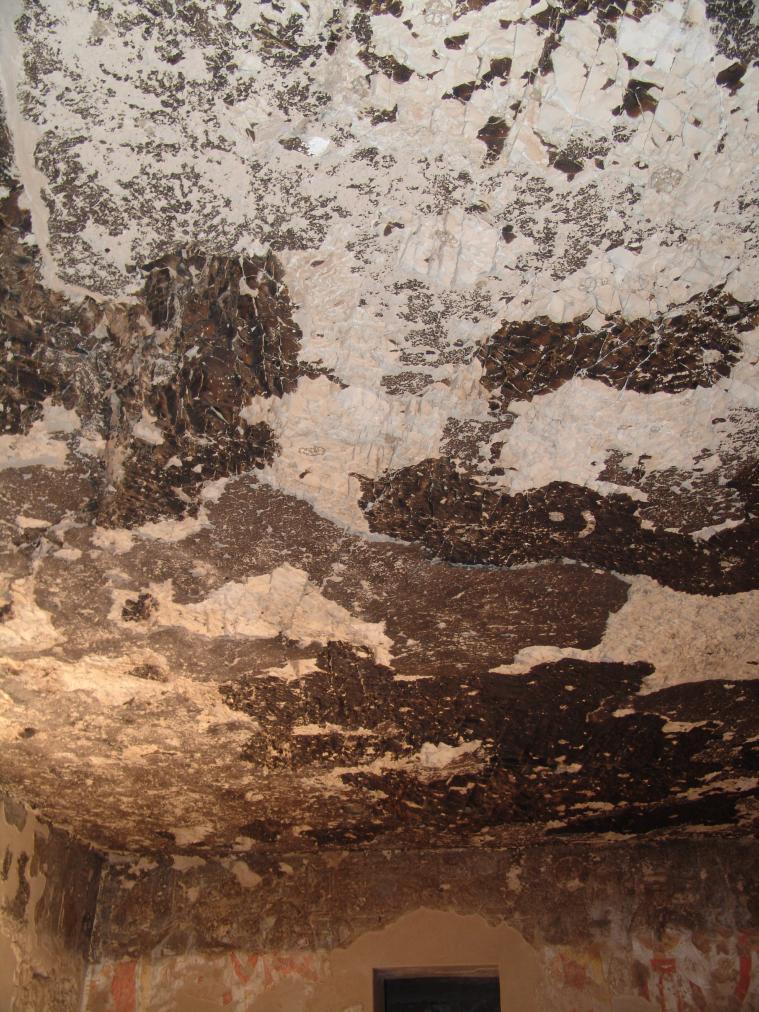
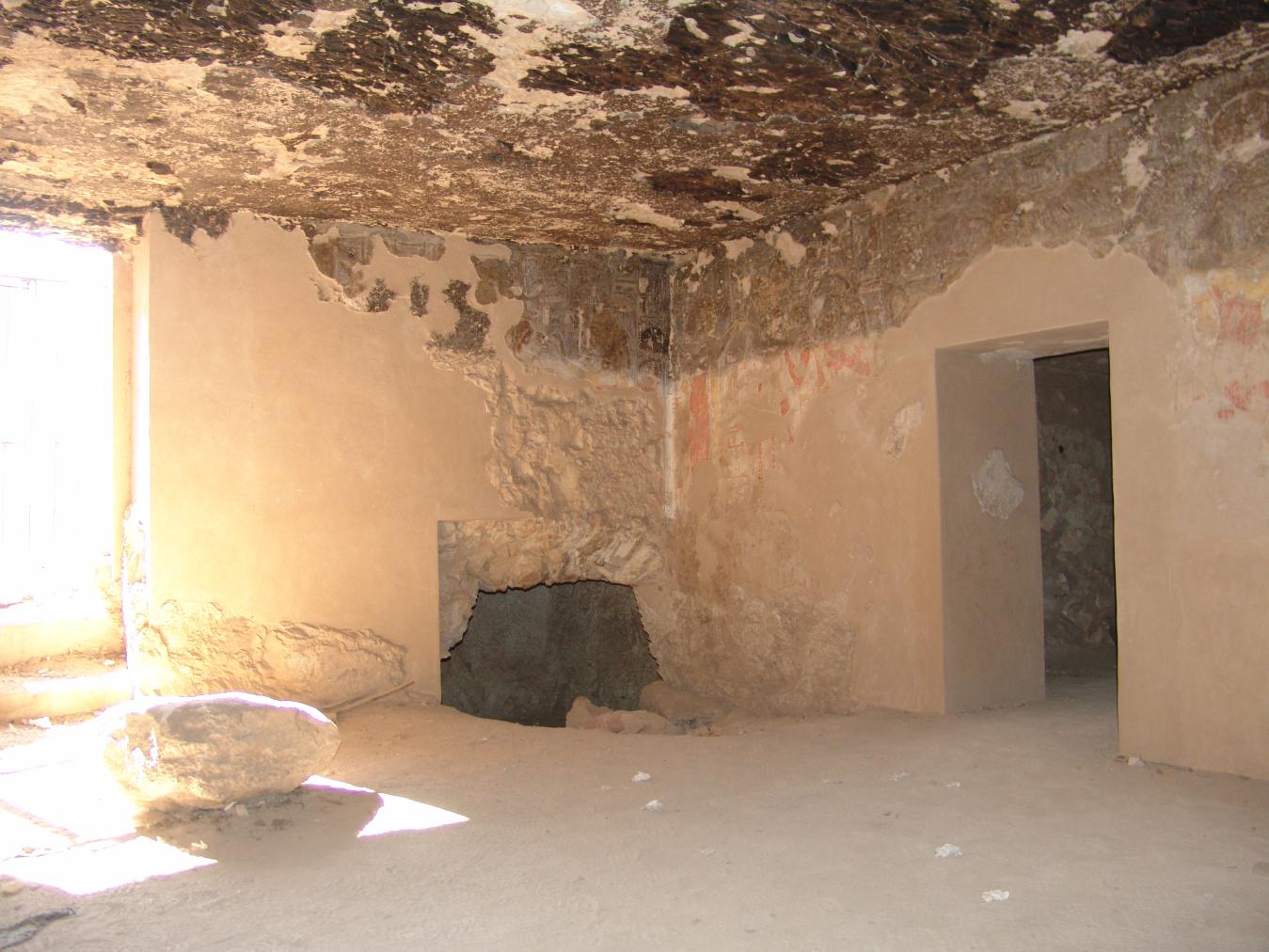
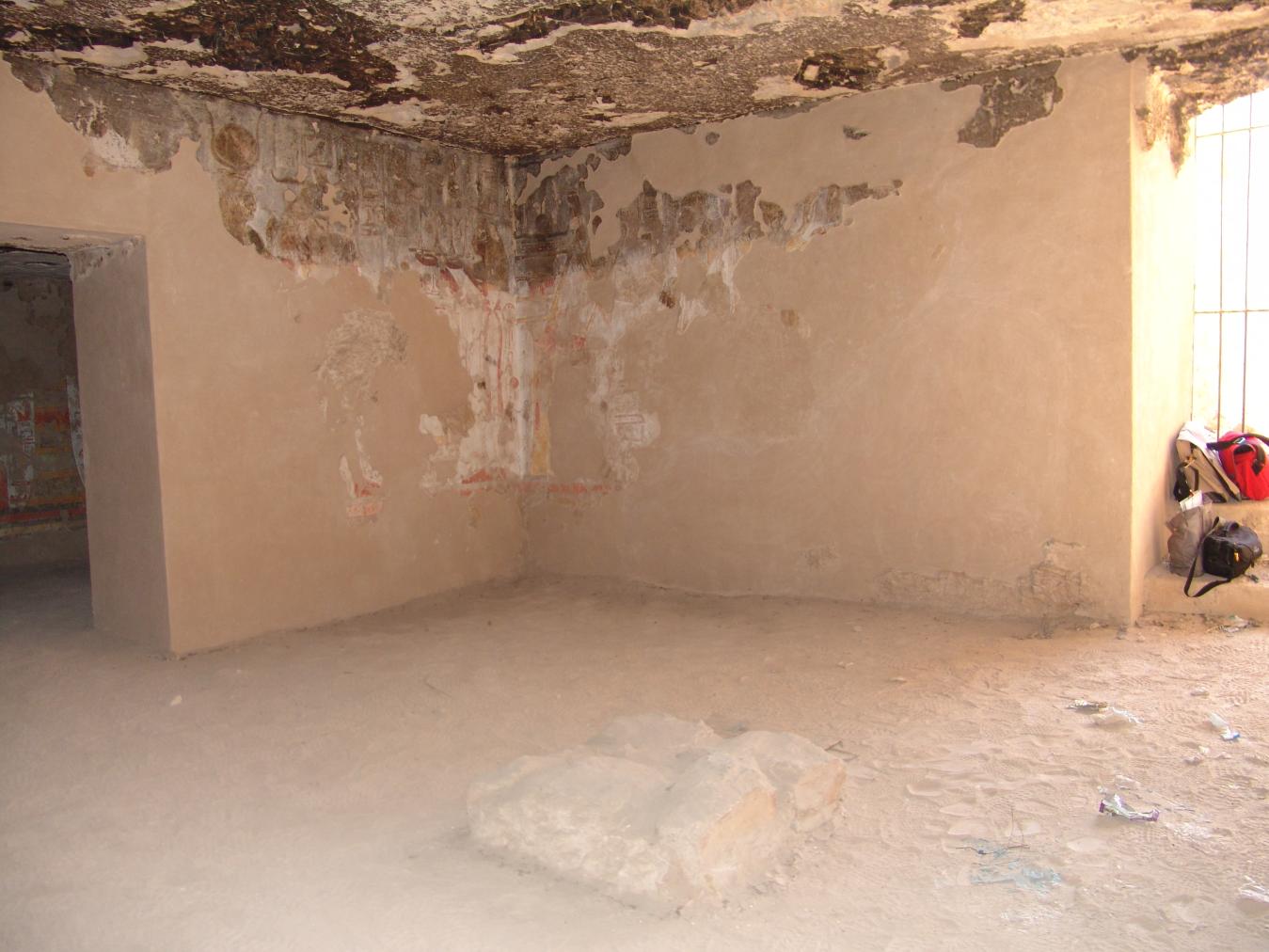
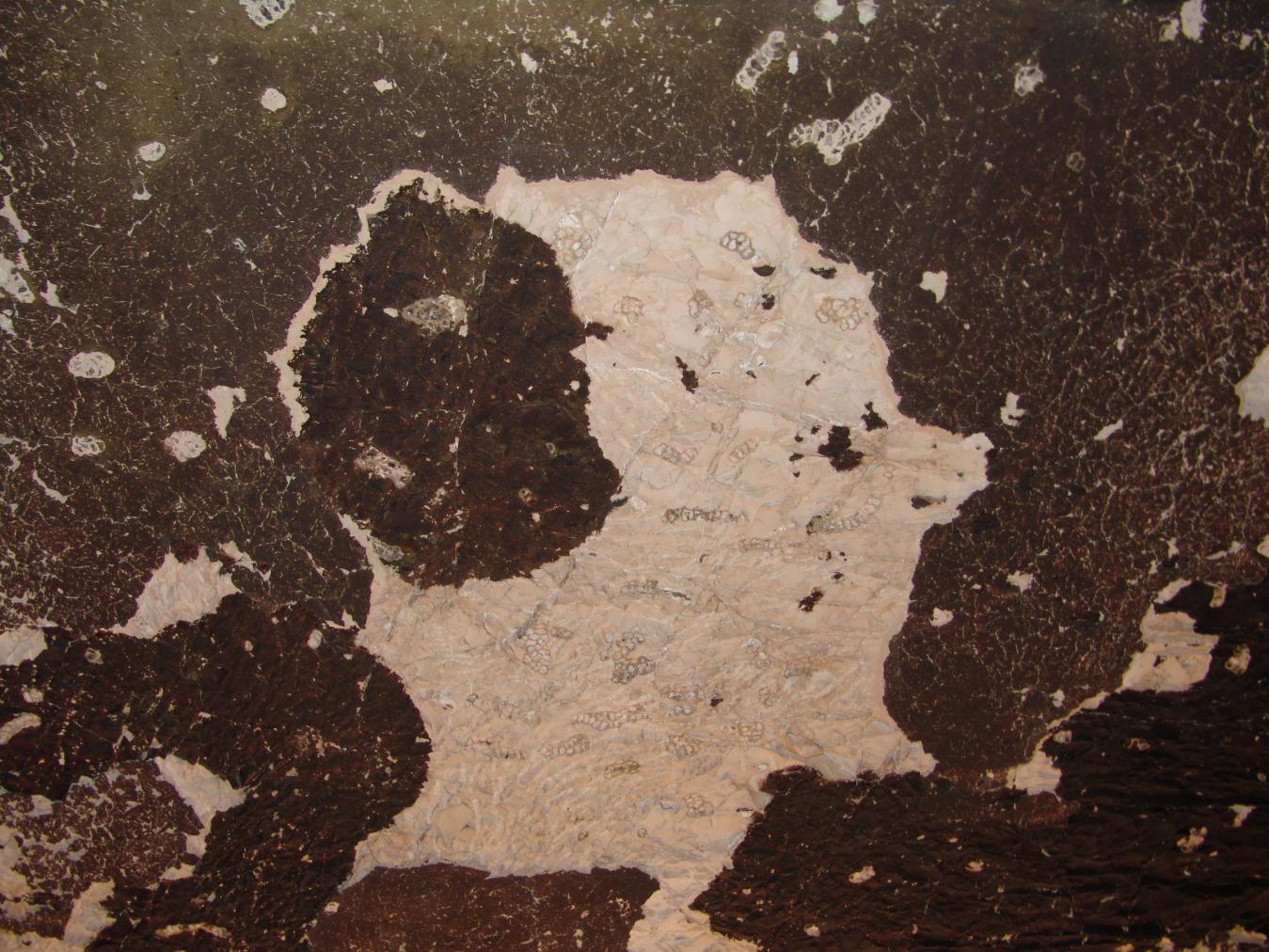
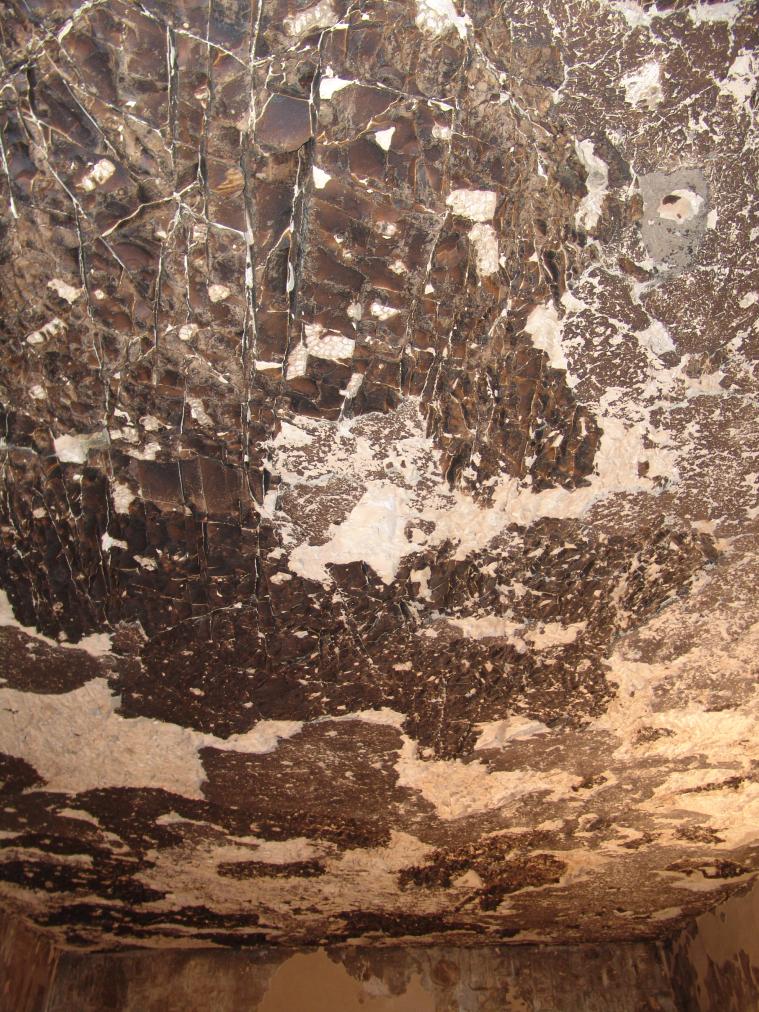
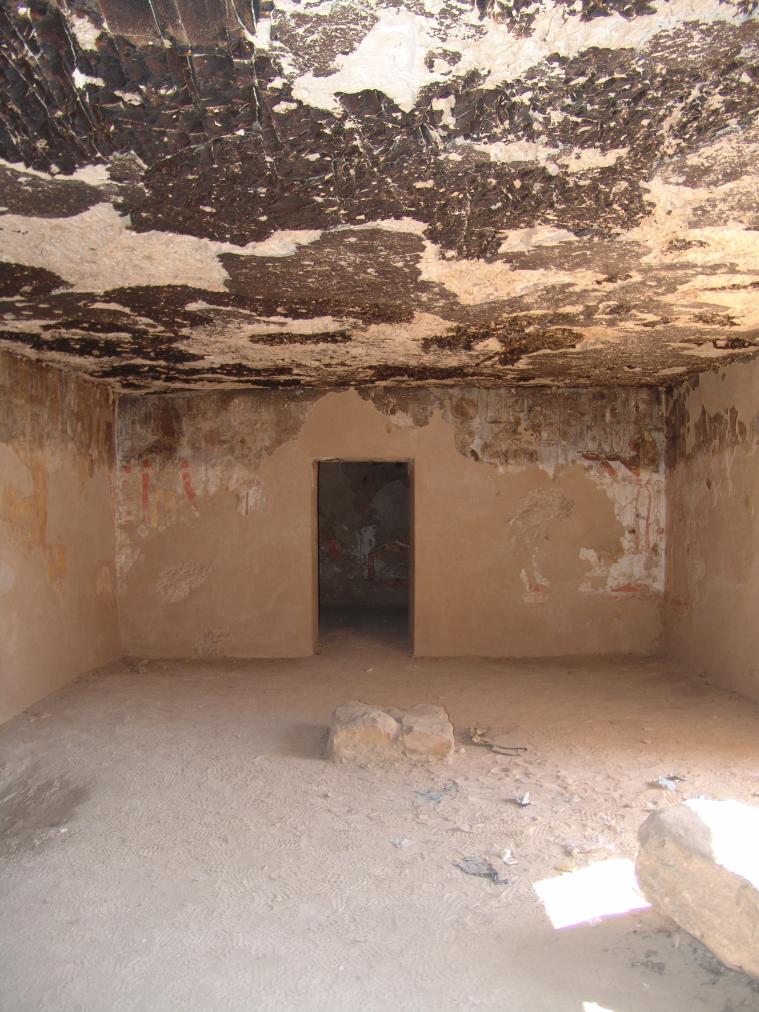
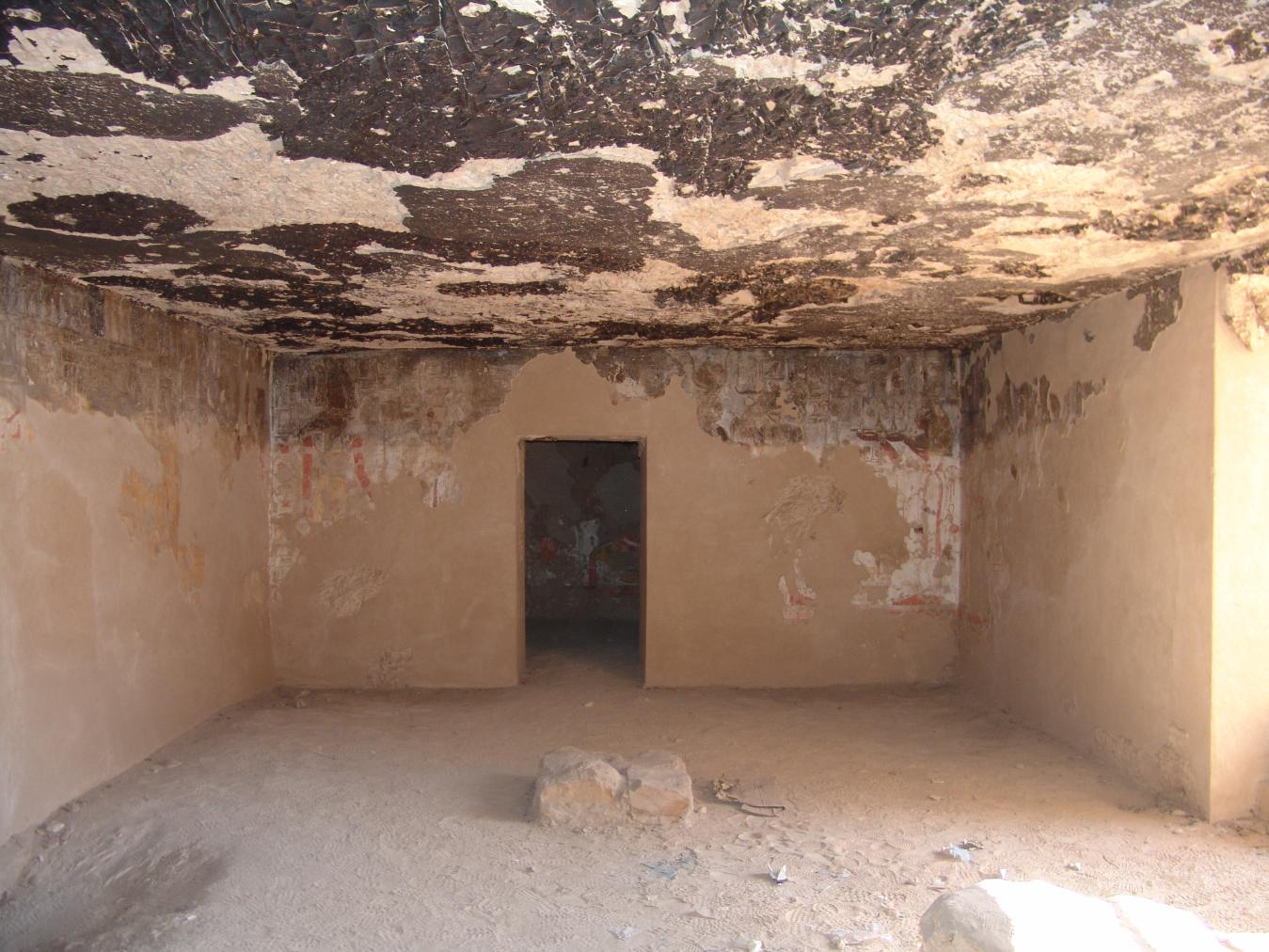
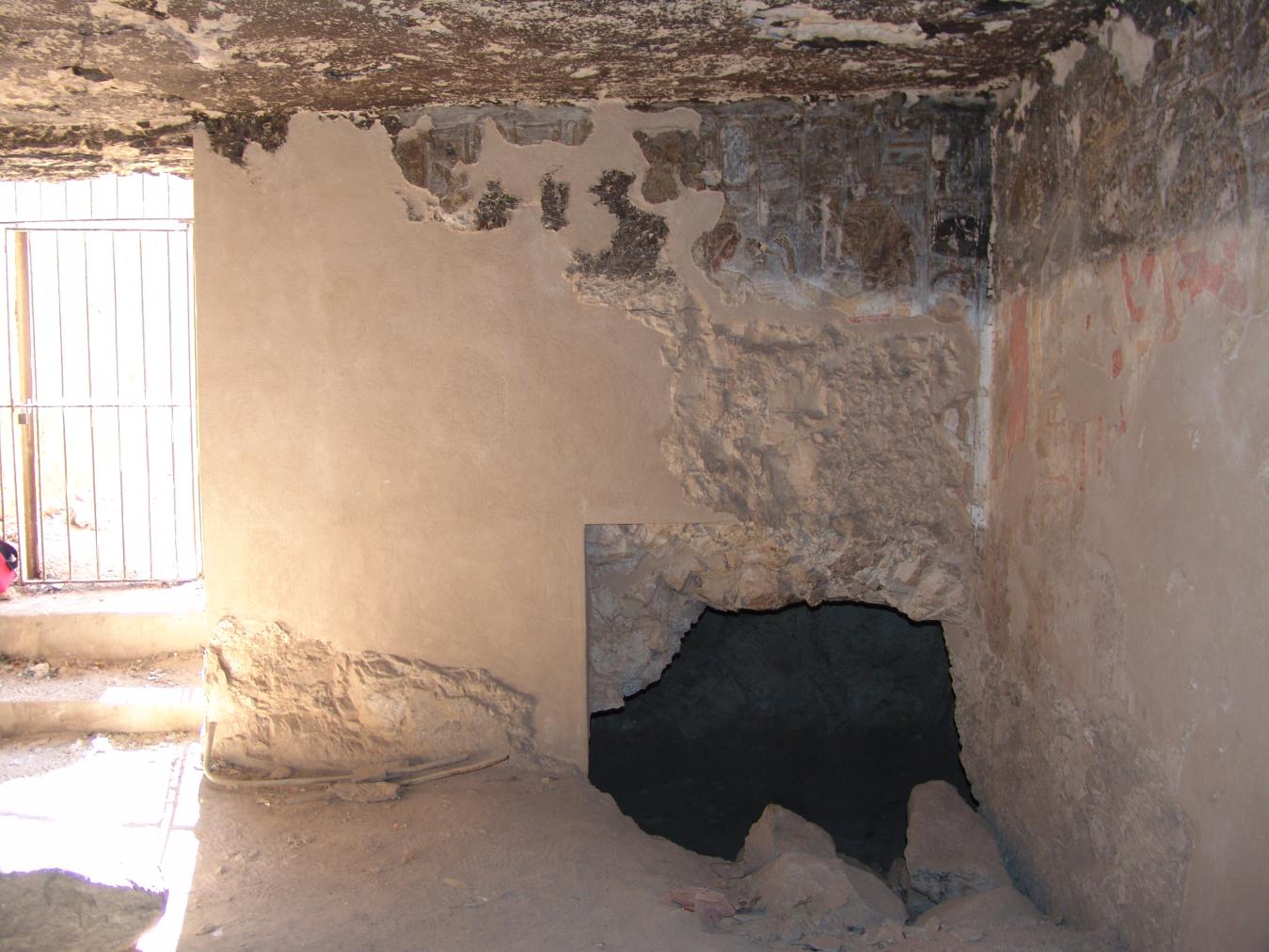
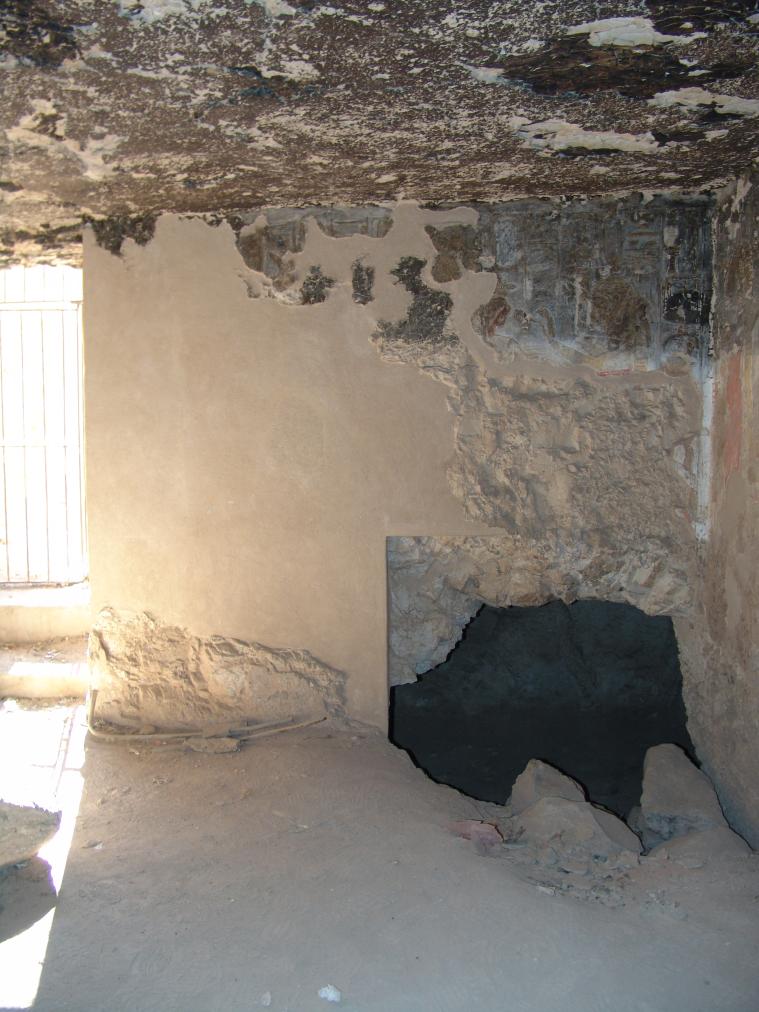
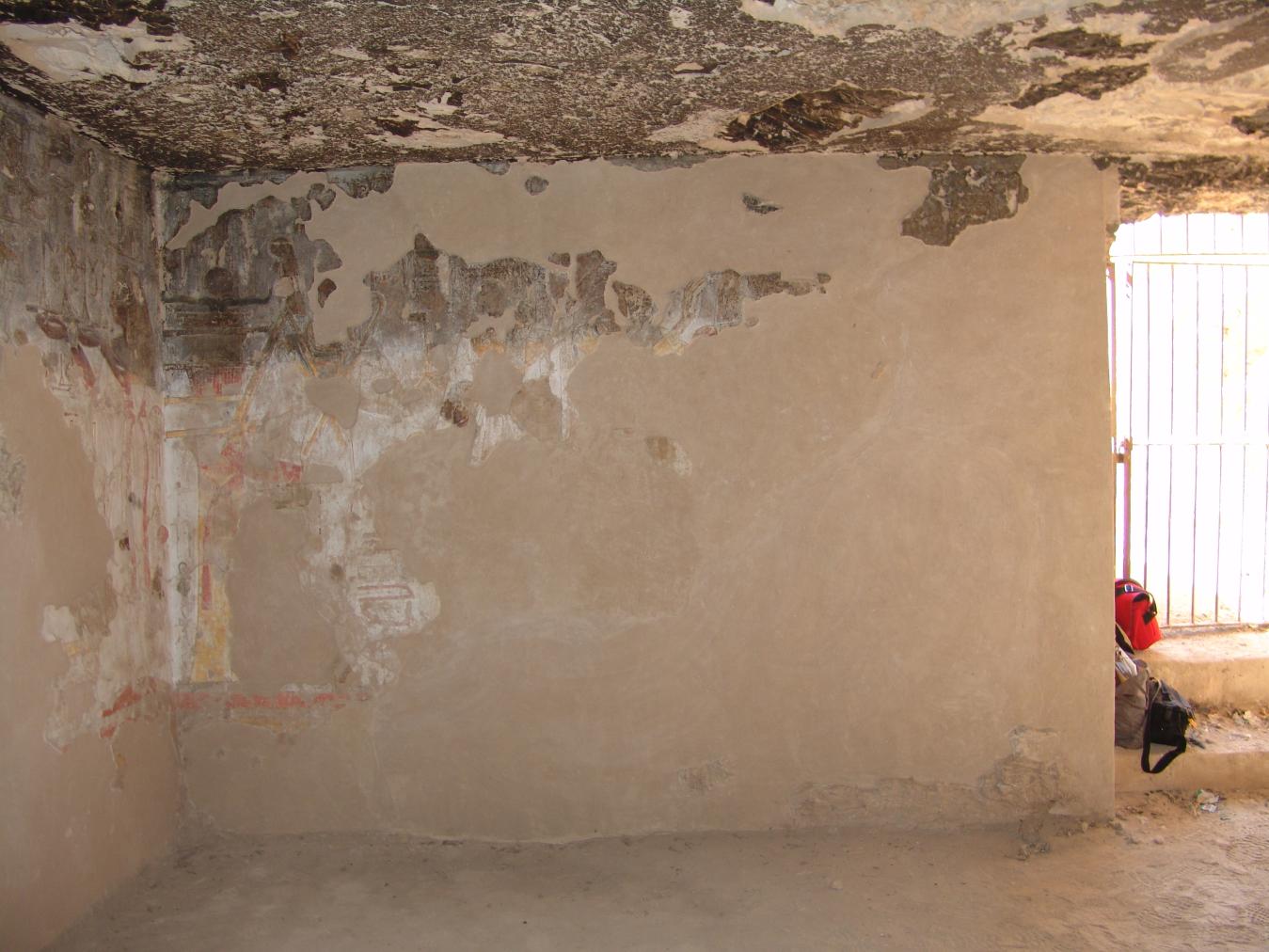
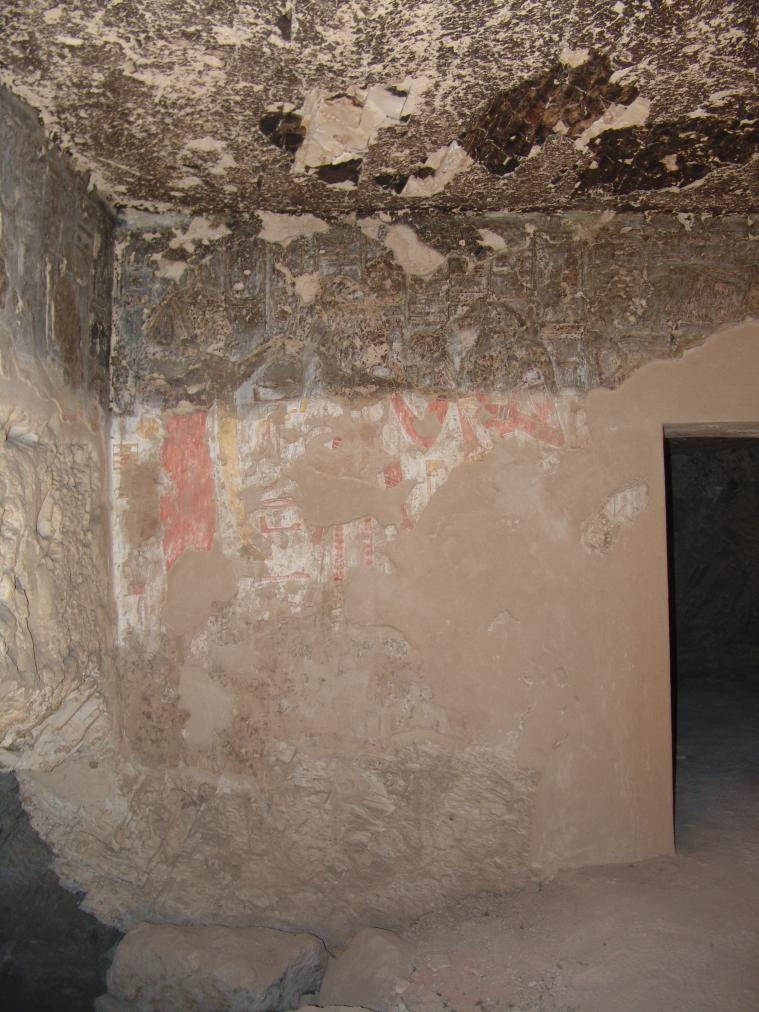
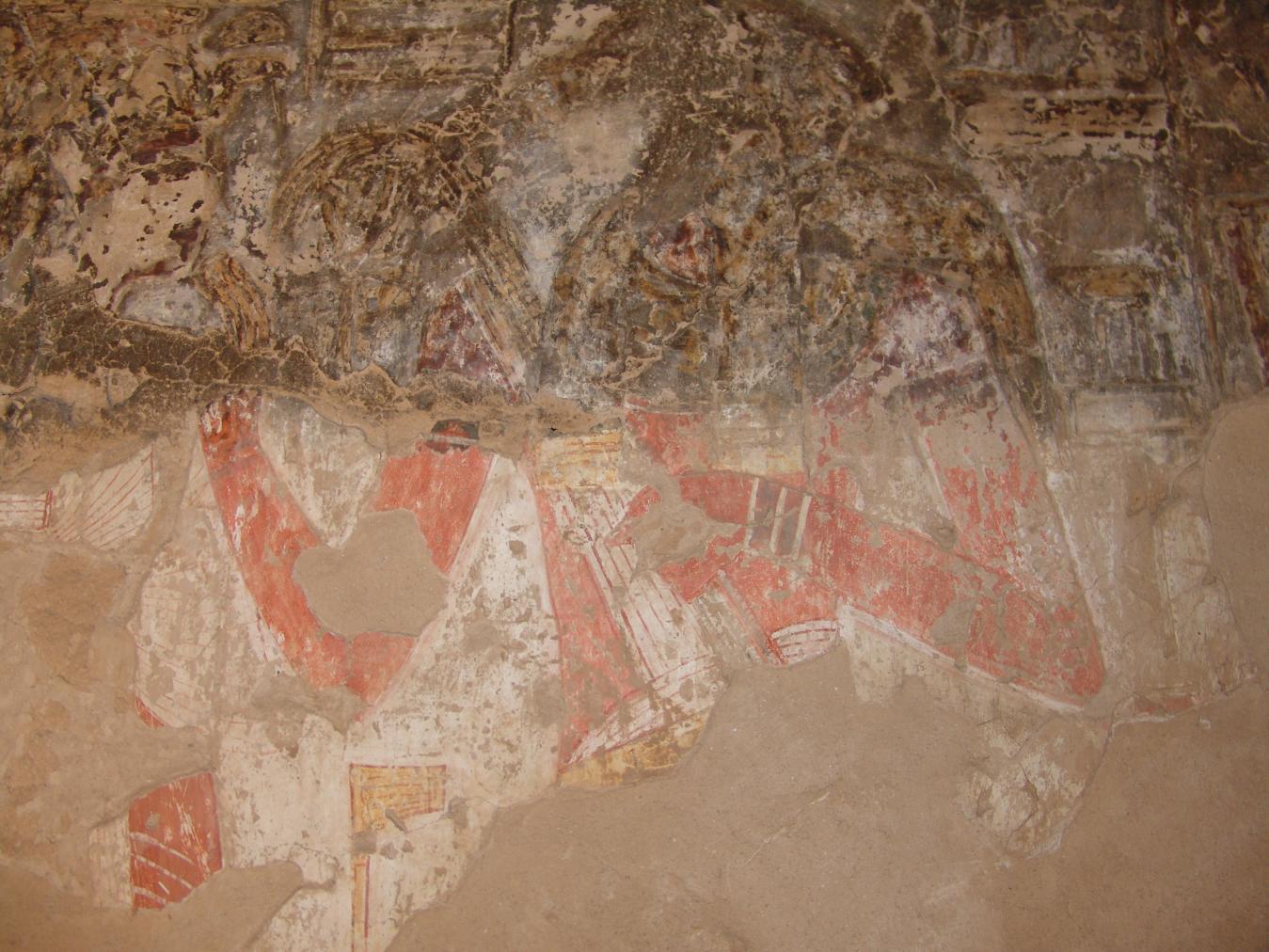
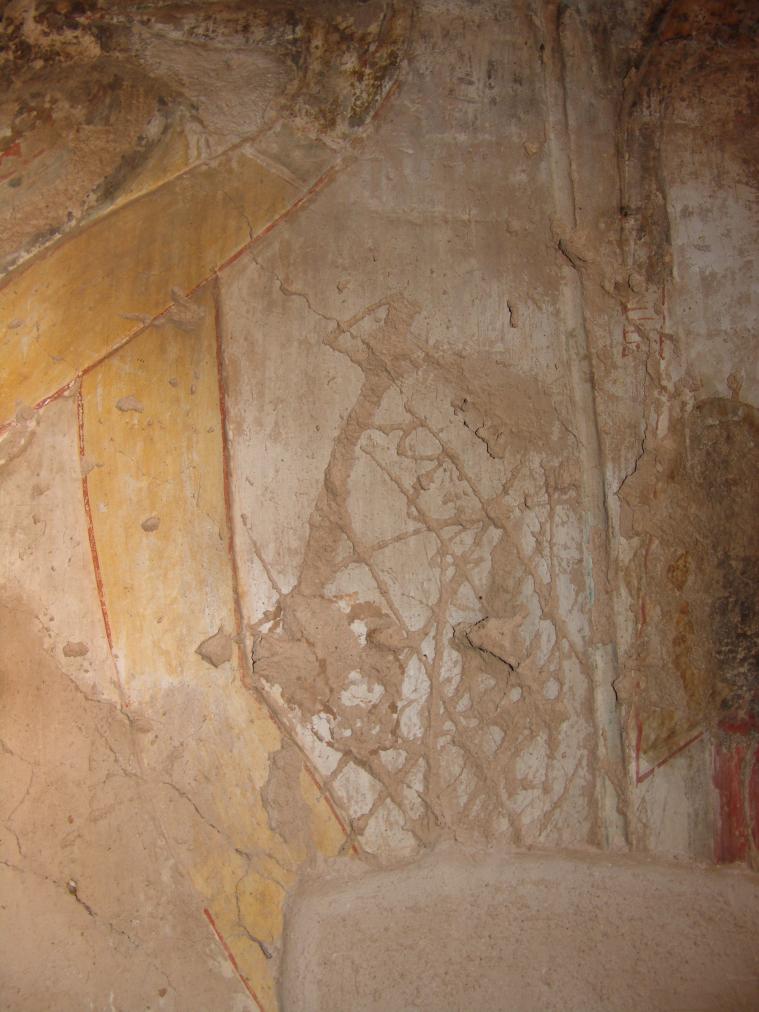
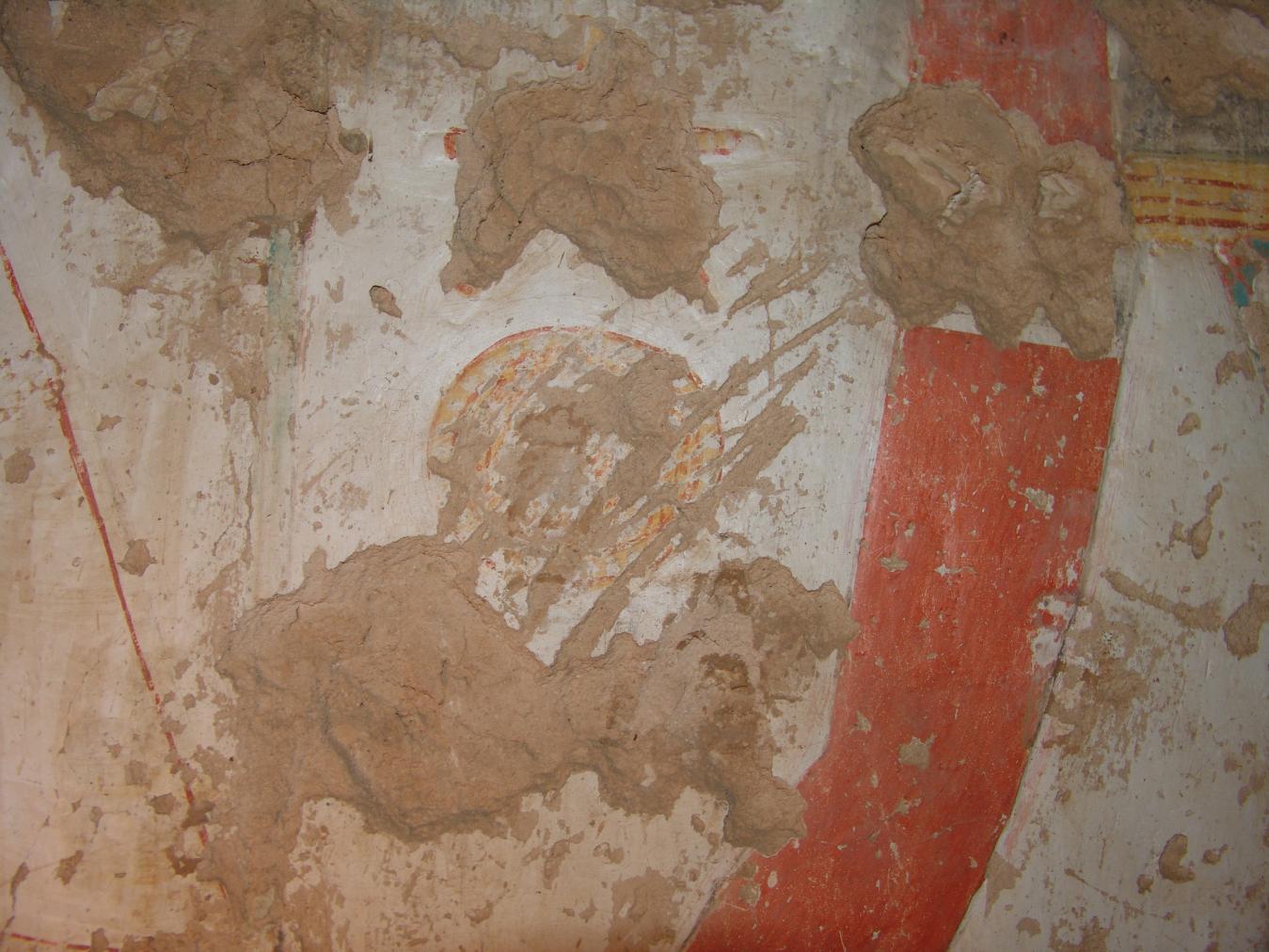
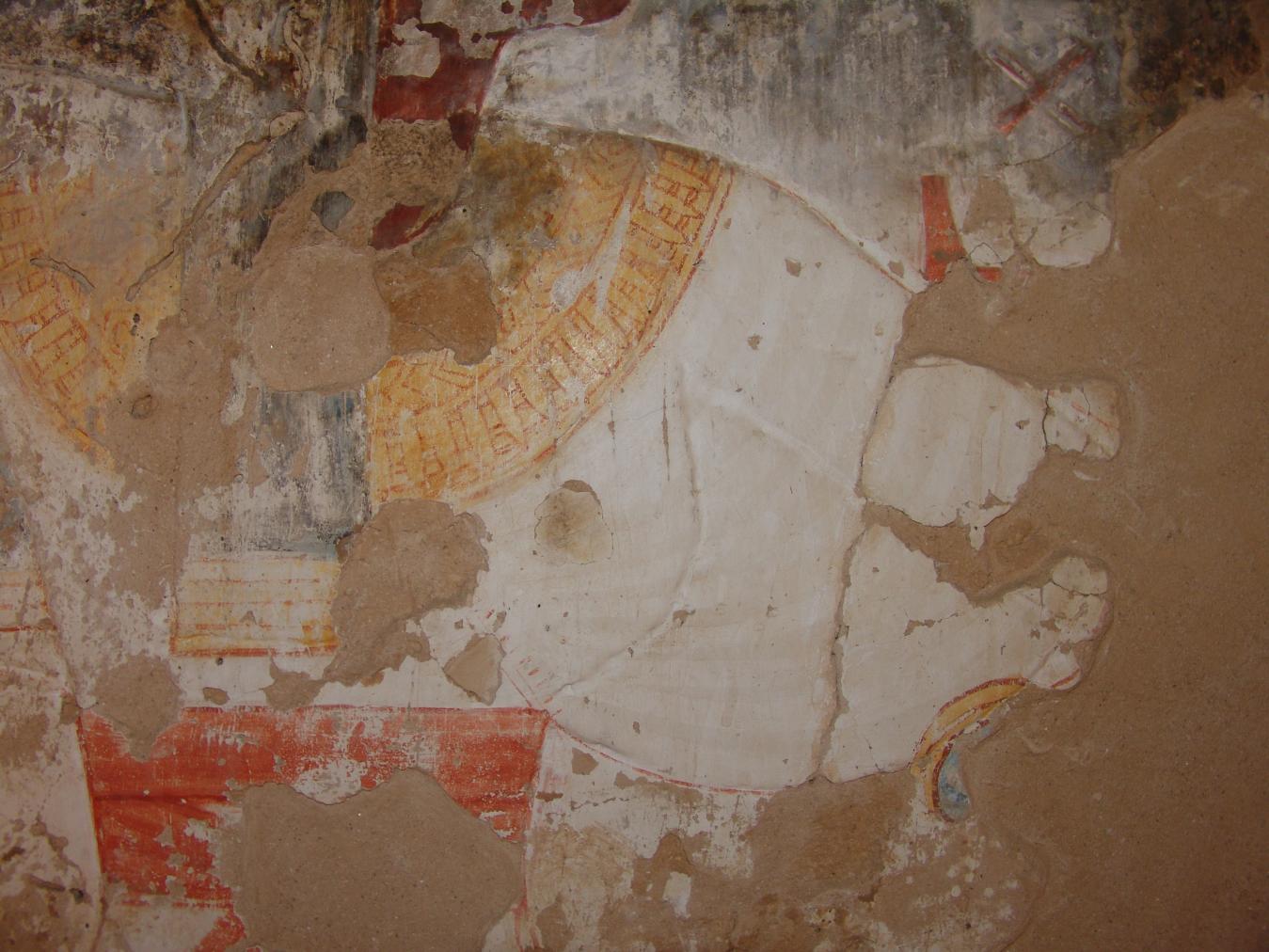
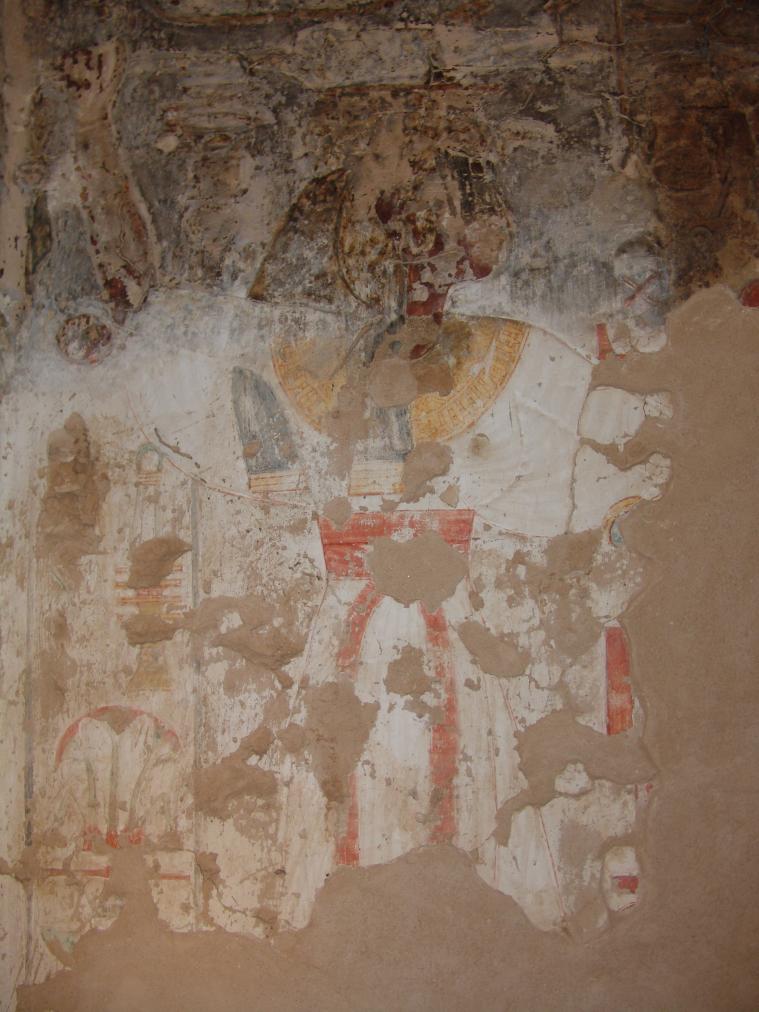
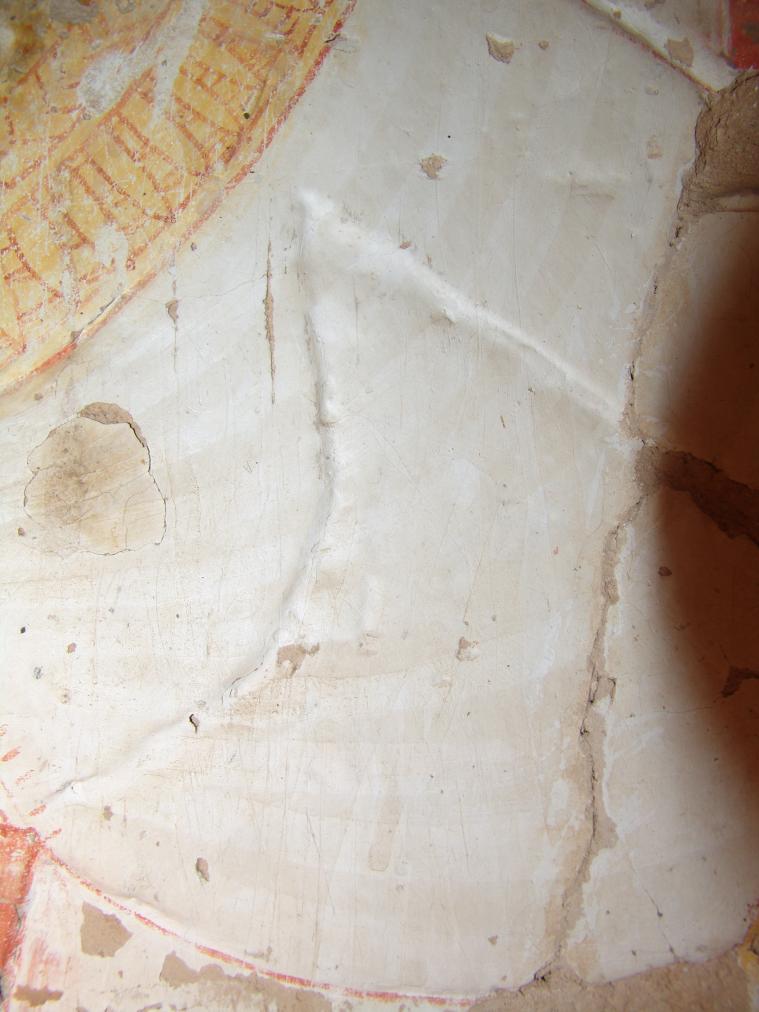
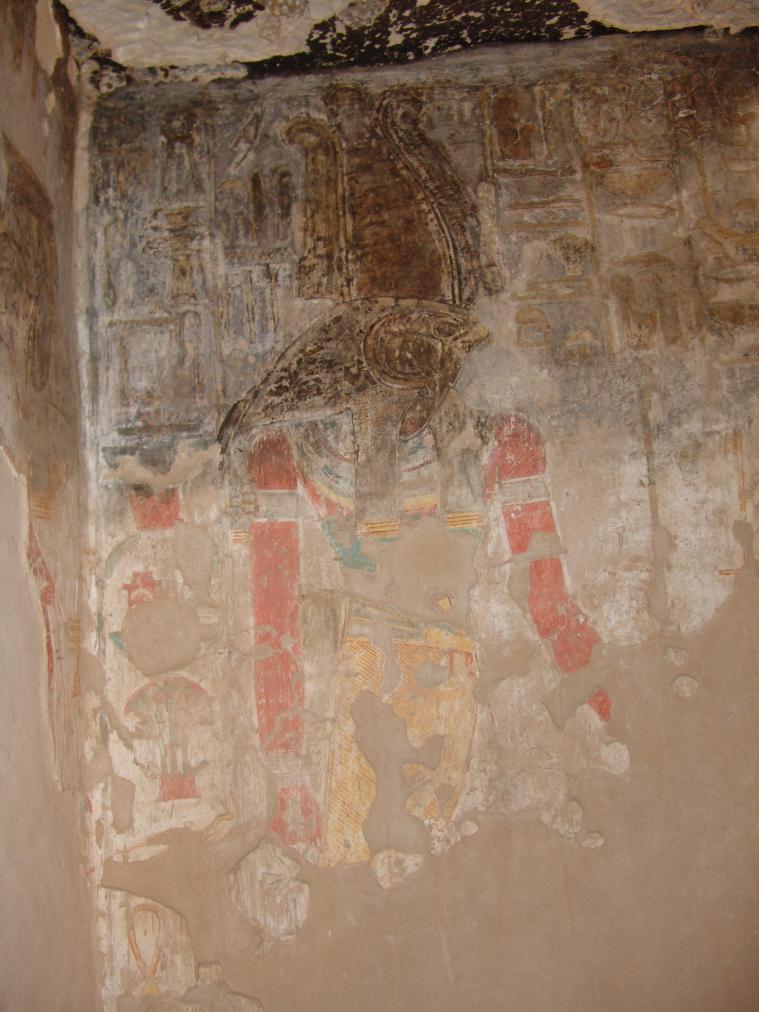
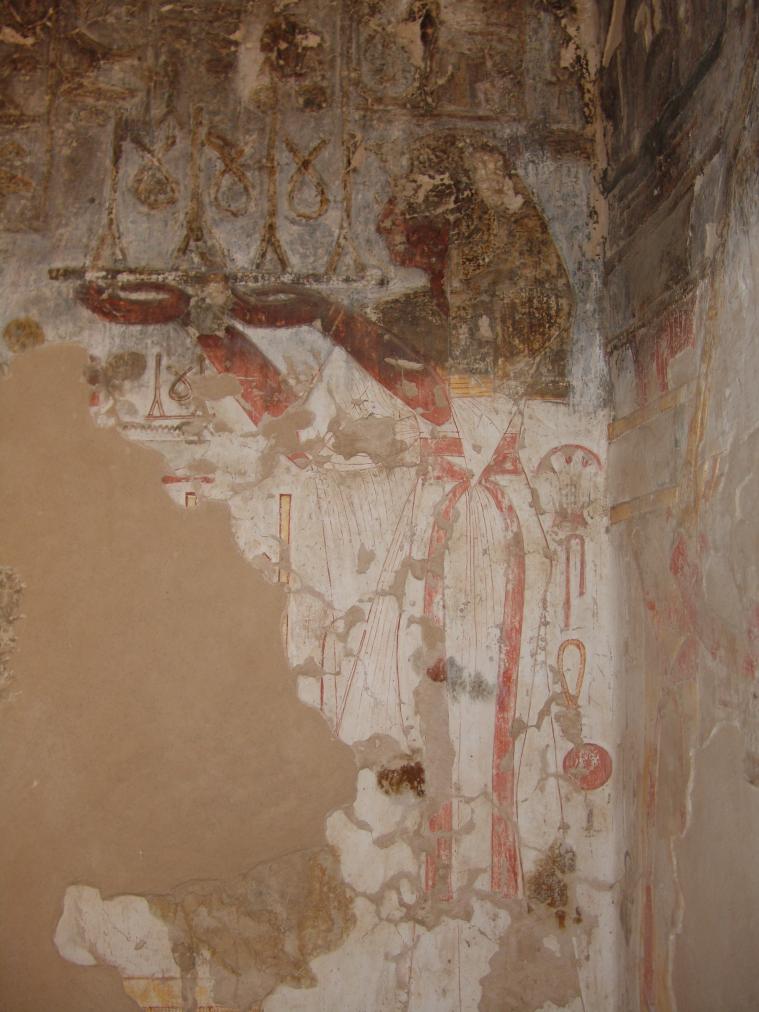
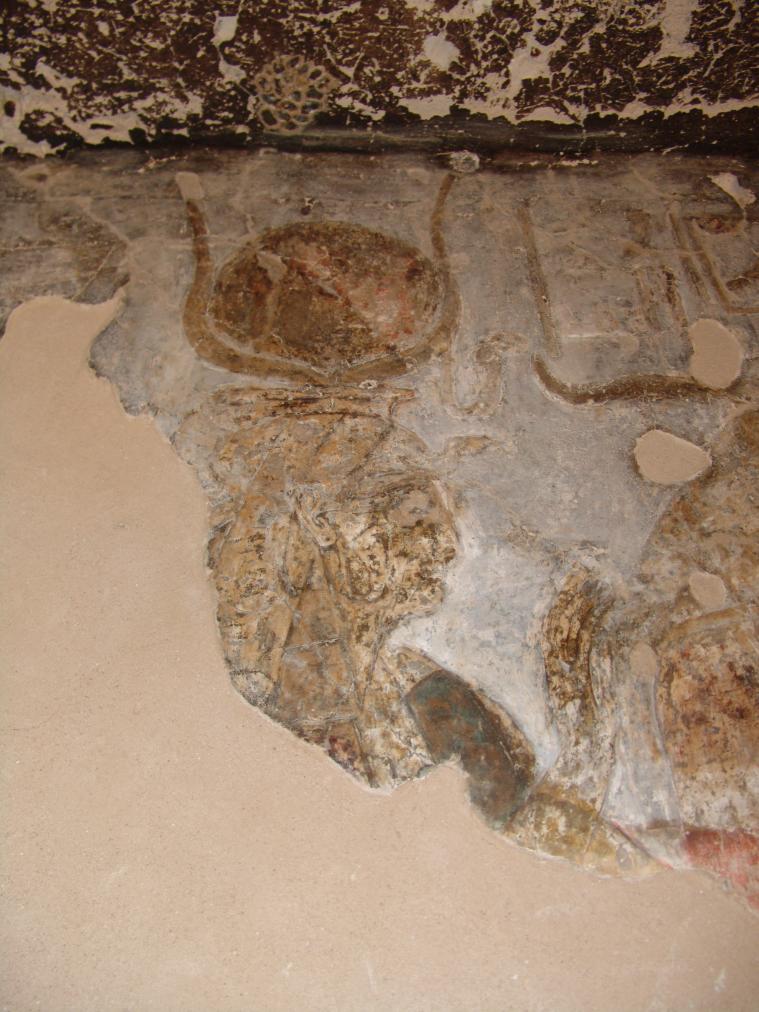
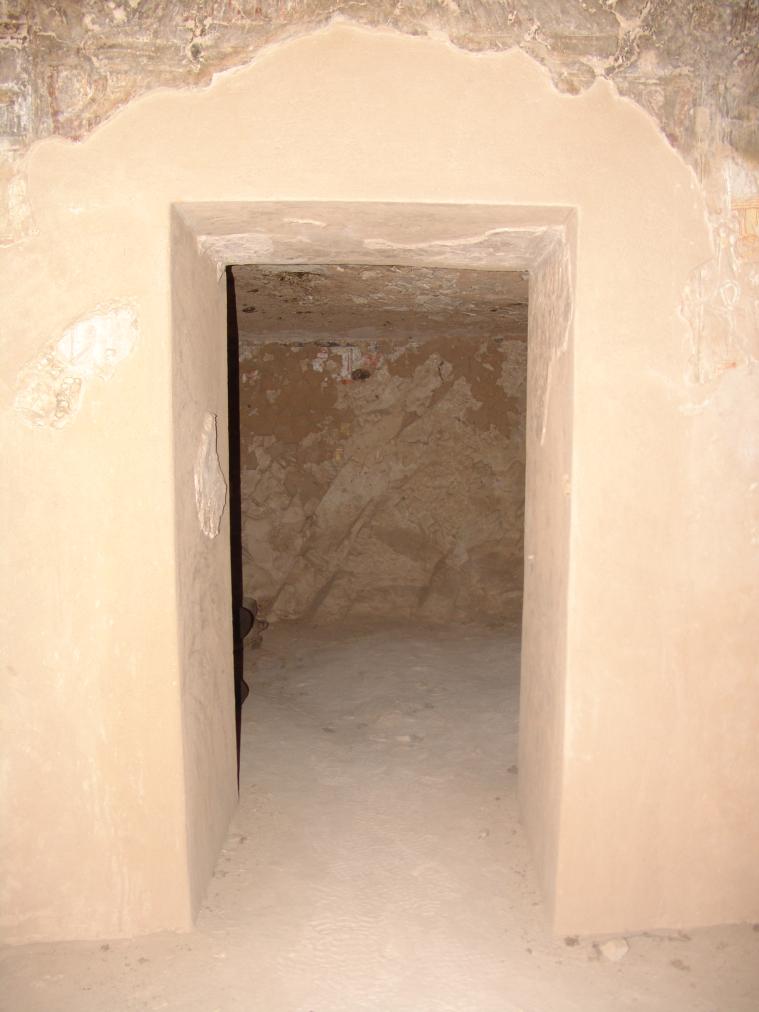
Gate Ba
See entire tombThis gate is cut into the western wall of pillared chamber B and provides access to a side chamber. The jambs have been reconstructed with a substantial amount of repair plaster. The extent of loss in this area suggests that the rock suffered severe damage possibly caused by flooding.
The only decoration that remains is on the lintel and includes an image of Nekhbet as a vulture with text.



Side chamber Ba
See entire tombThis side chamber lies to the west of the pillared chamber. The walls have limited areas of blackening from fire, indicating that it may have been closed off and protected from fire. The decoration in this side chamber suffers from severe cracking of the entire plaster stratigraphy. There is substantial loss of the upper painted plaster layer.
The only surviving decoration is on the eastern wall and is a very fractured image of an unidentifiable deity.
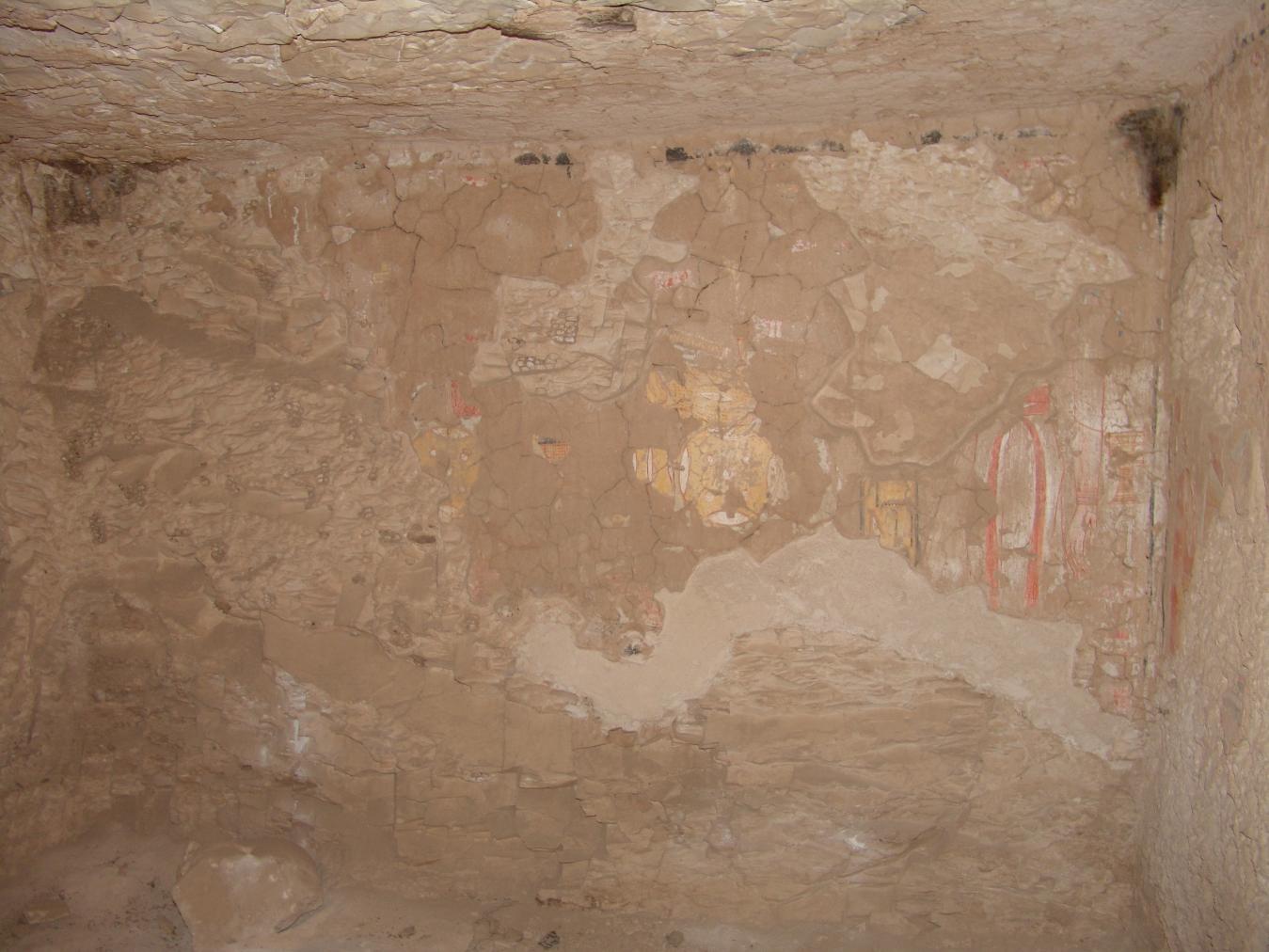
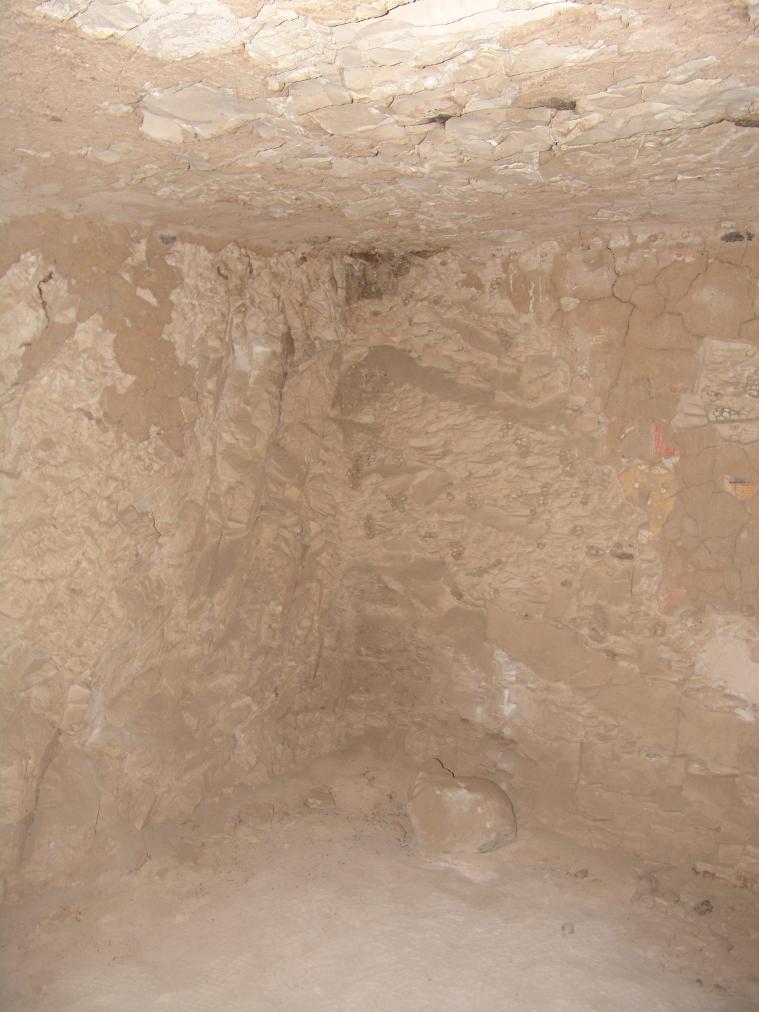
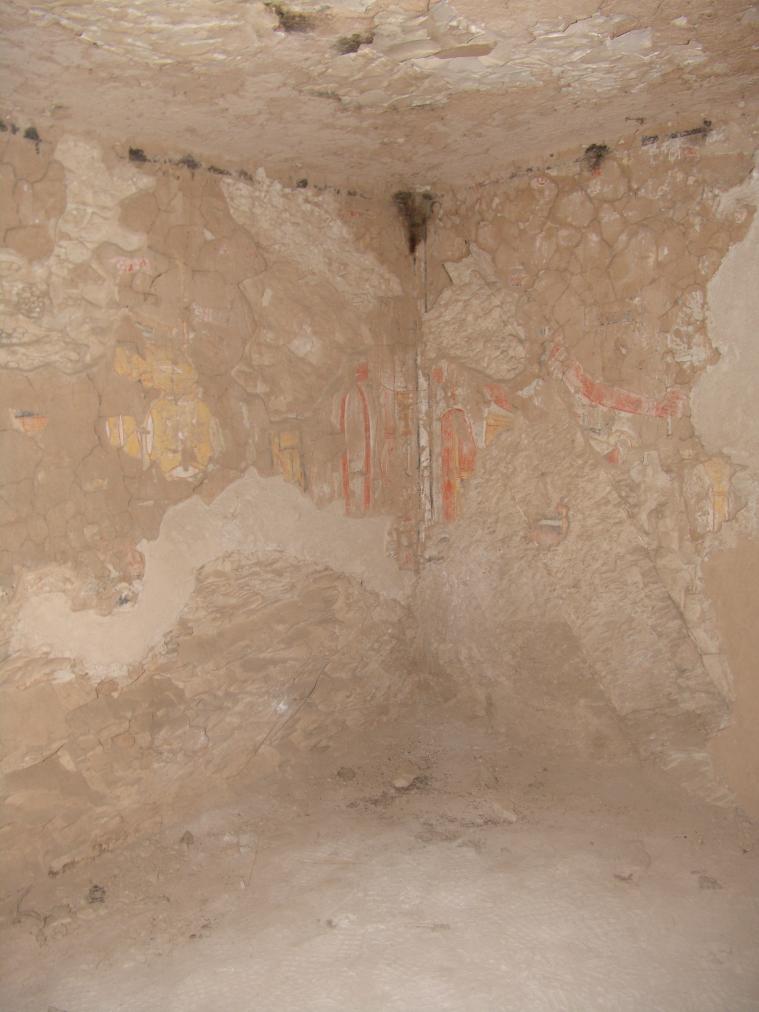
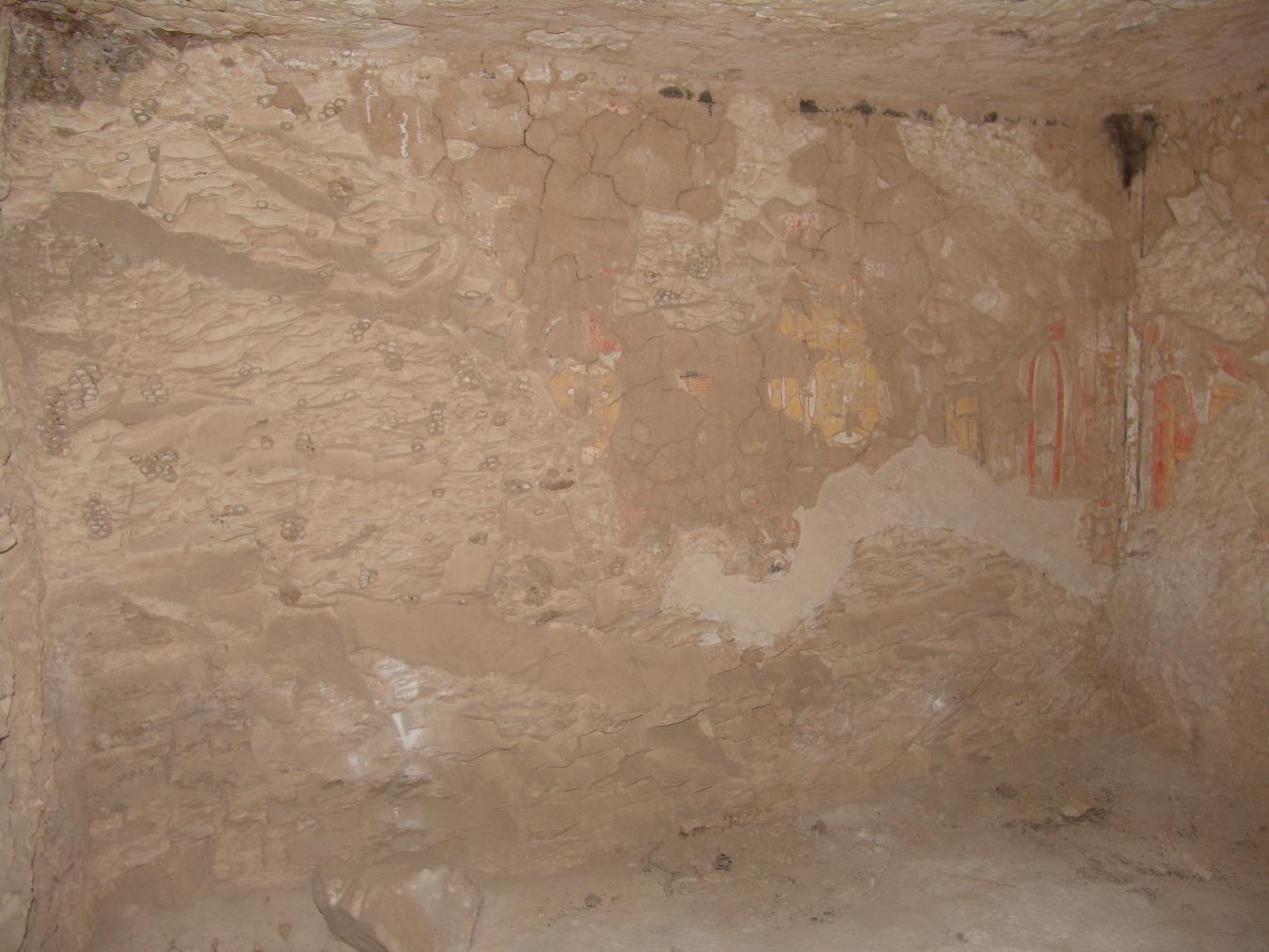
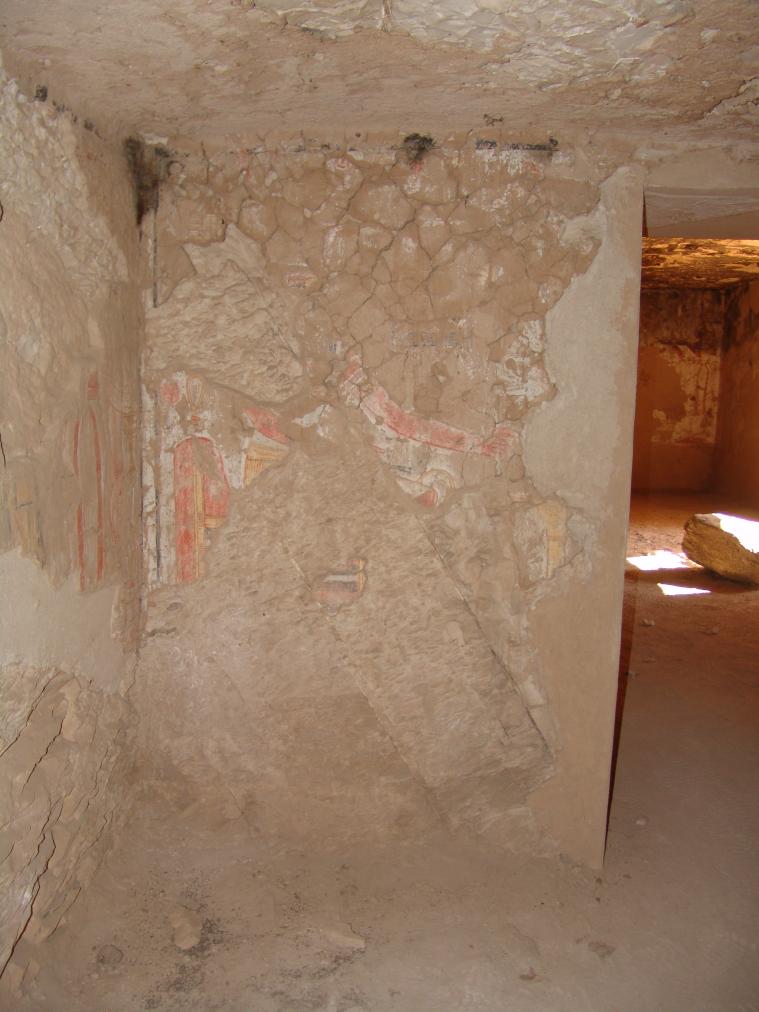
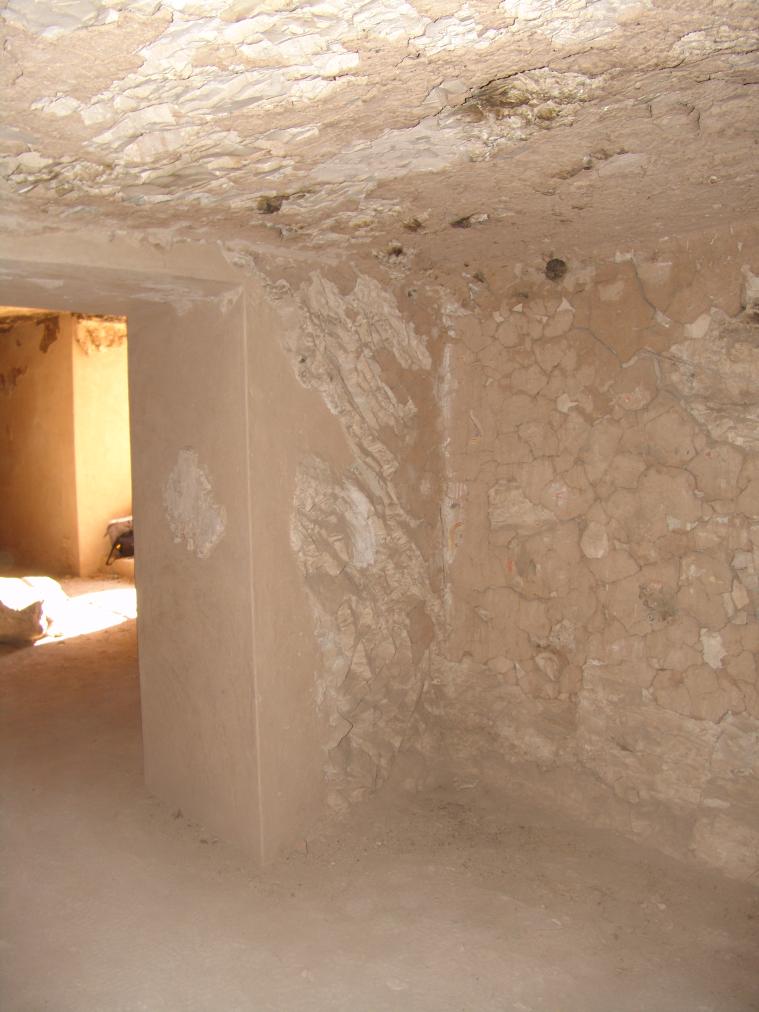
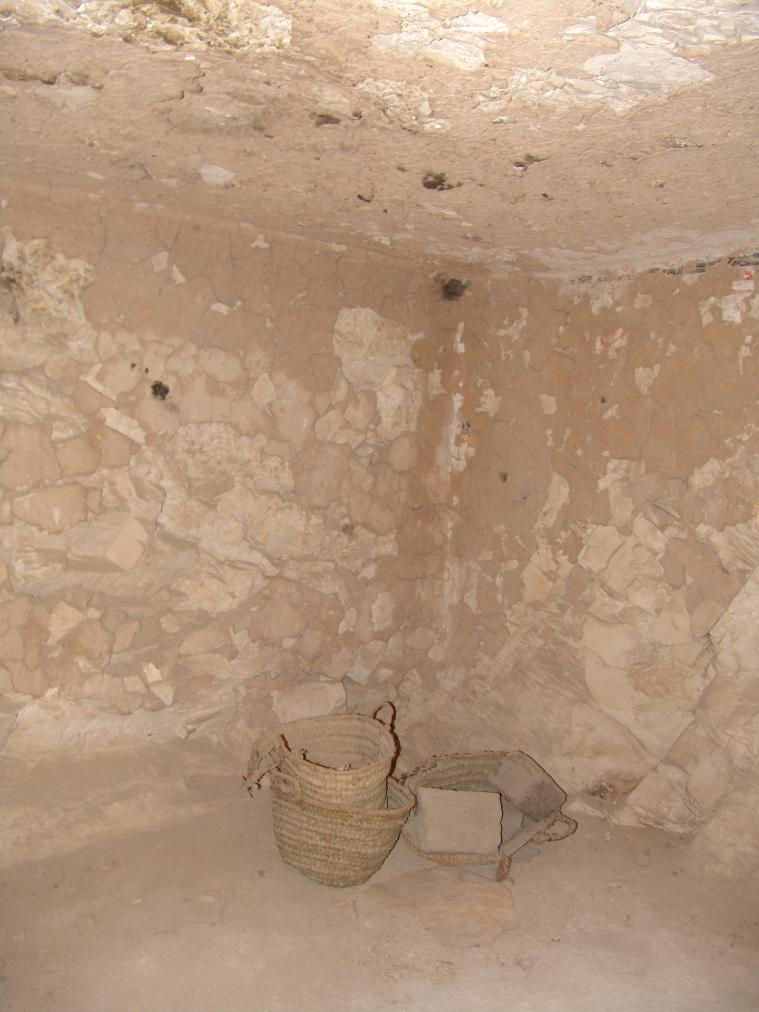
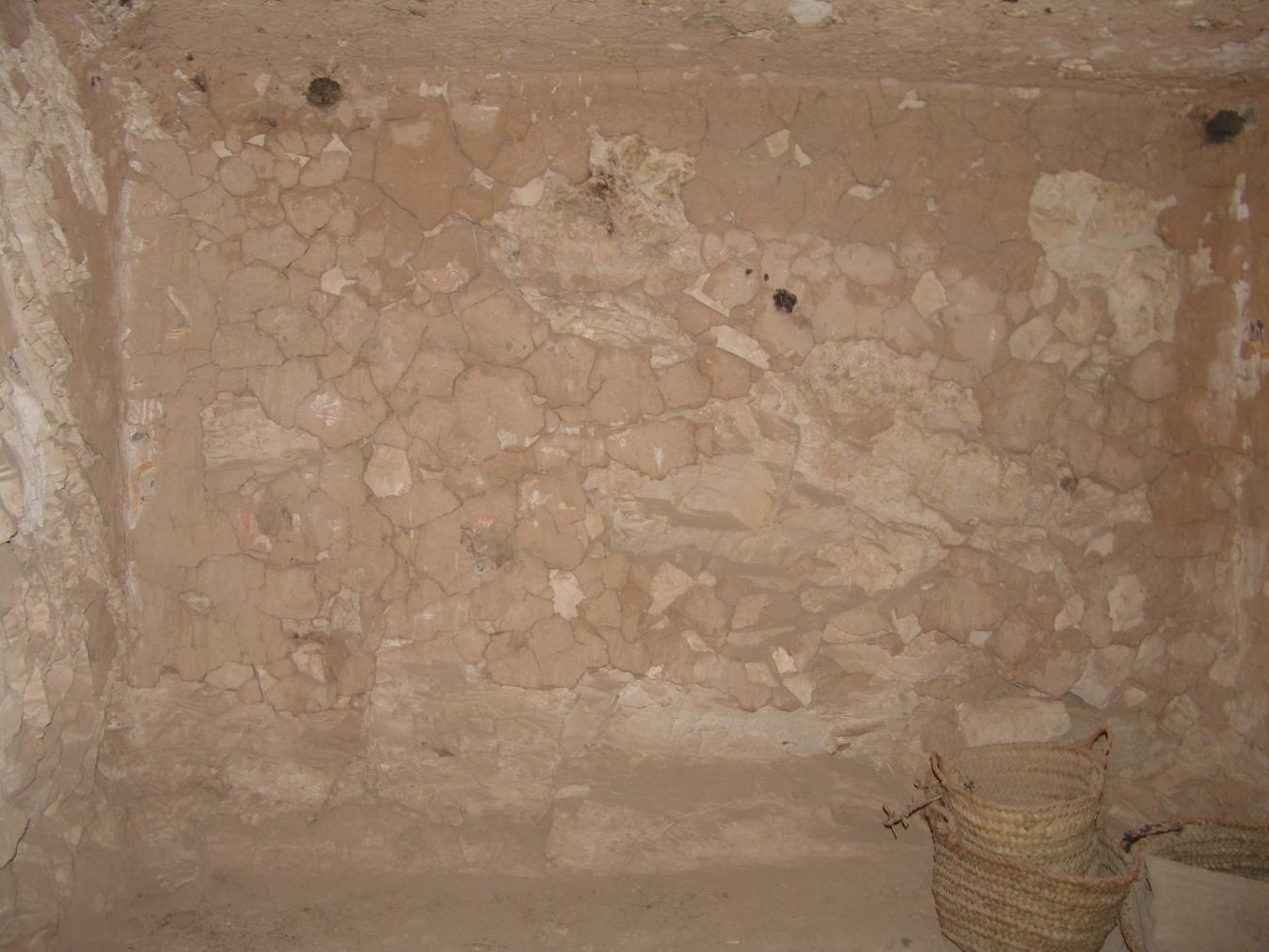
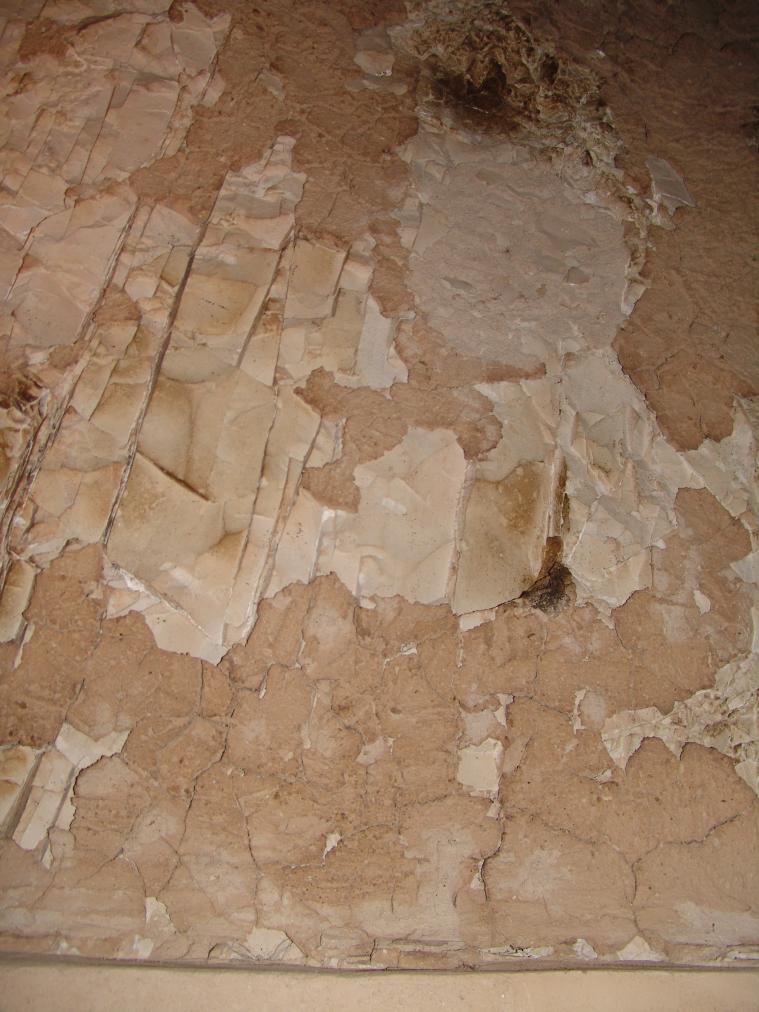
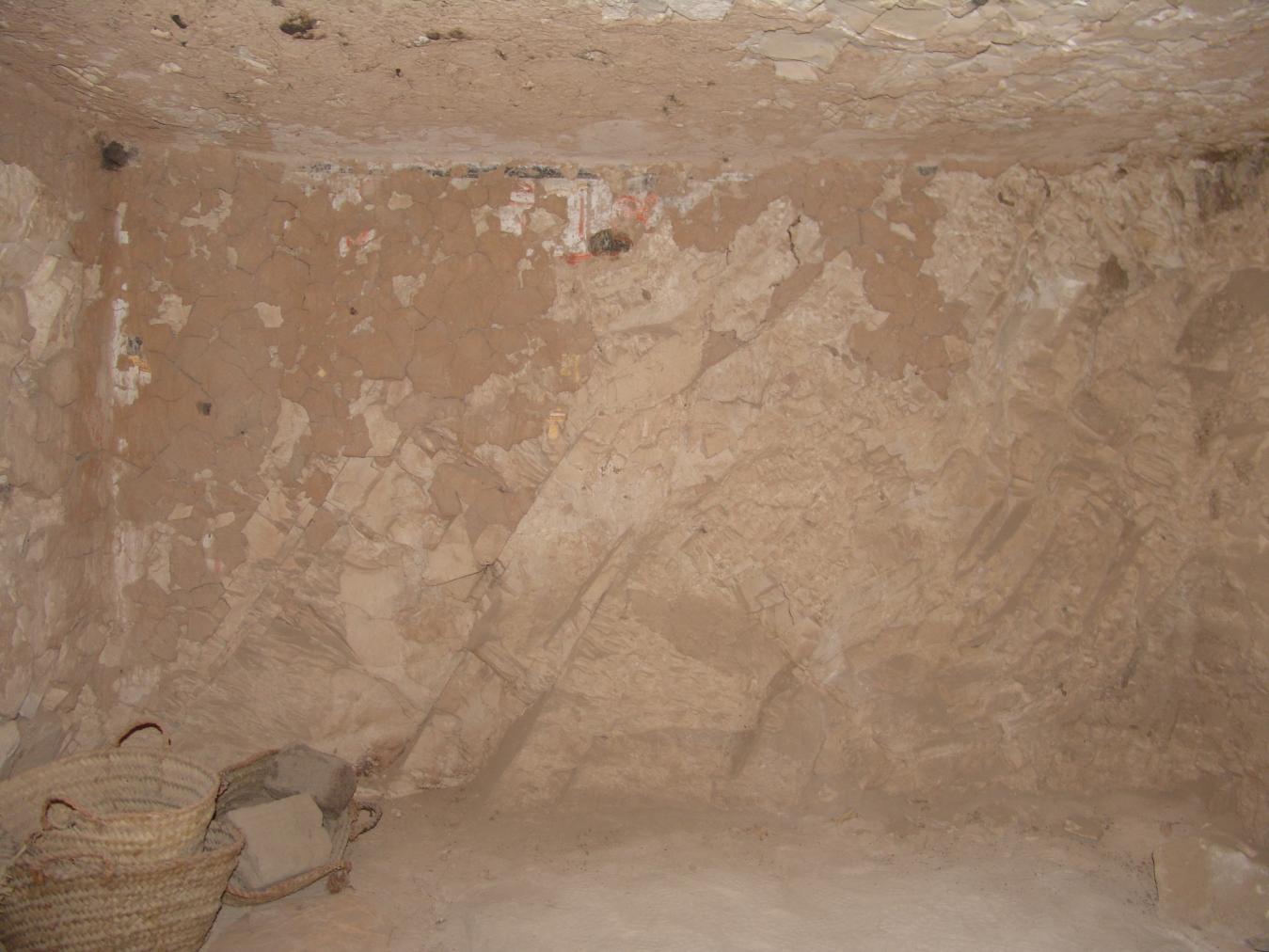
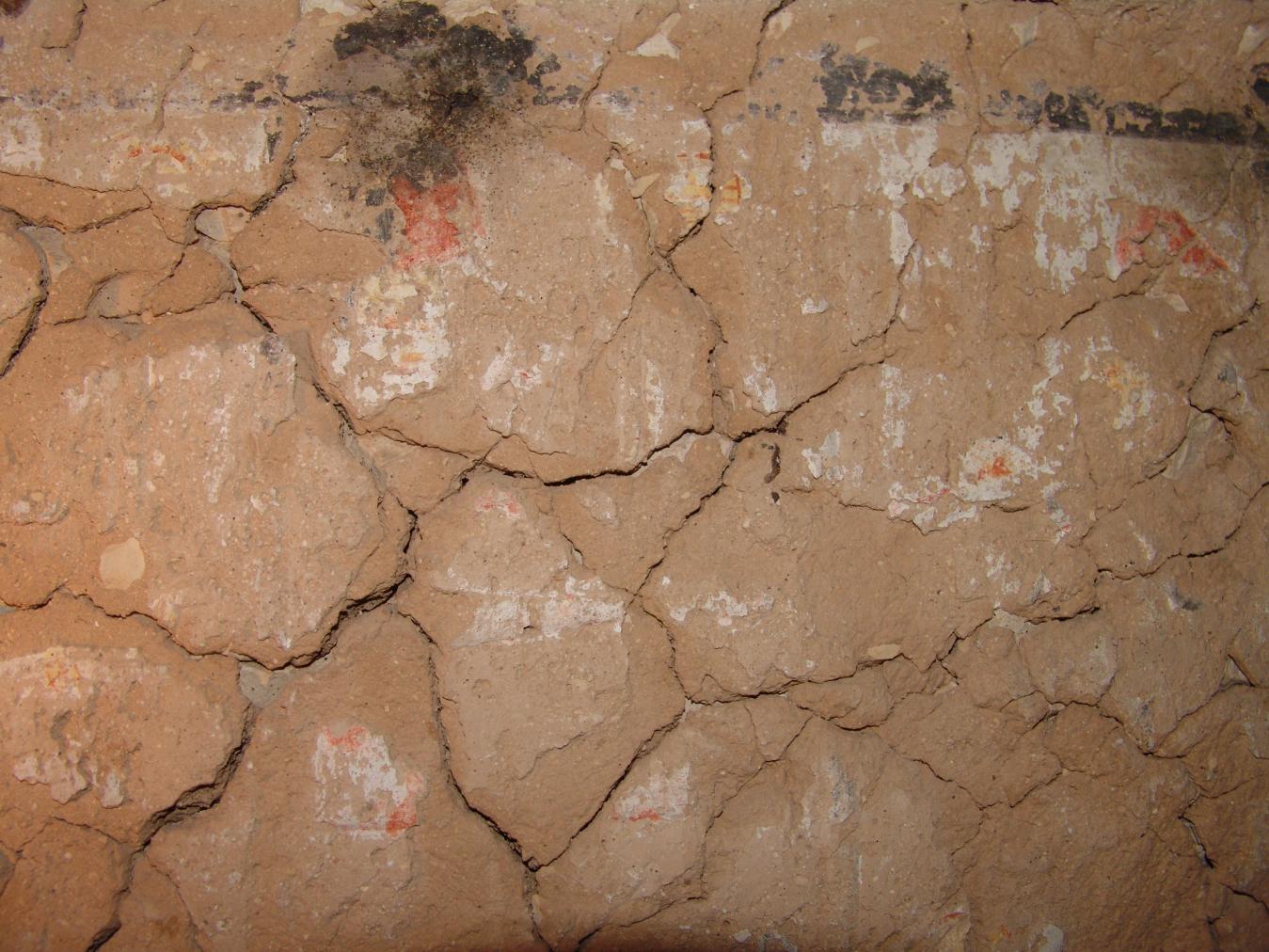
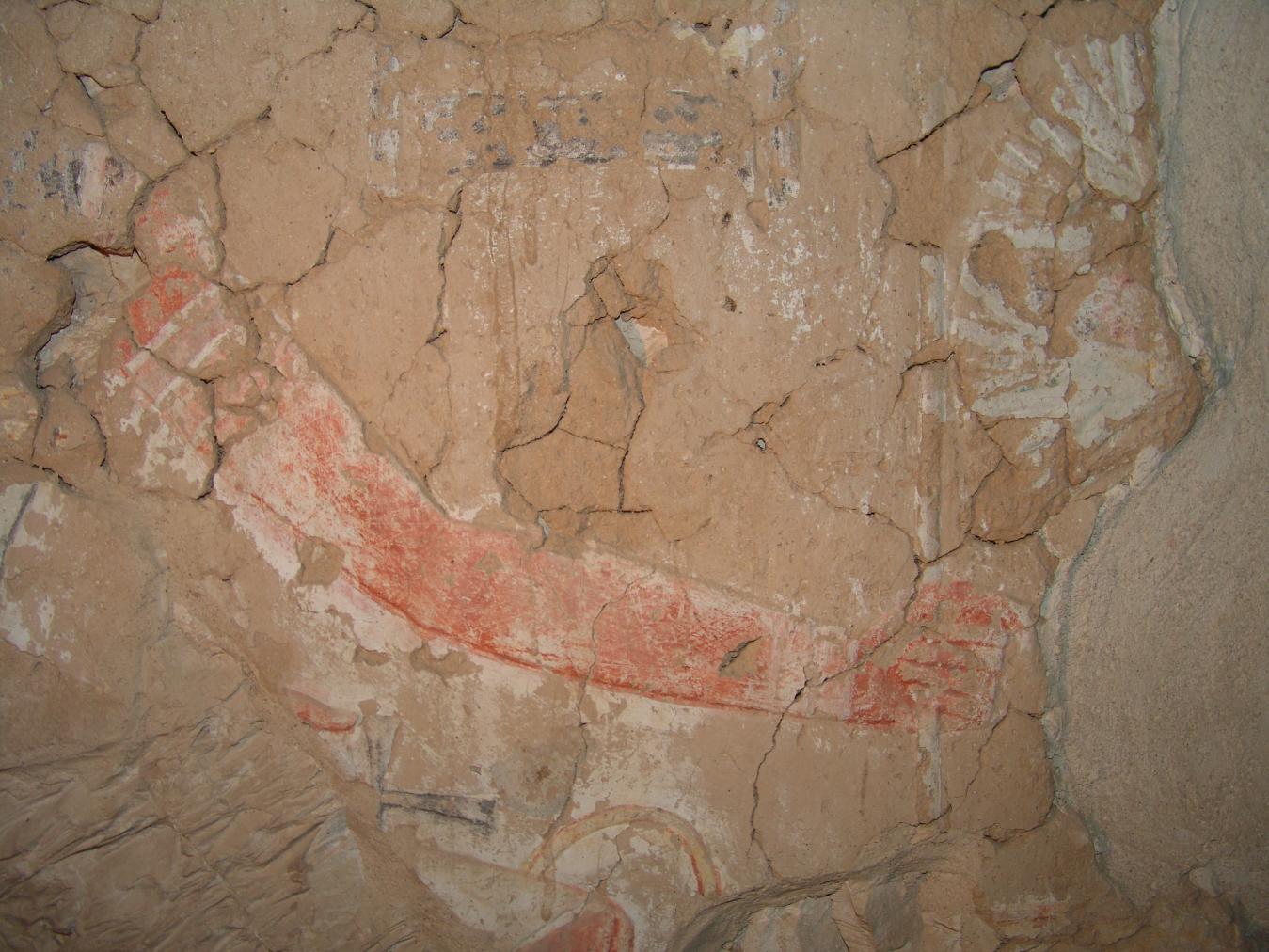
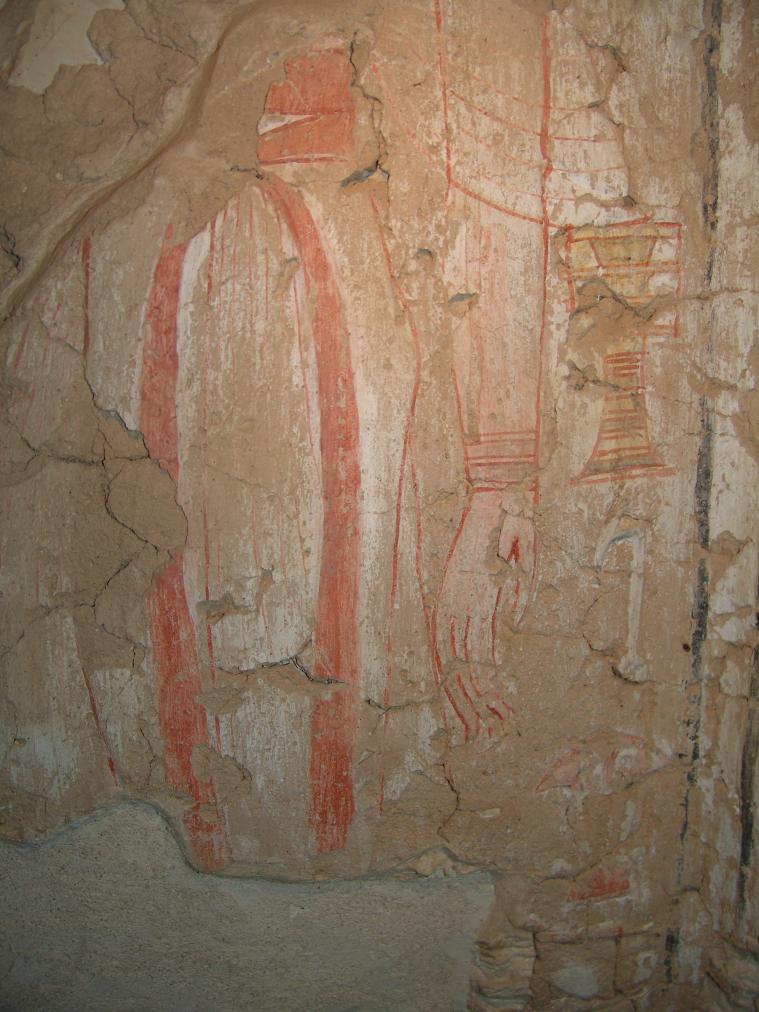
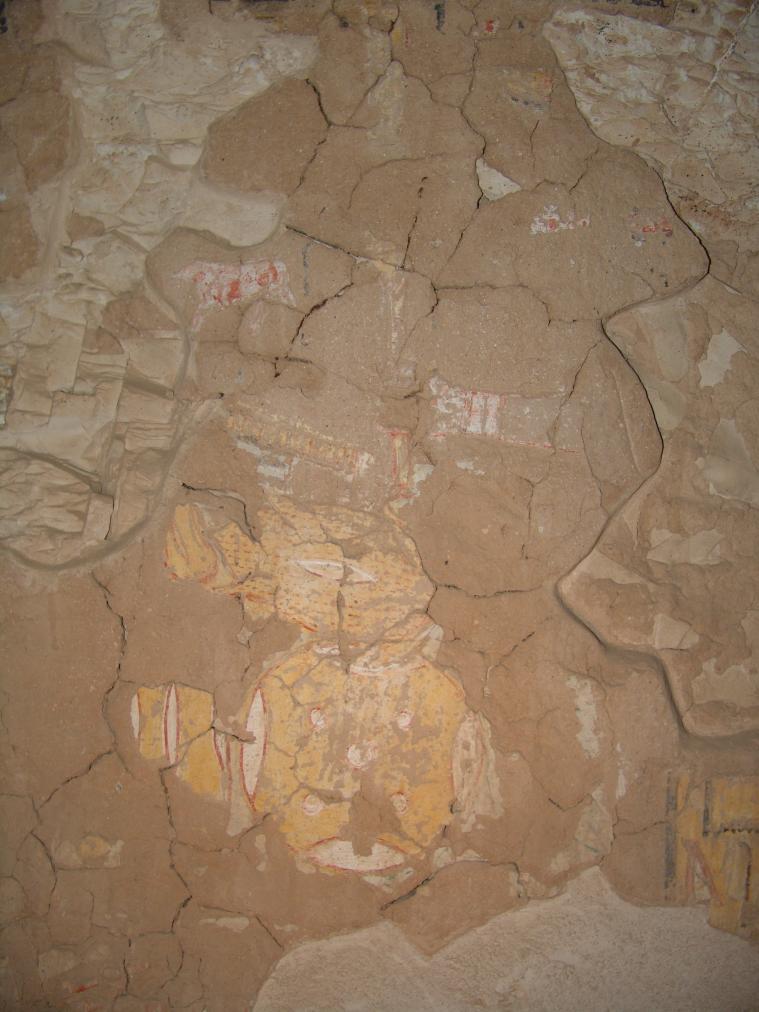
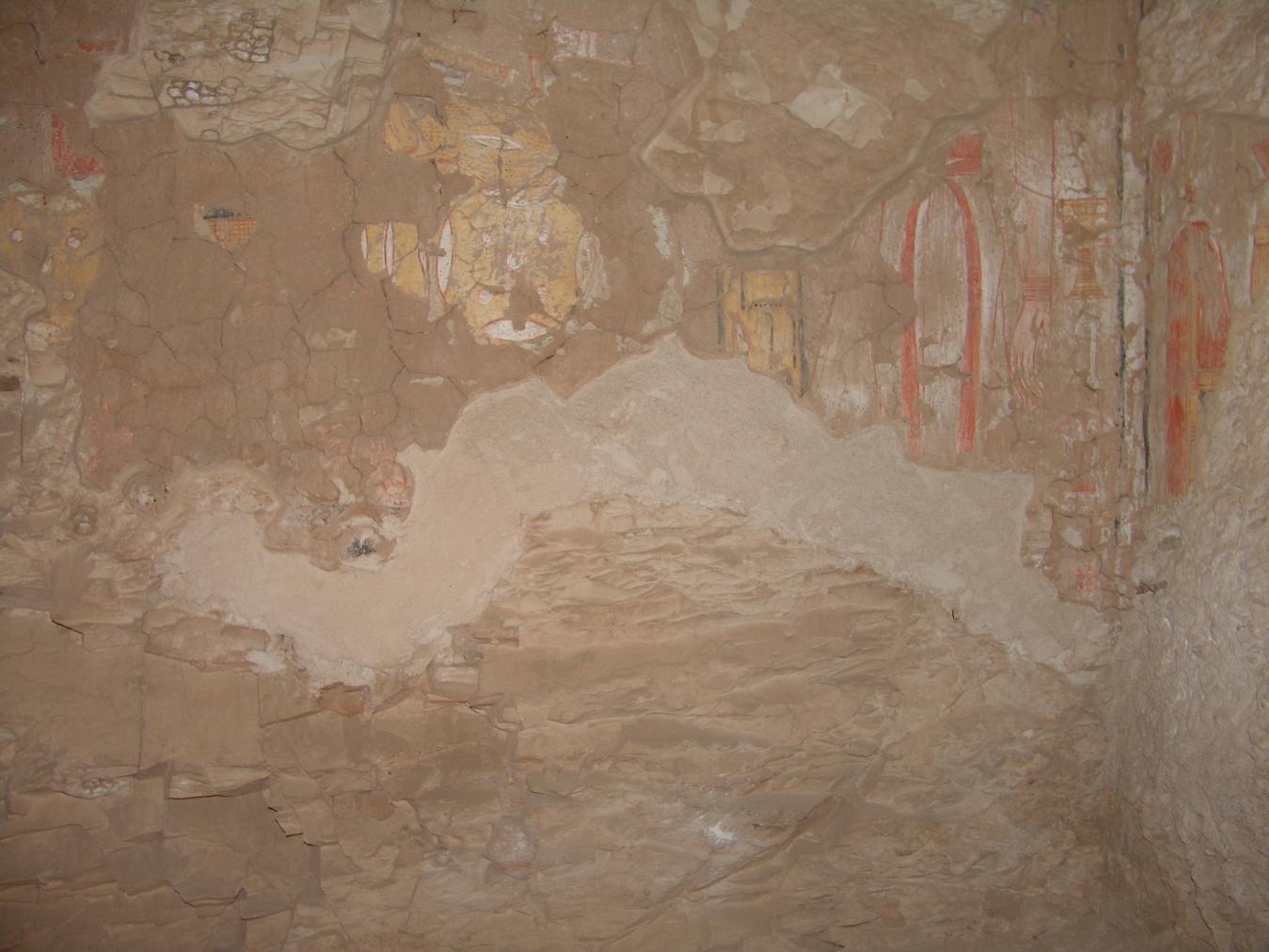
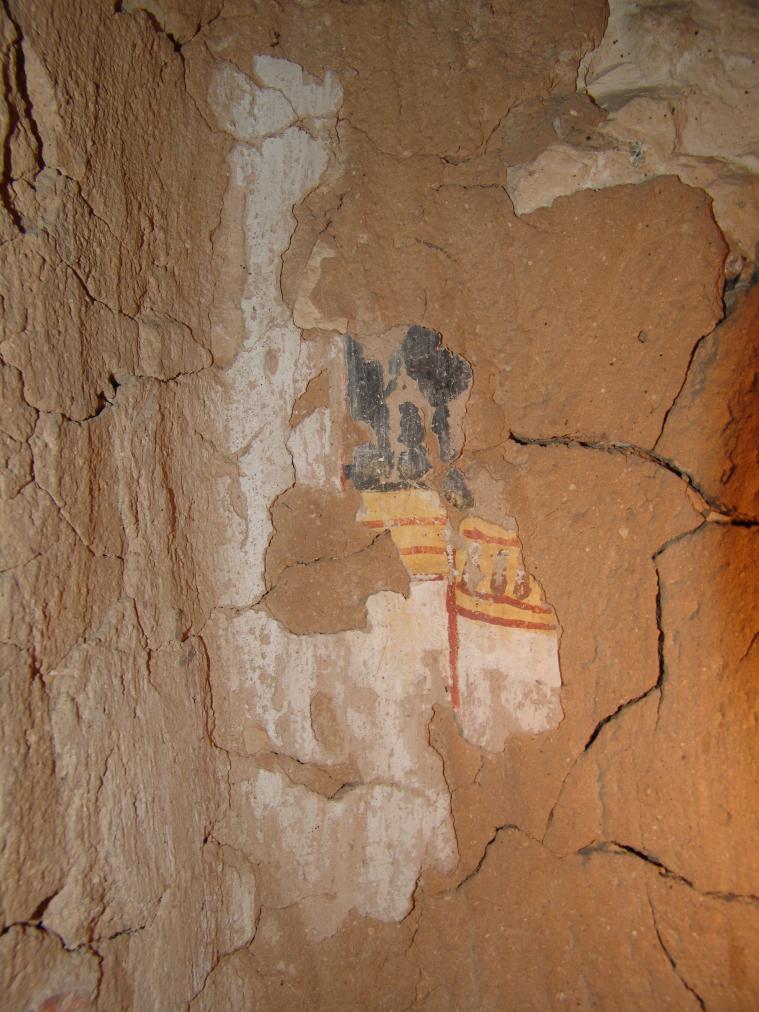
Gate Bb
See entire tombThis gate is cut into the eastern wall of the pillared chamber and provides access to a side chamber. There is no surviving decoration on this gate.



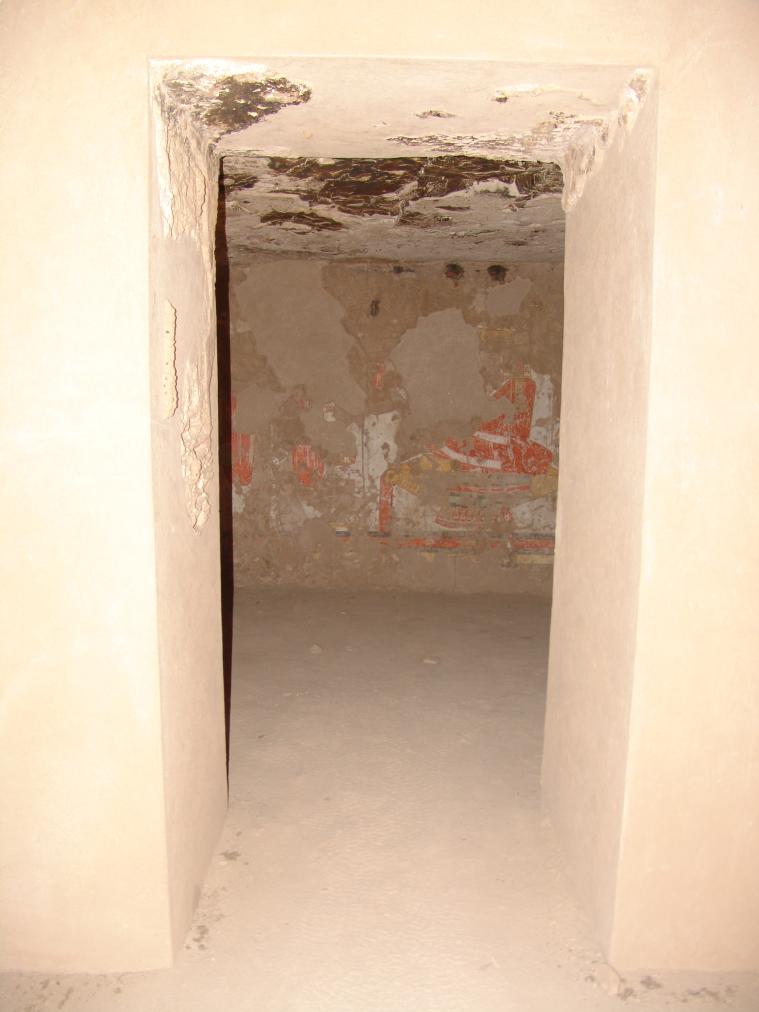
Side chamber Bb
See entire tombThis side chamber lies to the east of the pillared chamber. The walls and ceiling have limited areas of blackening, indicating that it may have been closed off and protected from fire. There is, however, substantial loss of the upper painted plaster layer, though this chamber has significantly more remaining than side chamber Ba.
The surviving decoration includes the remains of a Djed pillar on the western wall, the remains of squatting deities on the north and south walls, and a large scene of a Nub (gold) sign between a Djed pillar and Tyet knot.
Porter and Moss designation:
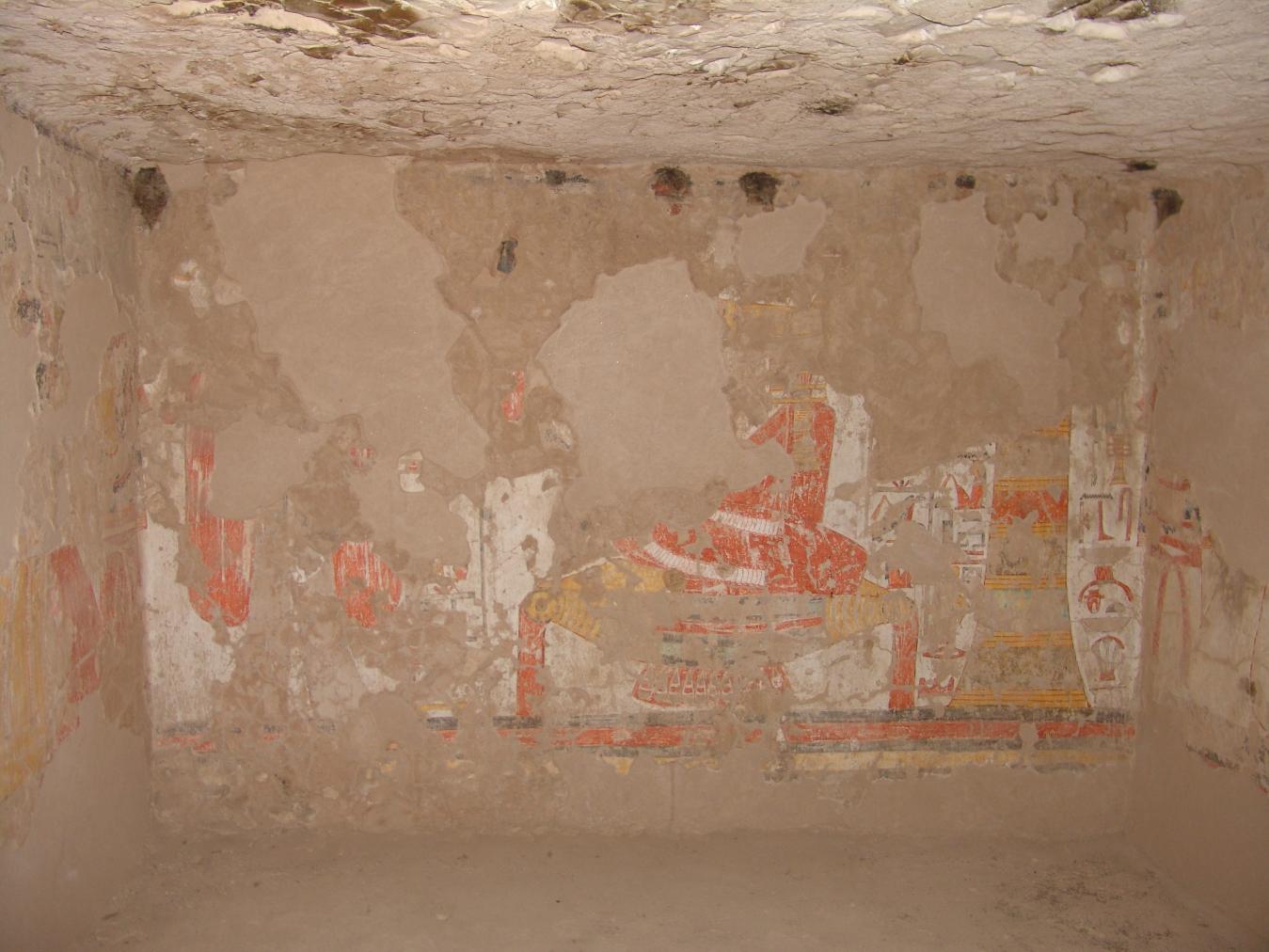
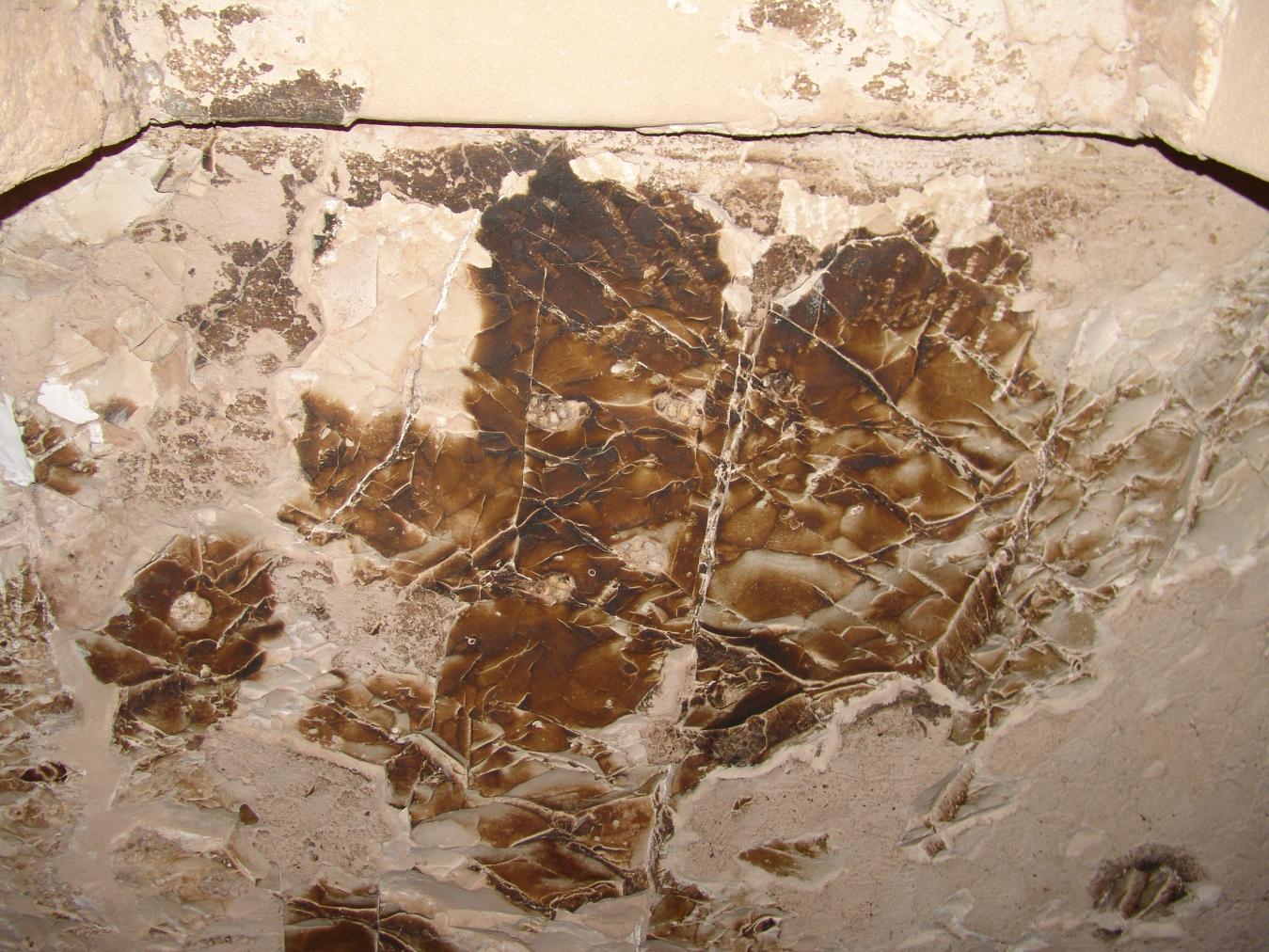
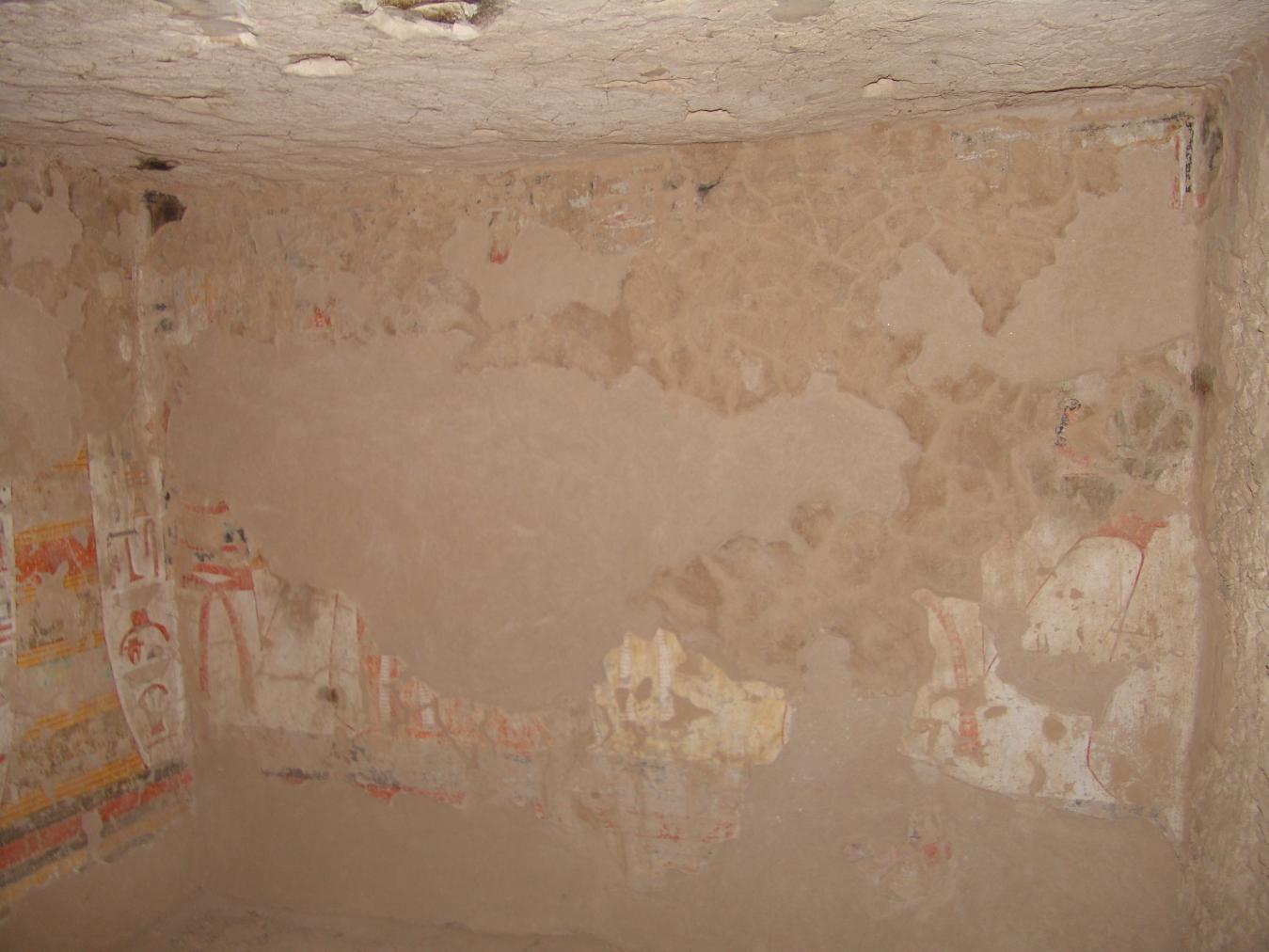
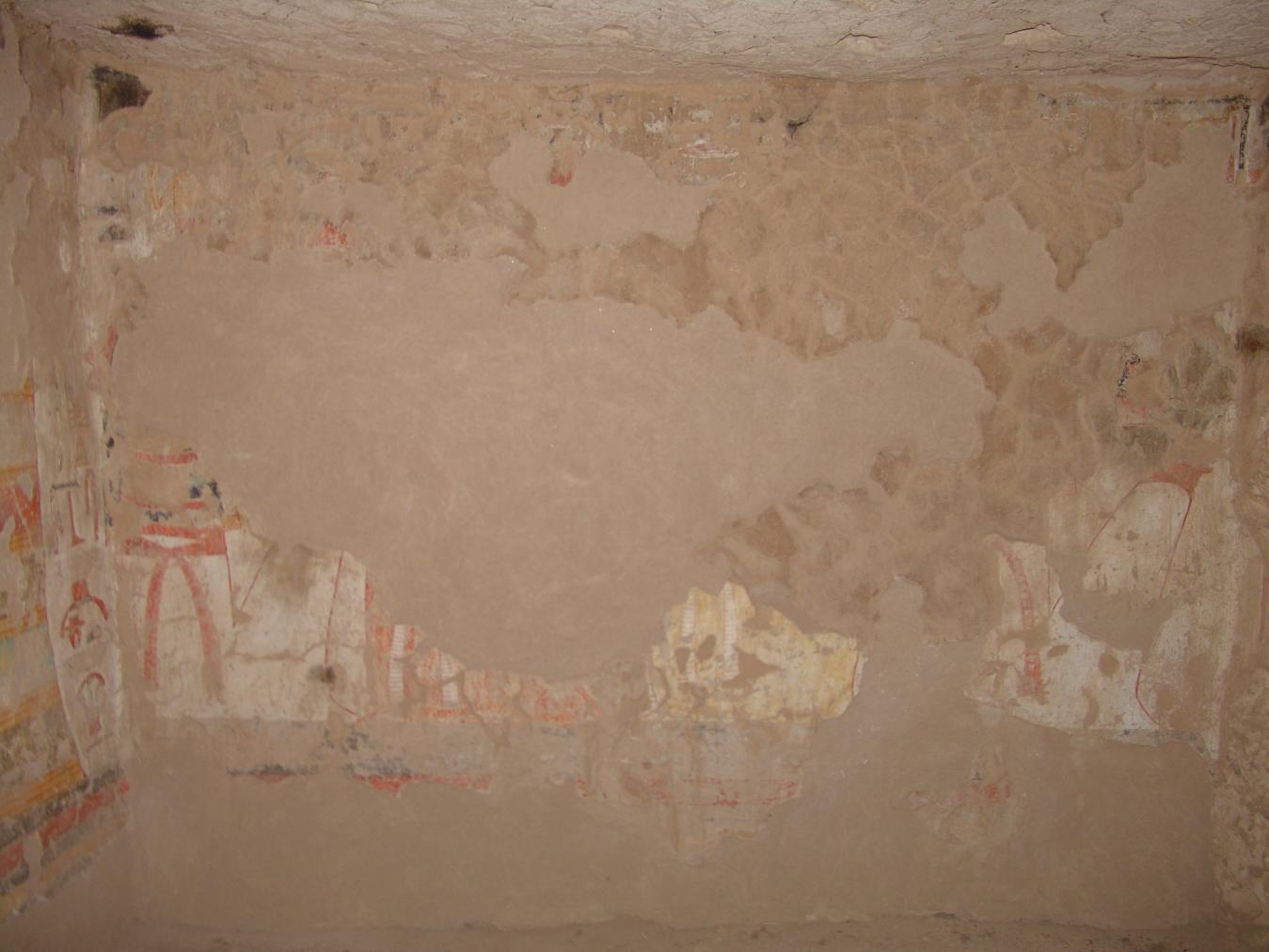
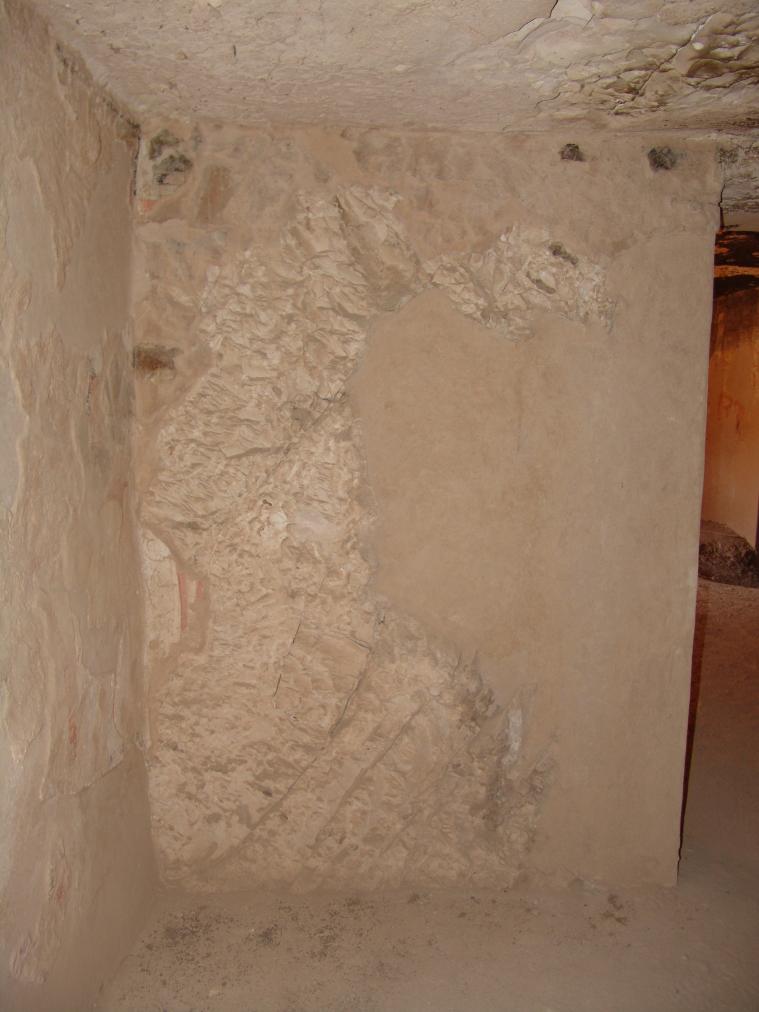
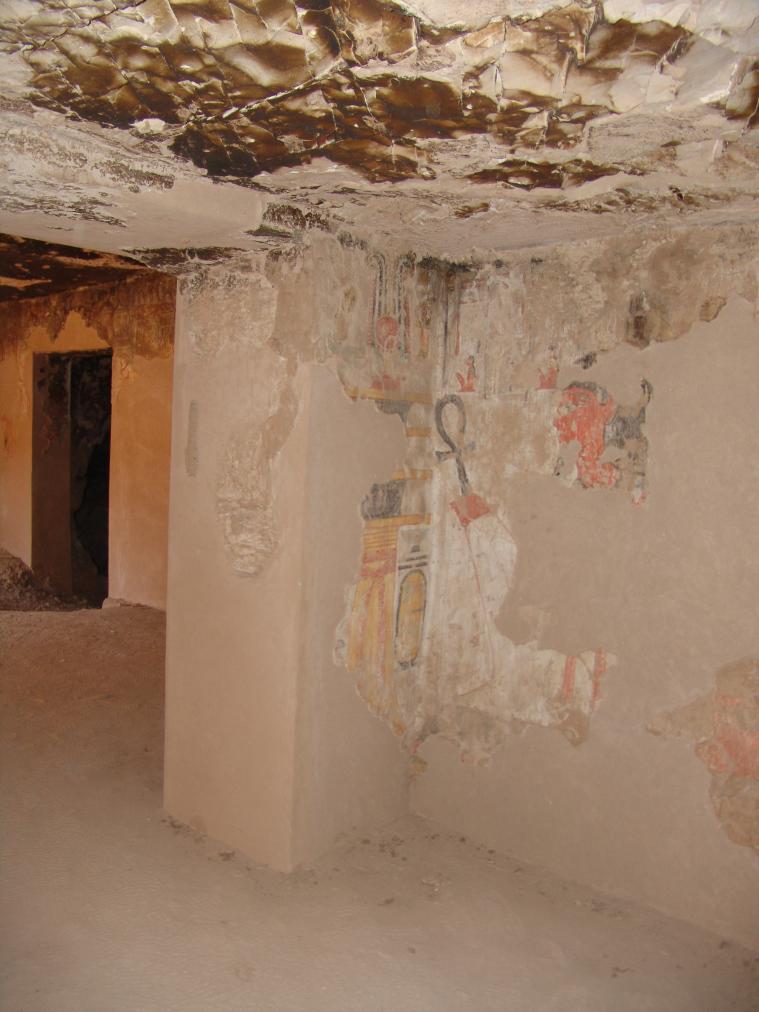
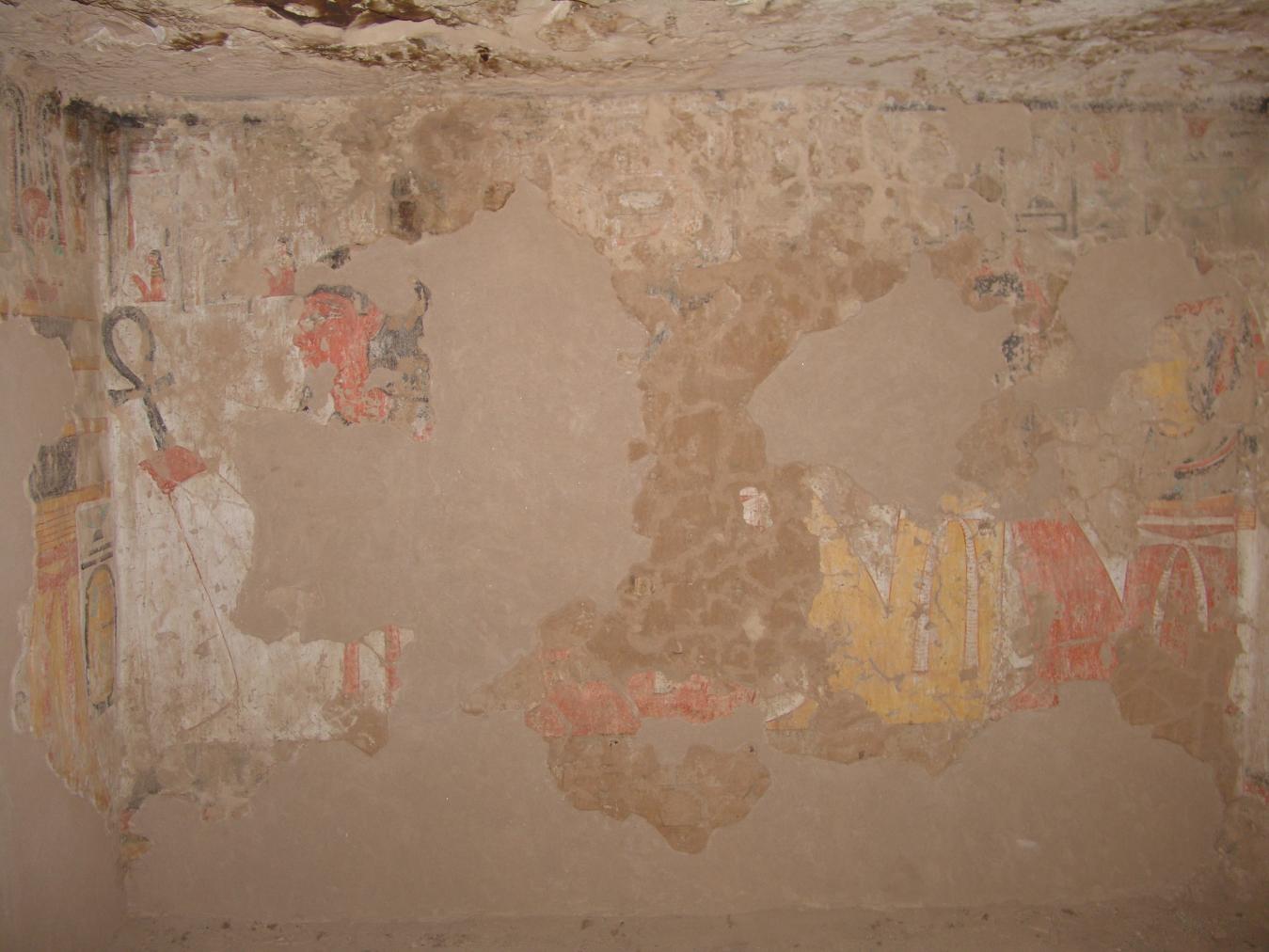
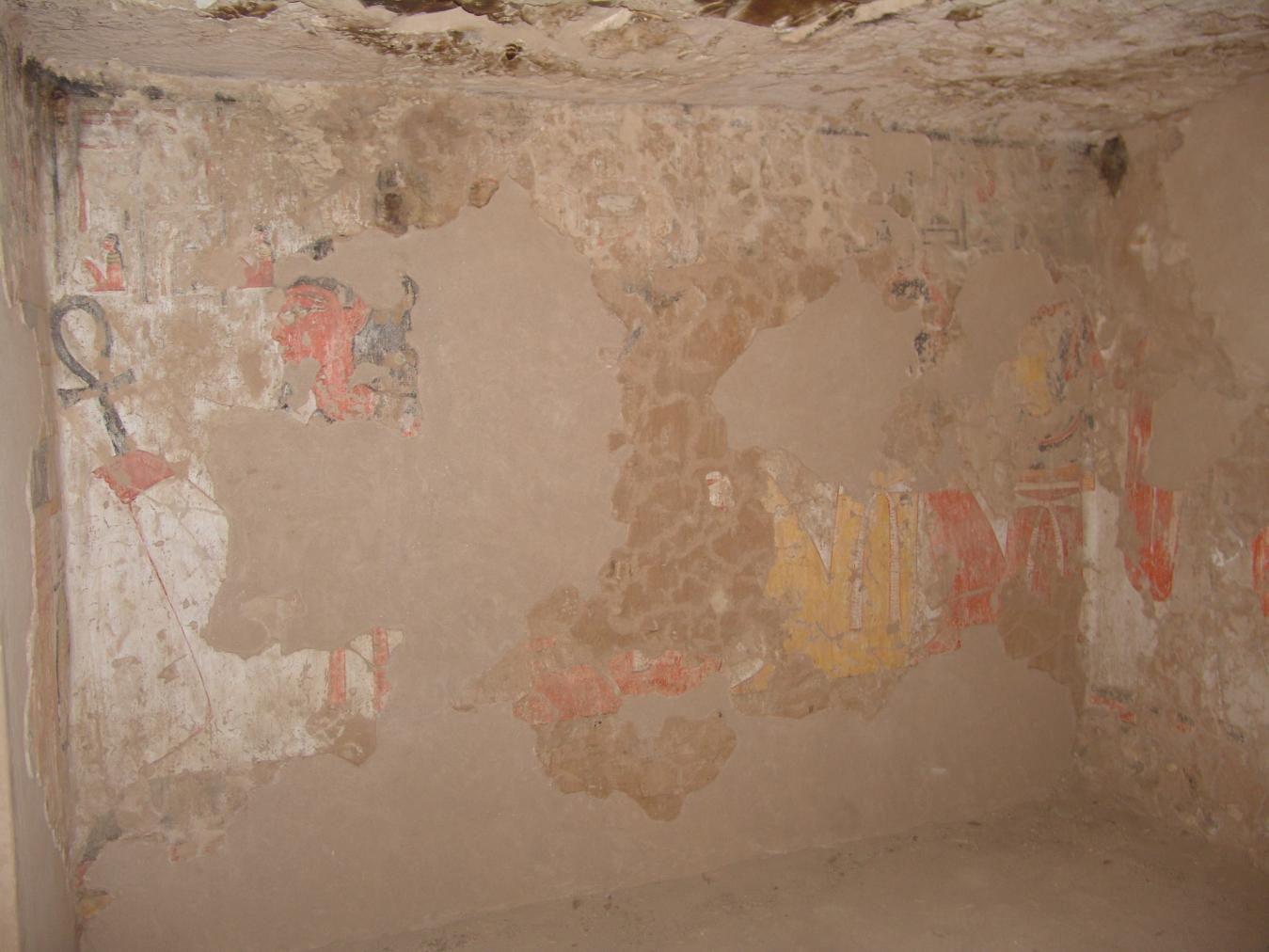
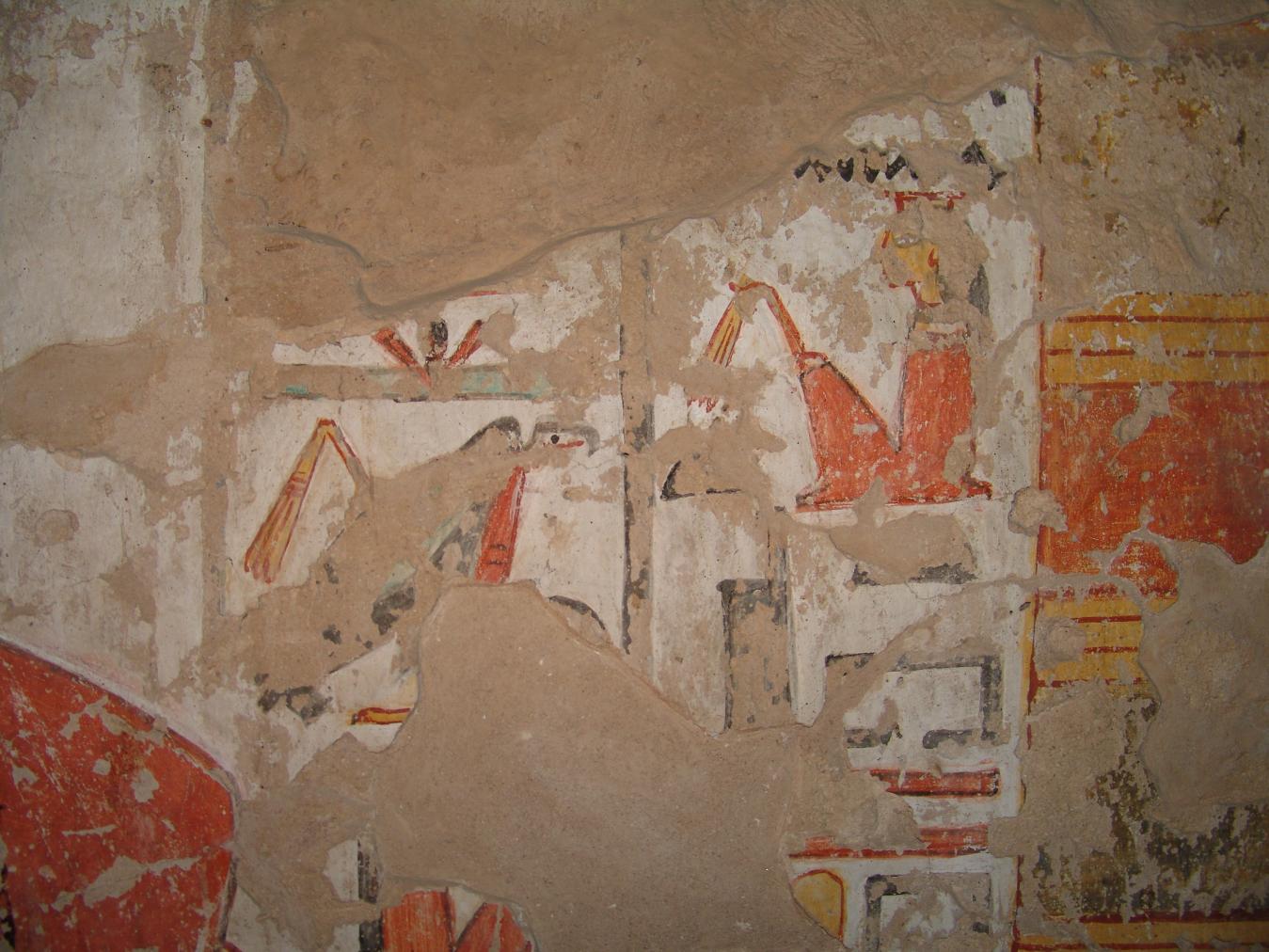
Side chamber Bc
See entire tombThis side chamber lies to the south of the pillared chamber and is accessed through a pit in the floor. The chamber was not plastered or decorated and is thought to be a later addition.






Gate C
See entire tombThis gate lies on axis with the tomb's entrance and provides access to the lower burial chamber. The gate has compound jambs, the lower parts of which have been reconstructed in modern plaster.
The only surviving decoration includes text on the lintel, remains of a Djed pillar and the Cartouche of the Queen on the left thickness, text on the right outer thickness, and very fragmented remains of an image of Hathor on the left outer thickness.



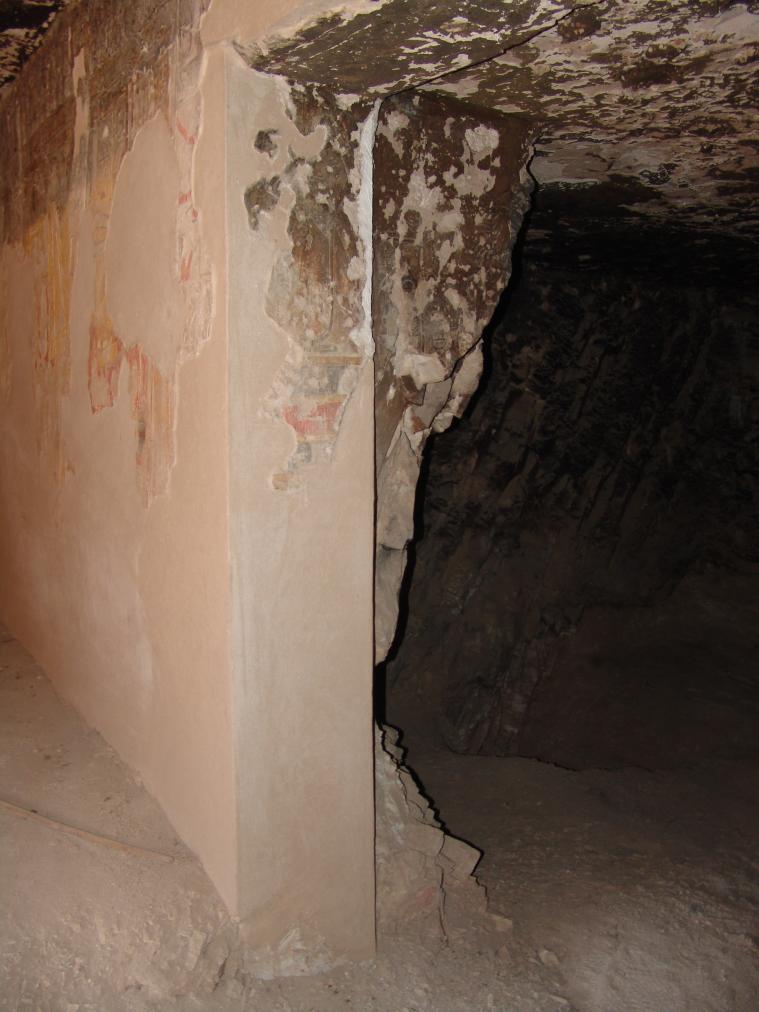
Burial chamber C
See entire tombThis chamber lies perpendicular to the tomb's axis and is at a lower level than the preceding pillared hall. The chamber has one side chamber lying to the north and two pits cut into the floor at the rear. The larger pit functioned as the Sarcophagus emplacement, while the deeper pit to the west is a later addition. Three Magical brick niches were cut into the north, west, and east walls.
The rock surfaces in the burial chamber are heavily blackened from fire, both the walls and the ceiling, and the rock itself is heavily jointed. Only small areas of decoration survive, mainly at the tops of the walls. These surviving areas of painting are quite fragile and there are localized areas of cracking and detached plaster. The decoration is so fragmented that the scenes are unidentifiable. Sarcophagus fragments were noted in this chamber in the 1800s and then subsequently lost. Labib Habachi discovered these fragments in the Egyptian Museum in Berlin in 1974.
Chamber plan:
RectangularRelationship to main tomb axis:
PerpendicularChamber layout:
Flat floor, no pillarsFloor:
One levelCeiling:
Flat
Porter and Moss designation:
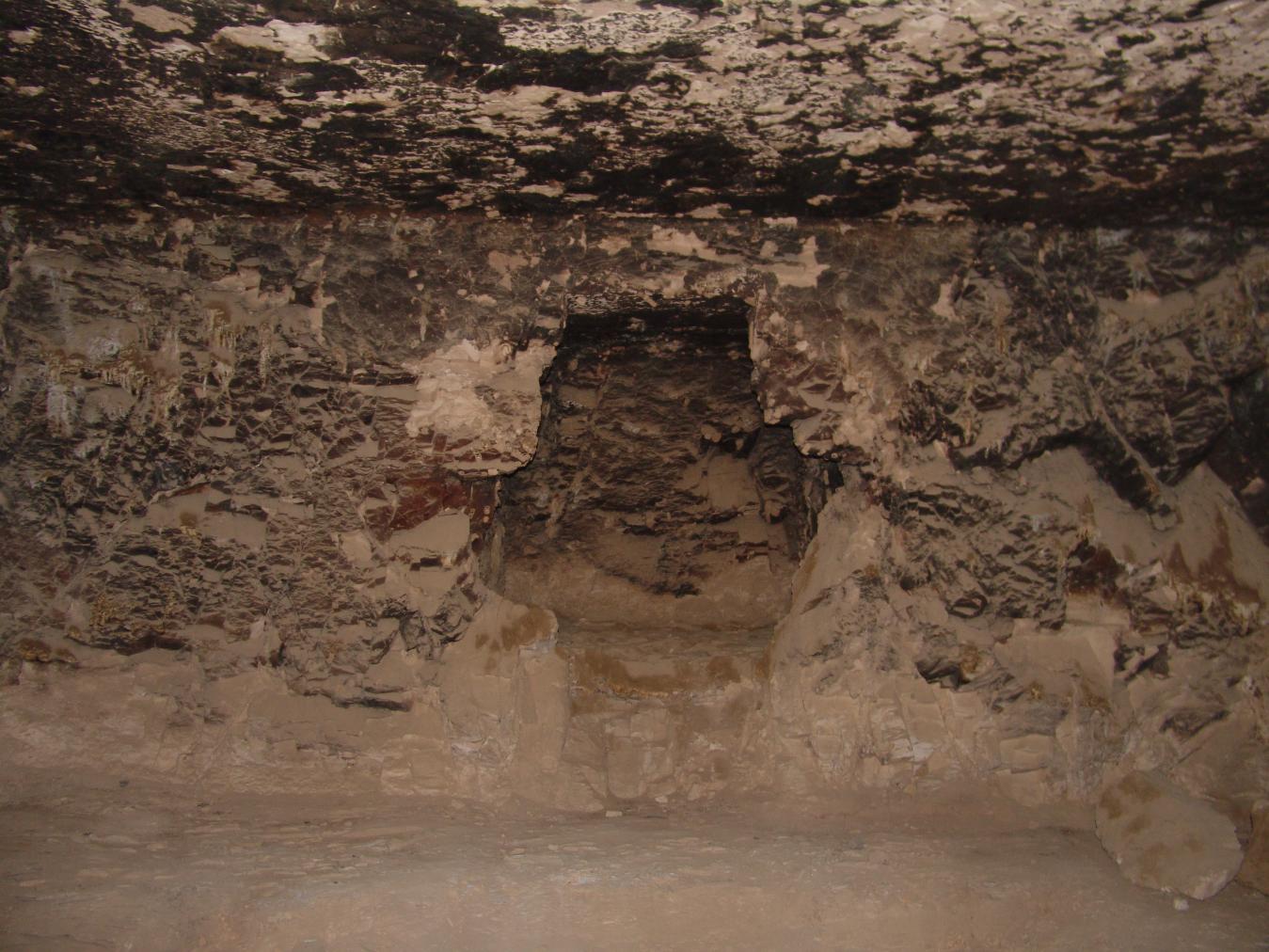
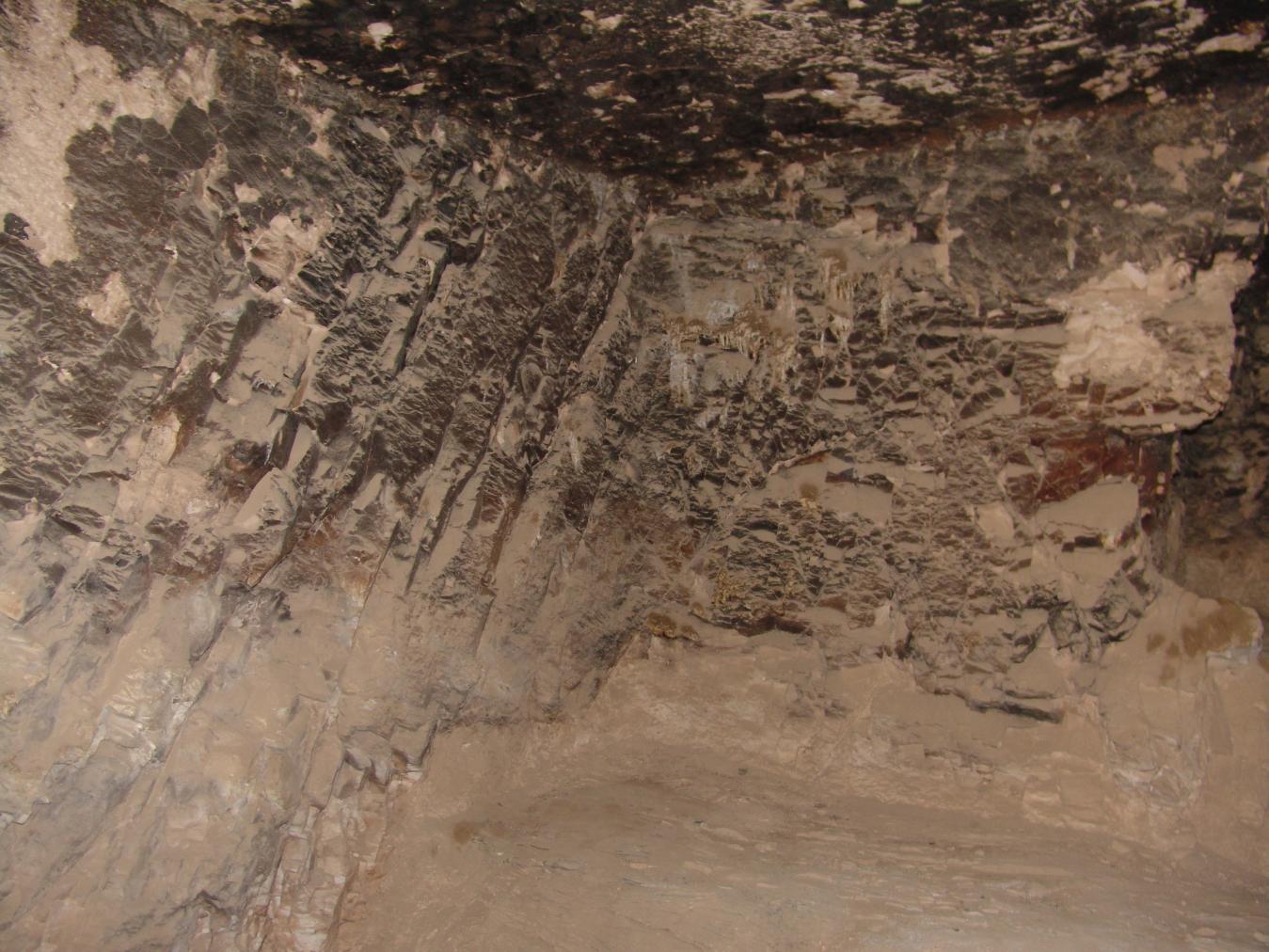
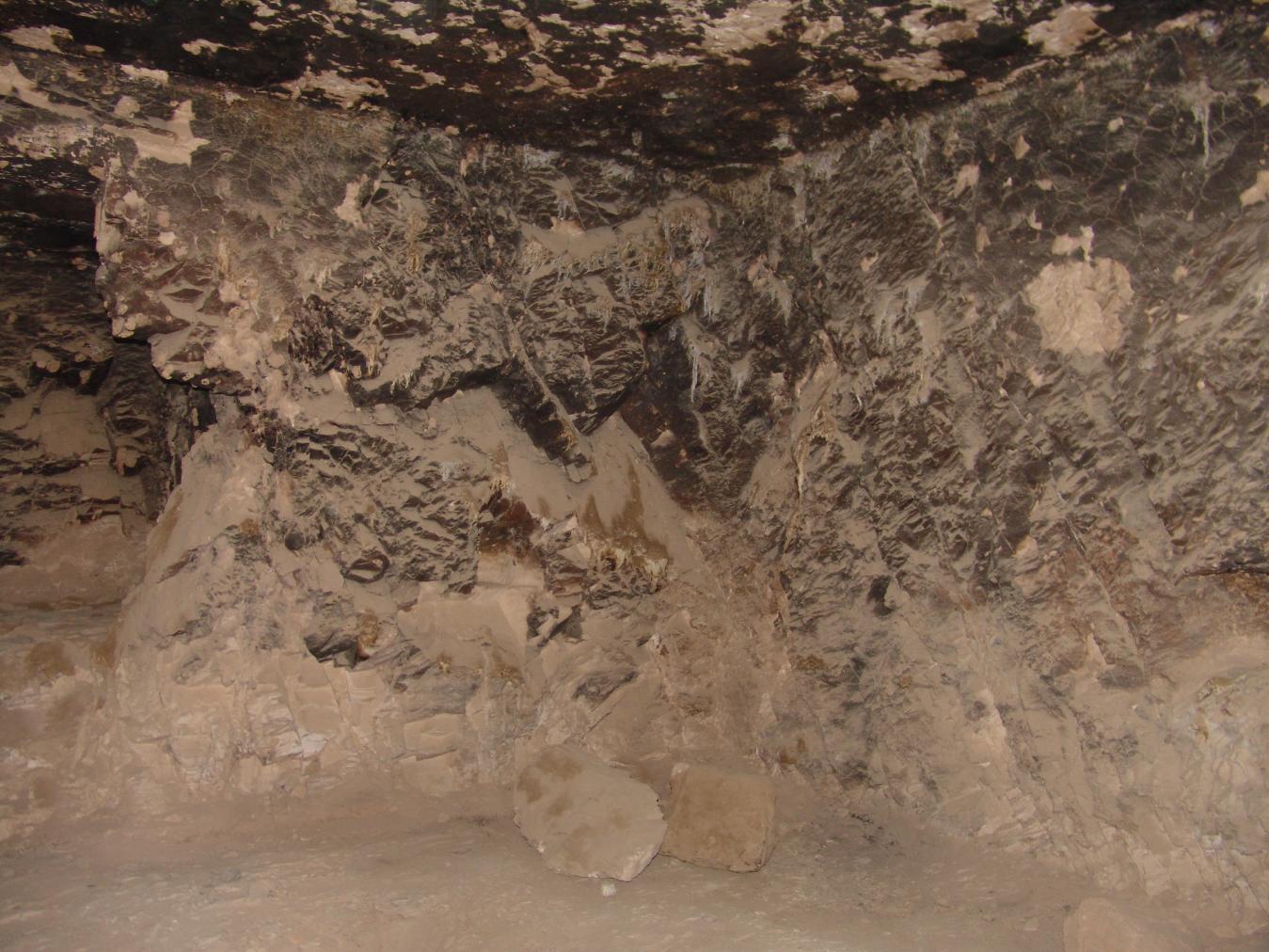
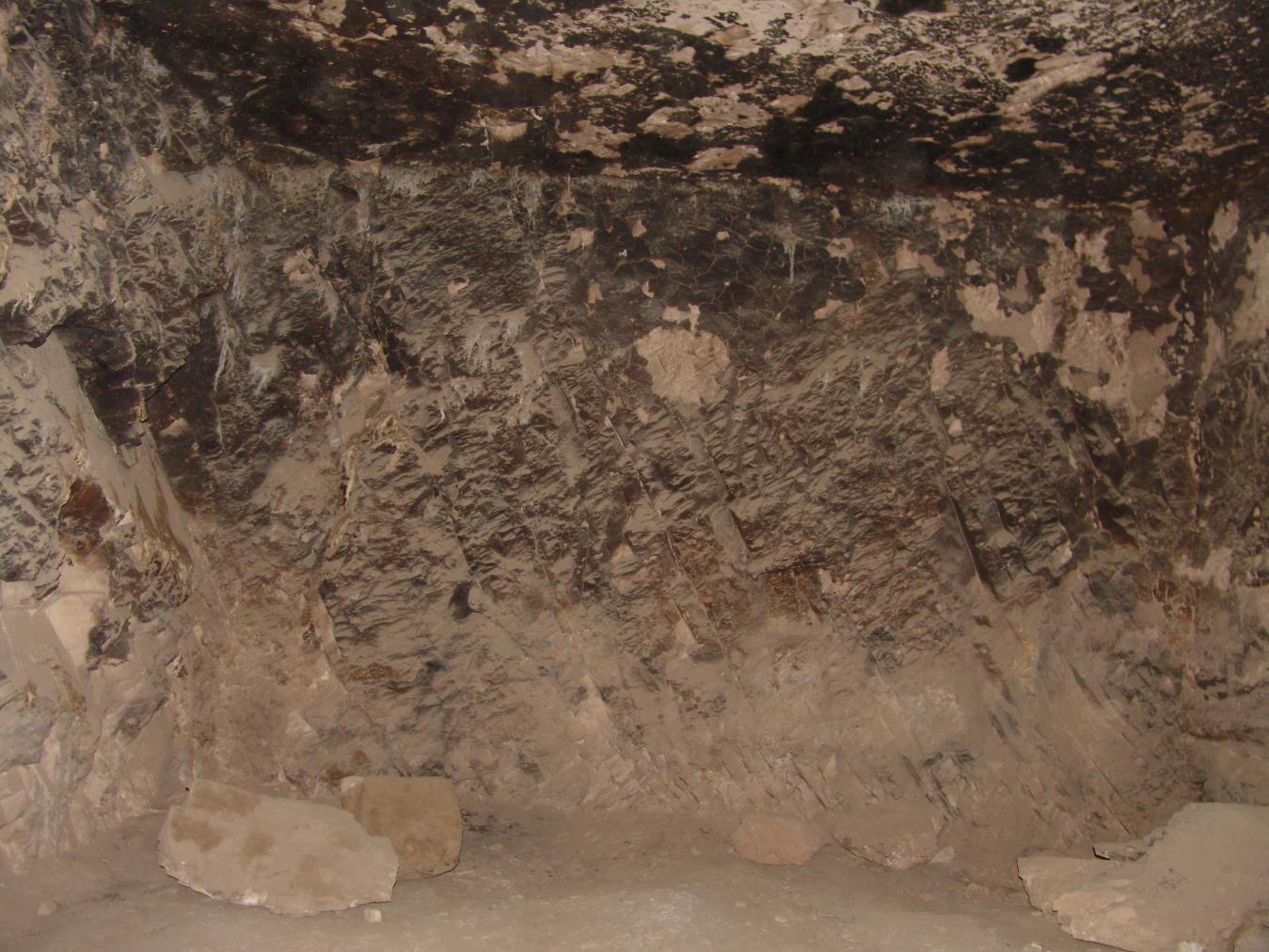
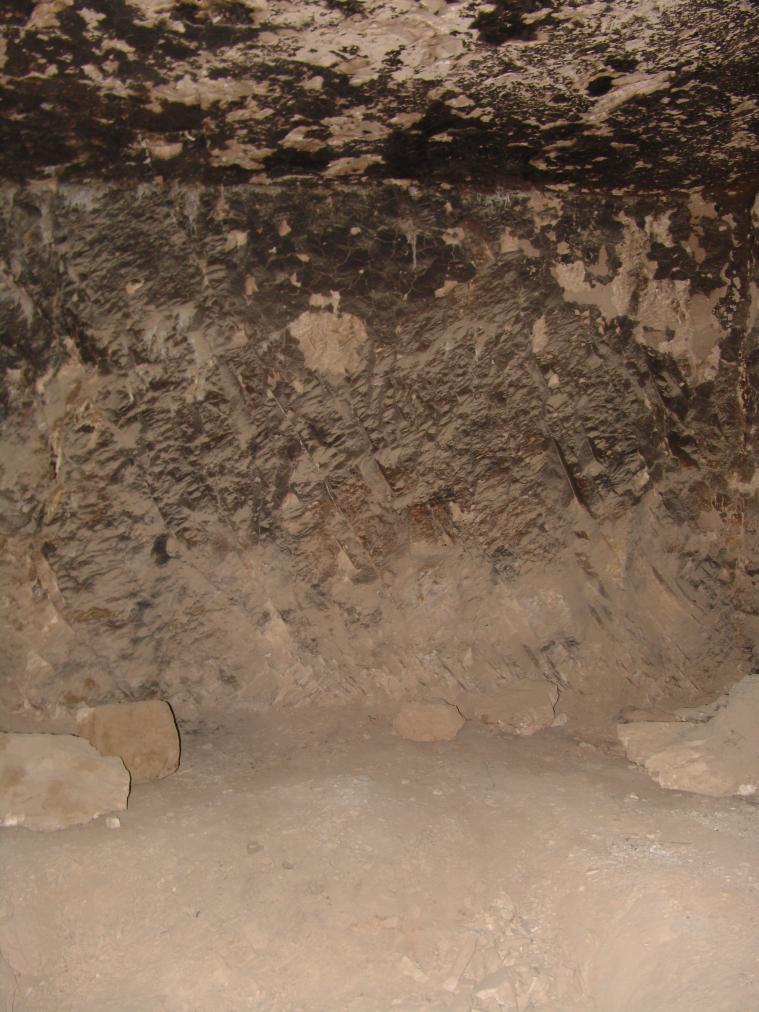
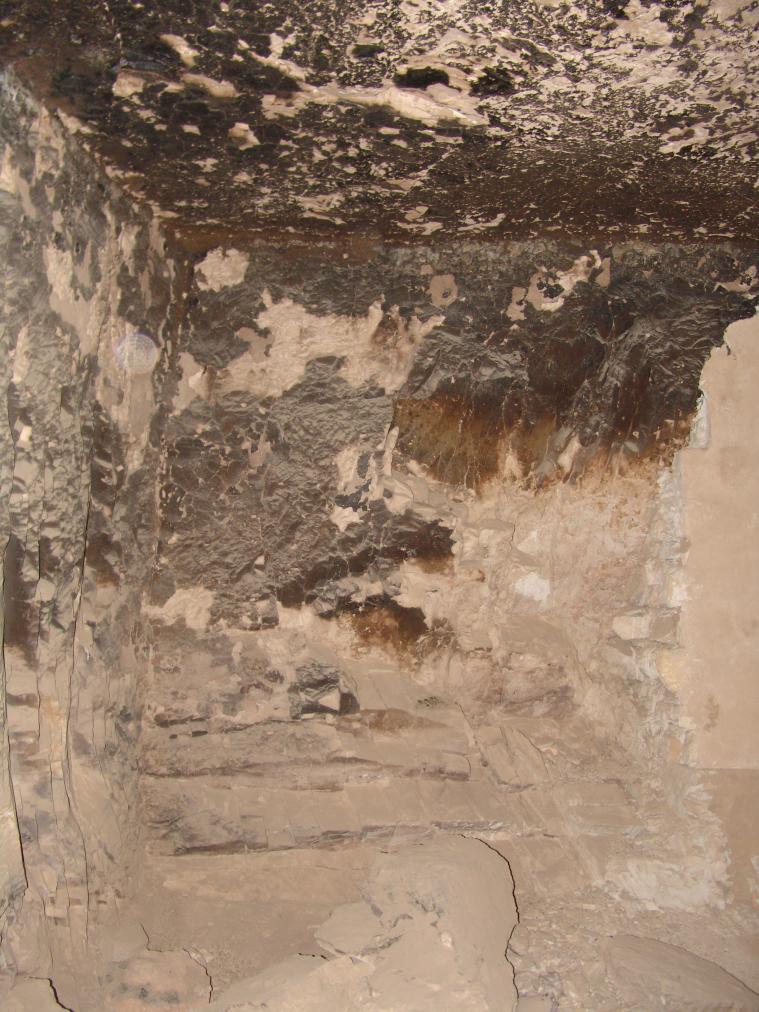
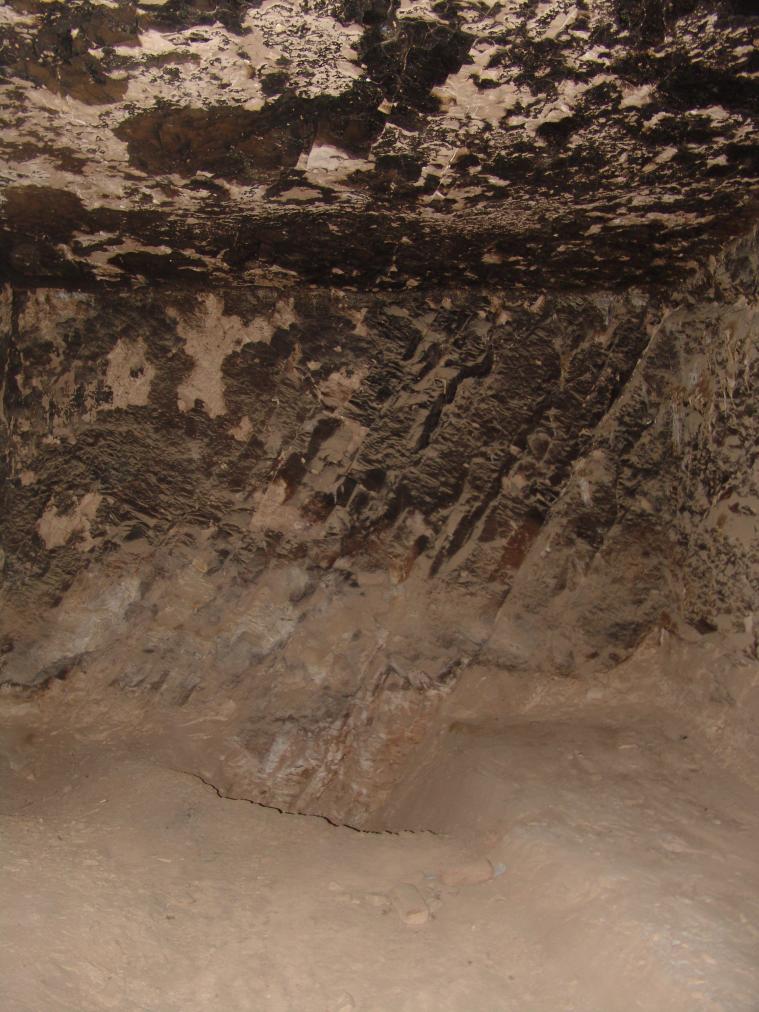
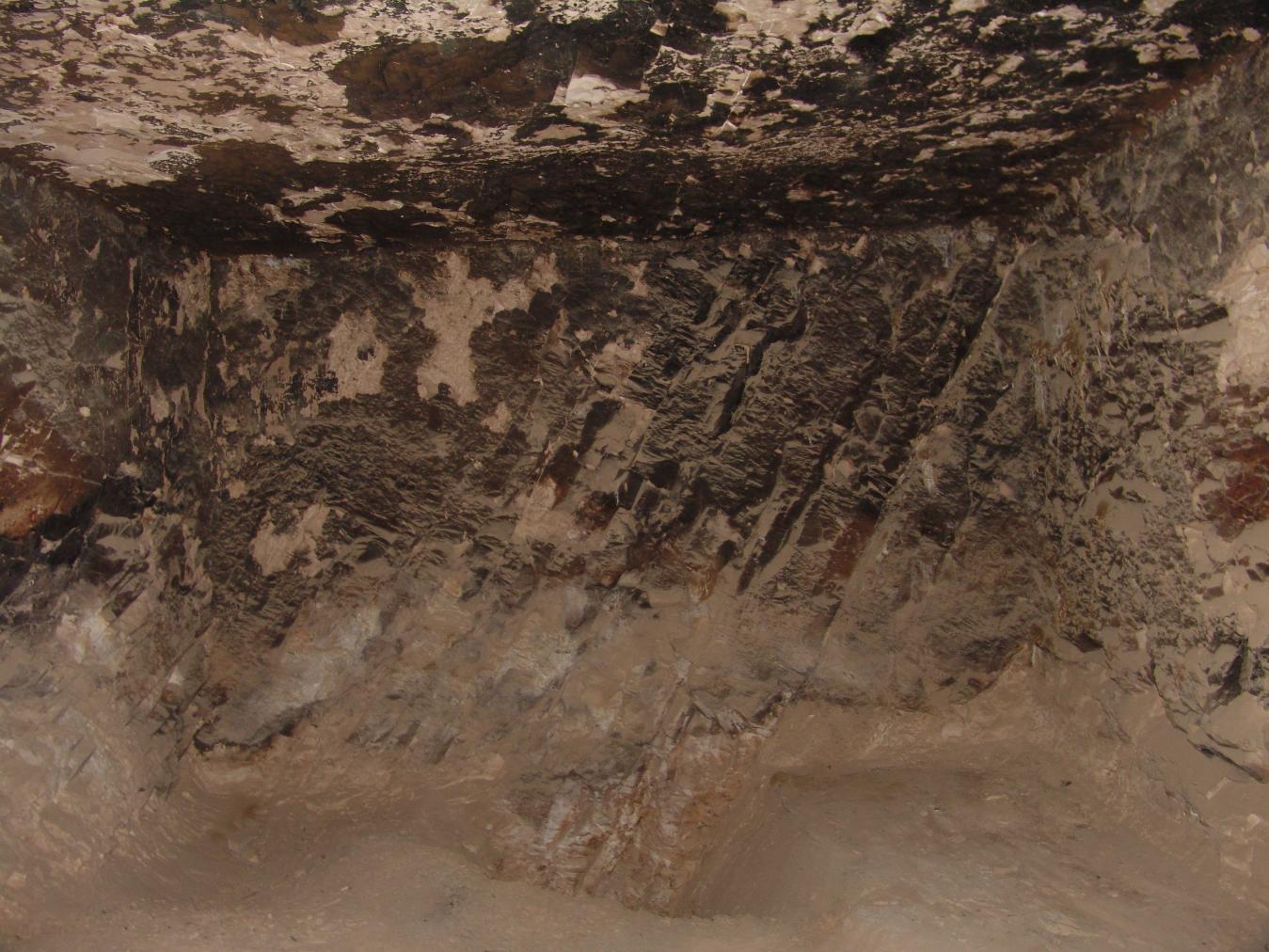
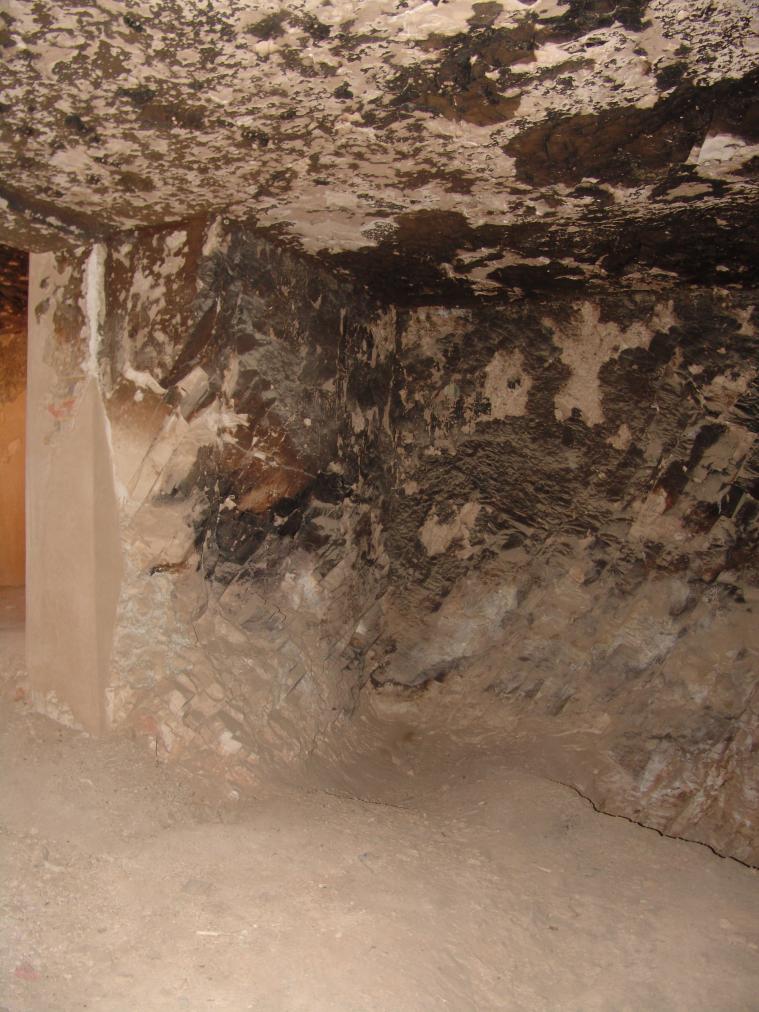
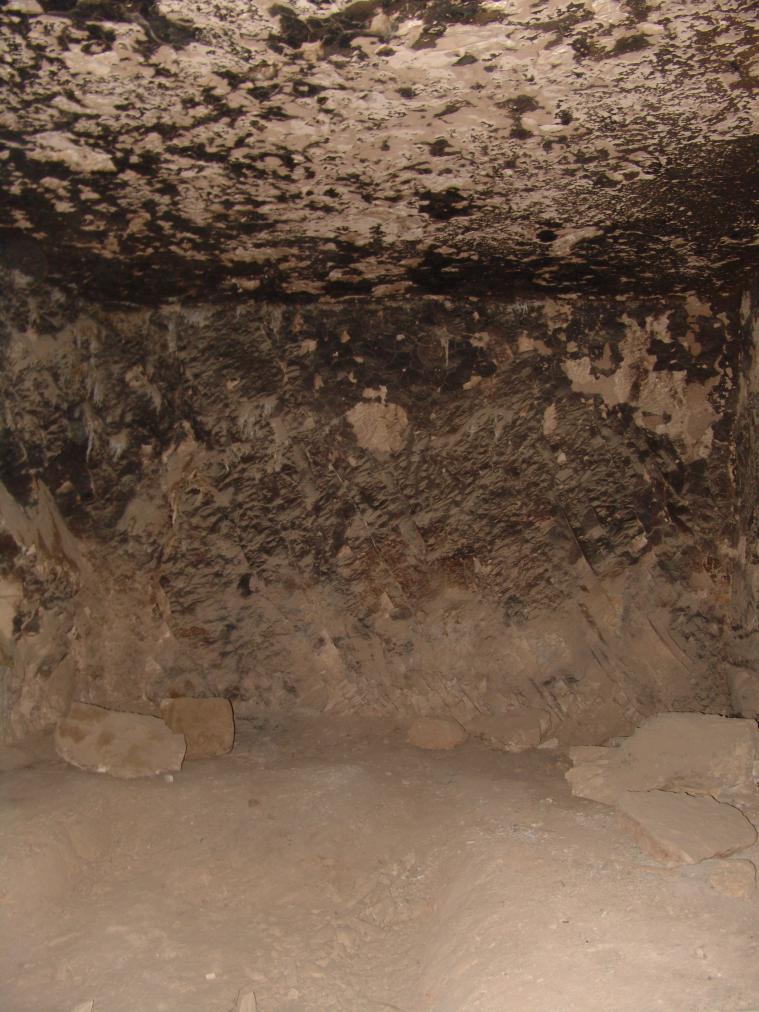
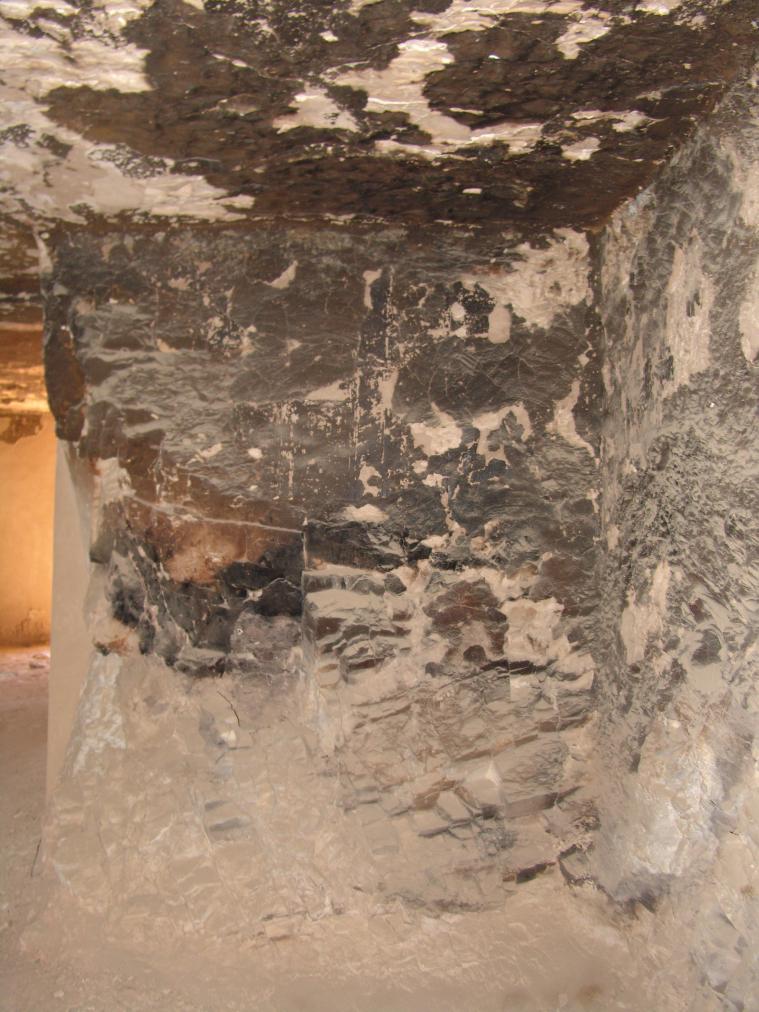
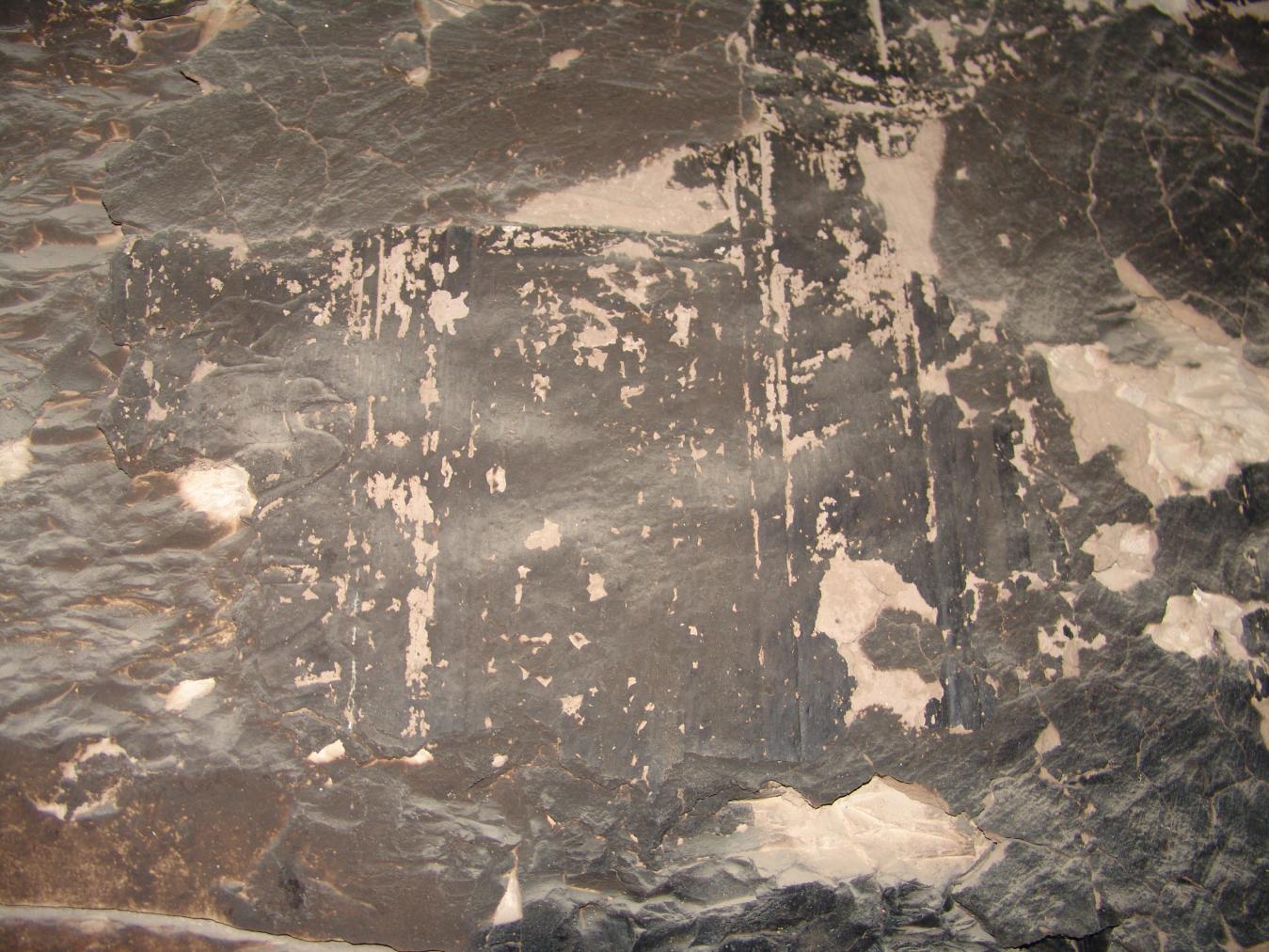
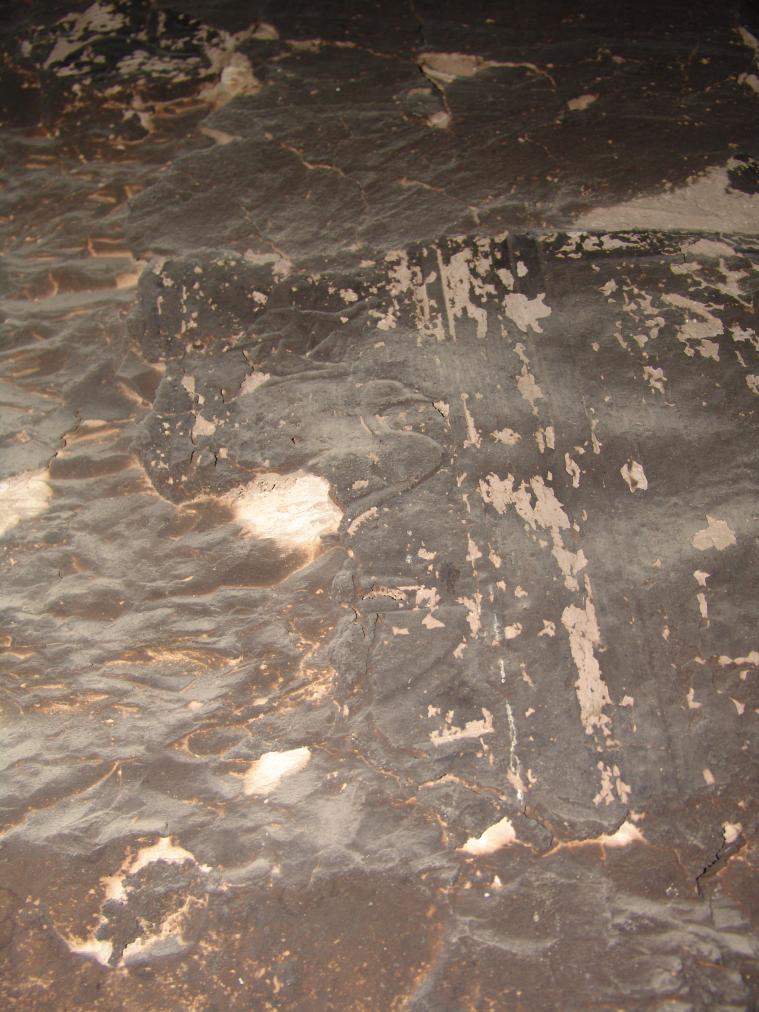
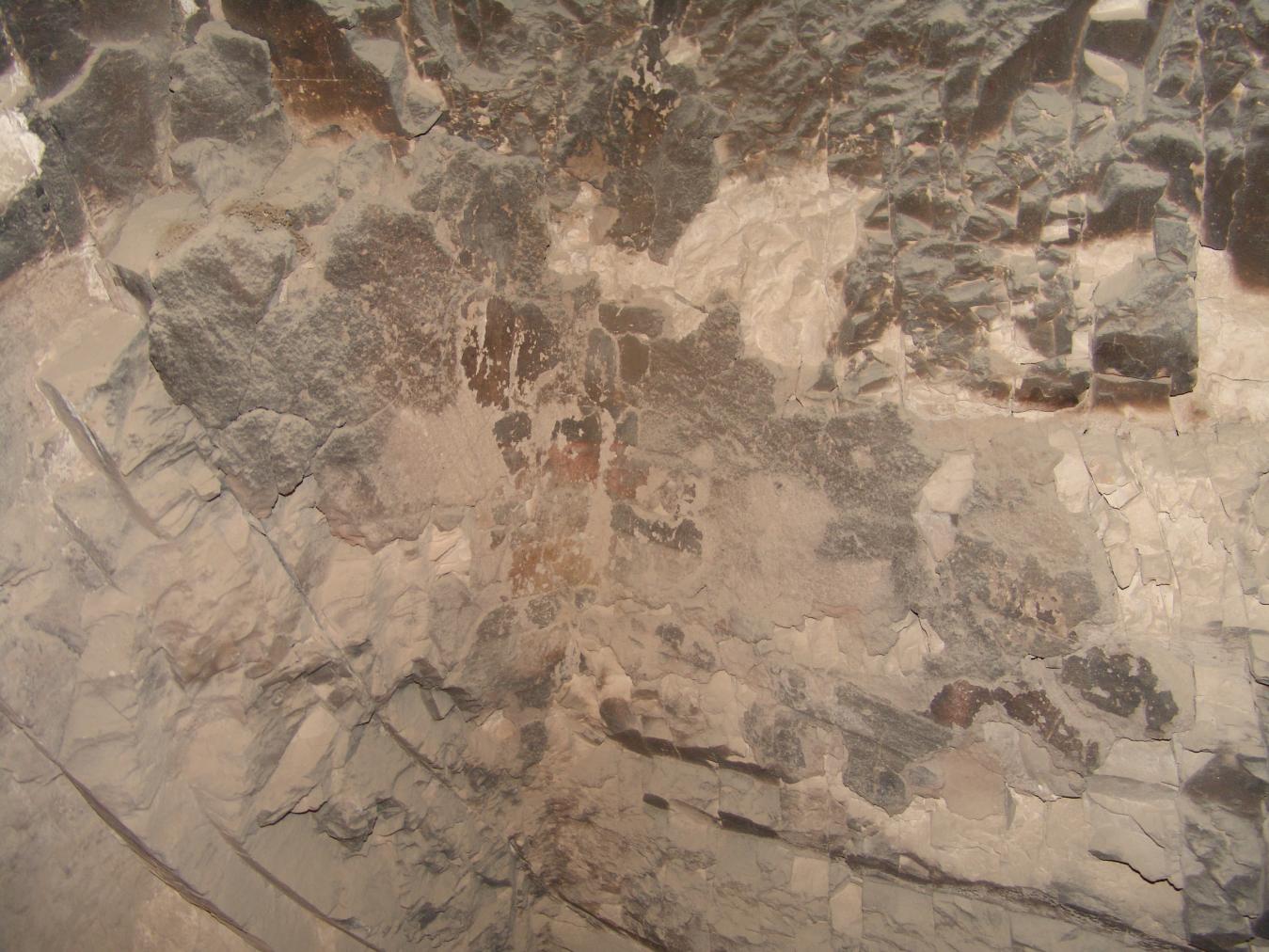
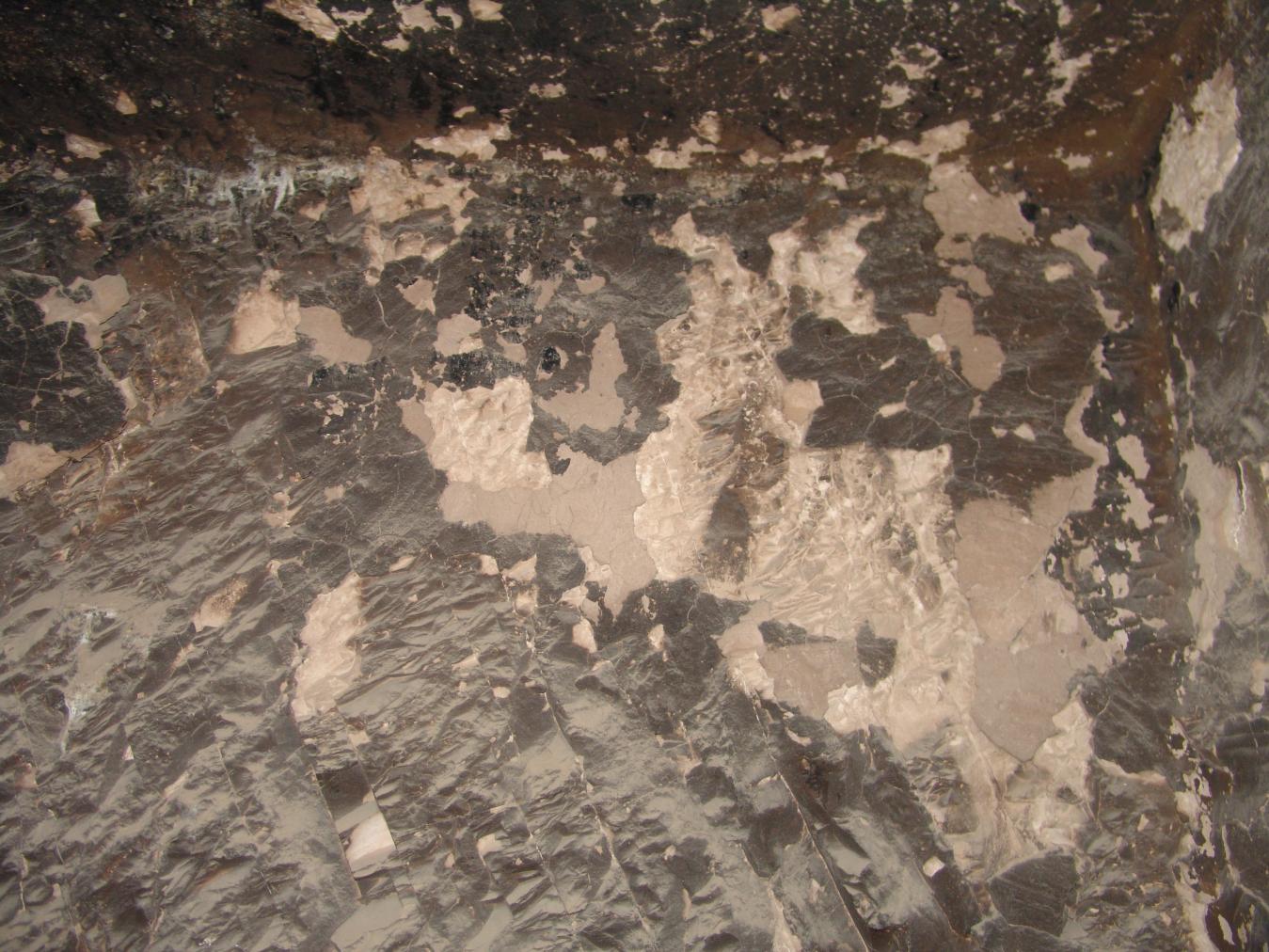
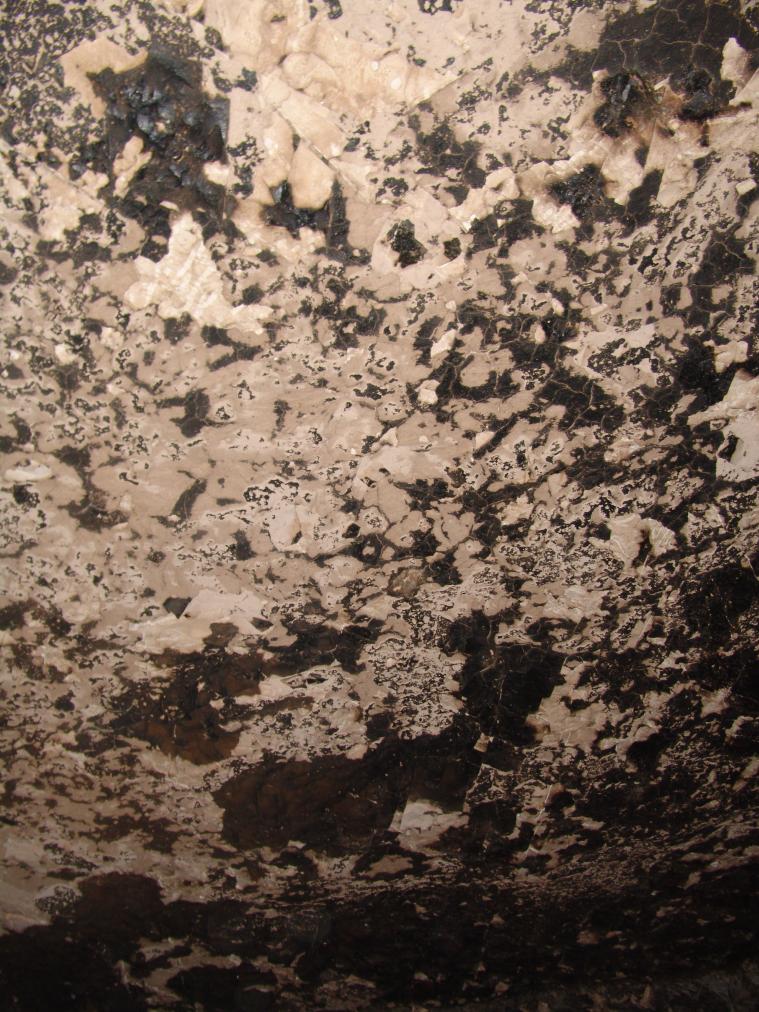
Gate Ca
See entire tombThis gate lies on axis with the tomb's entrance and is cut into the northern wall of the burial chamber. It provides access to a small side chamber.
There is some loss in the lower part of the left jamb. The only remaining decoration is on the right thickness and consists of a partial image of an unidentifiable female deity.
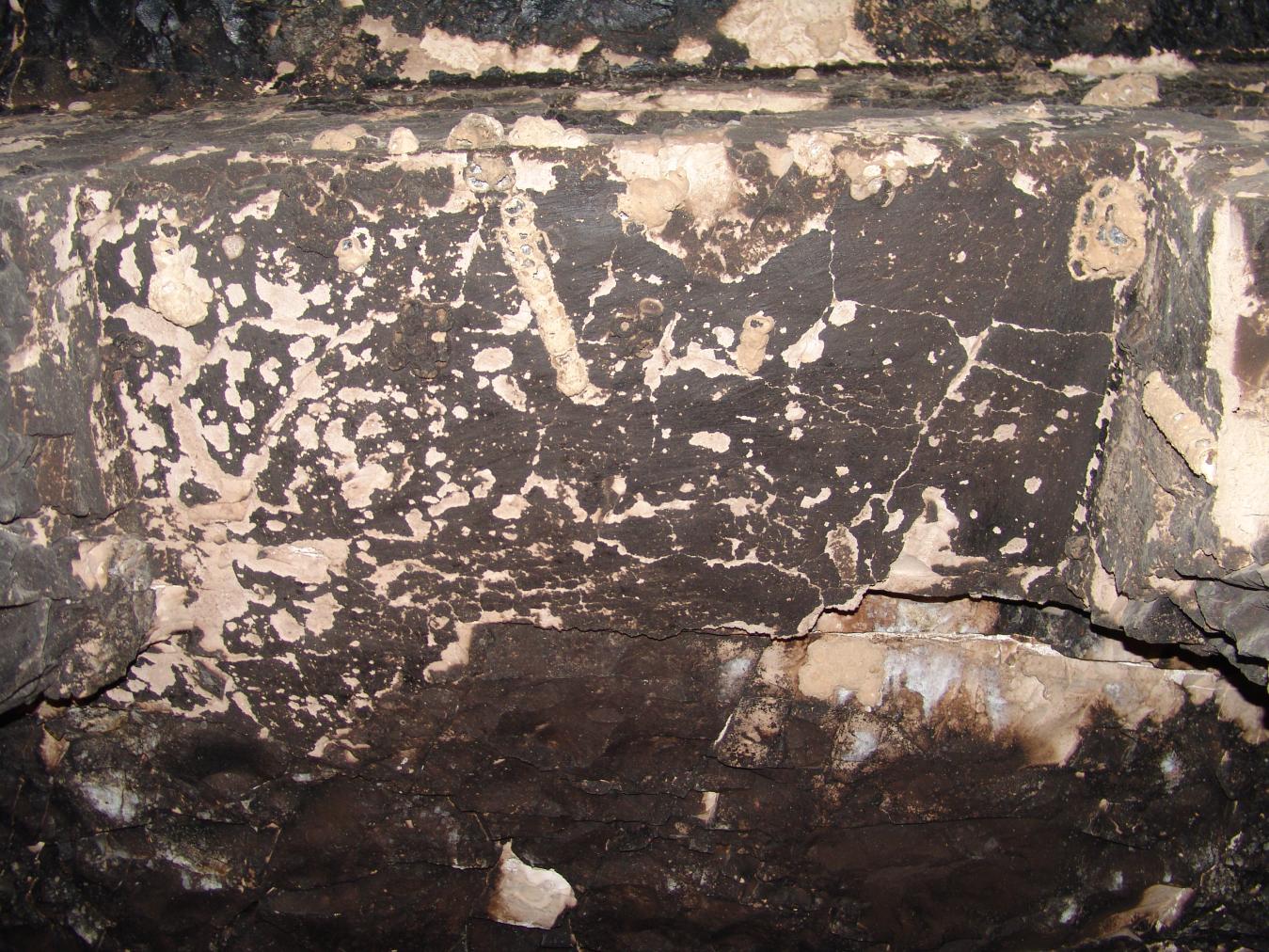
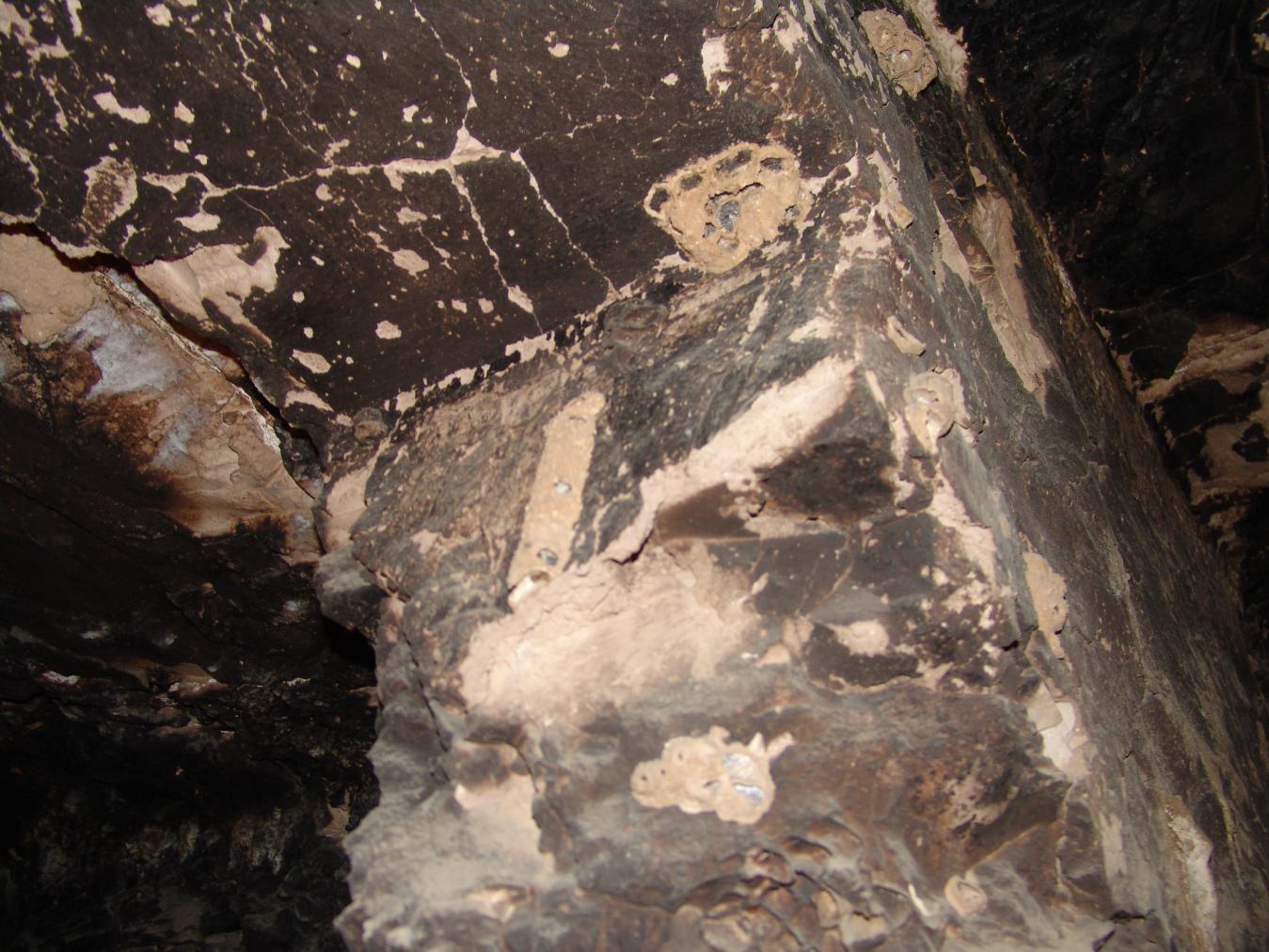
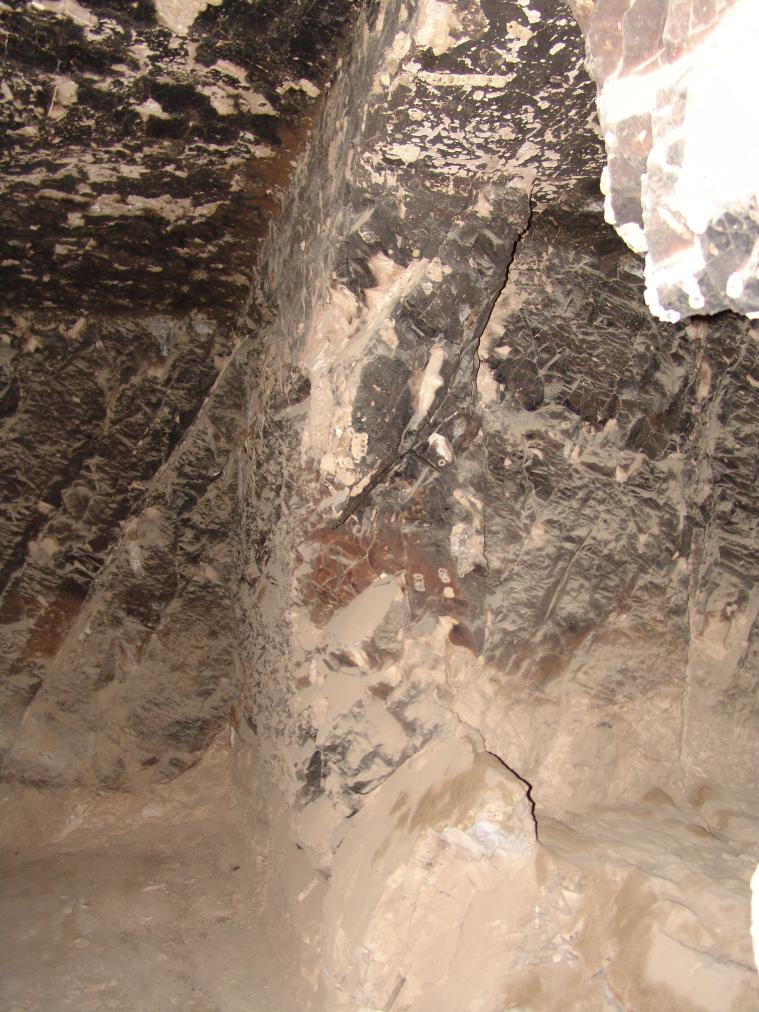
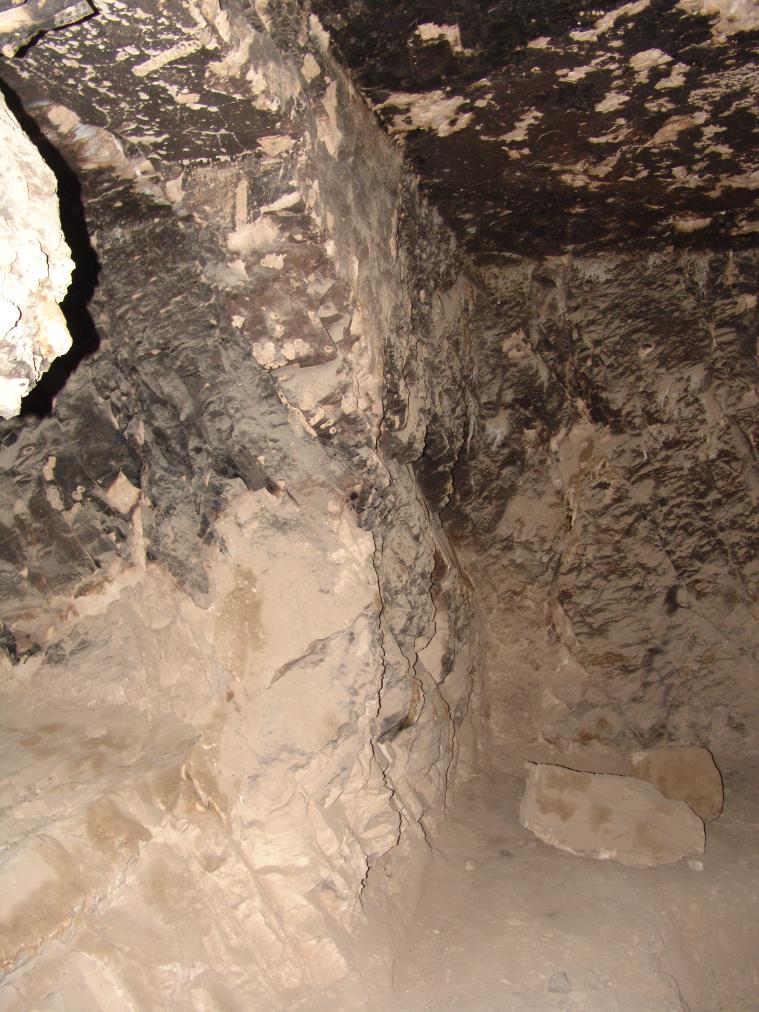
Side chamber Ca
See entire tombThis side chamber lies to the north of the burial chamber. There is some rock loss in the south wall and the walls have a heavy matte blackened appearance from fire. This chamber was not plastered or decorated.
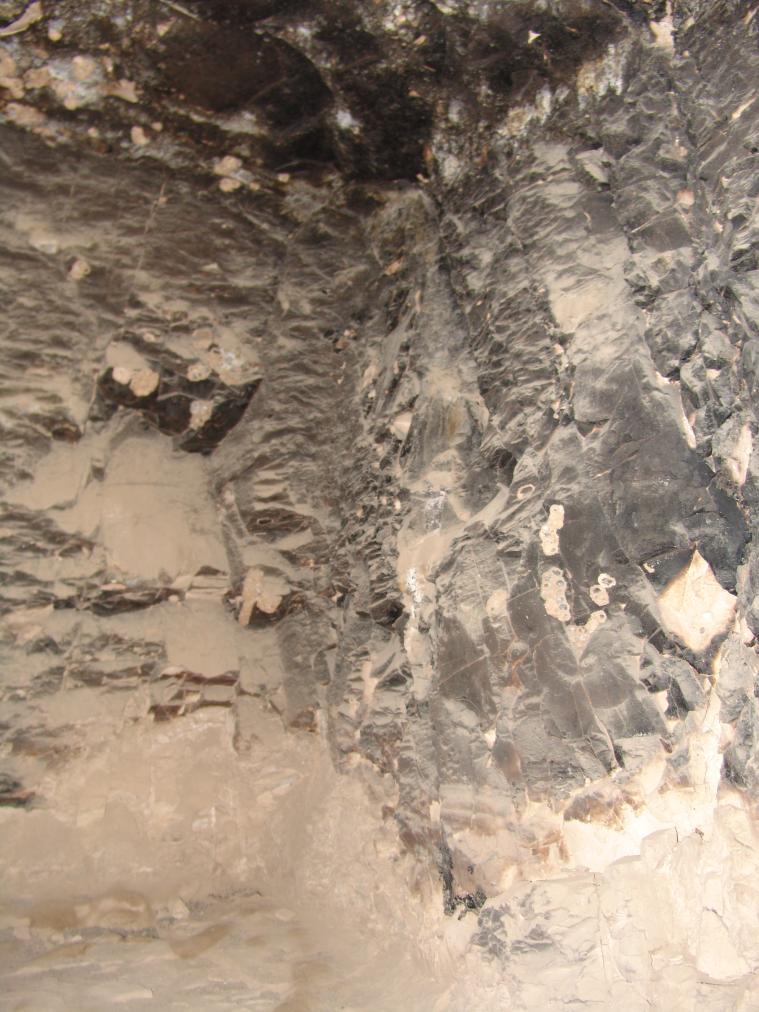
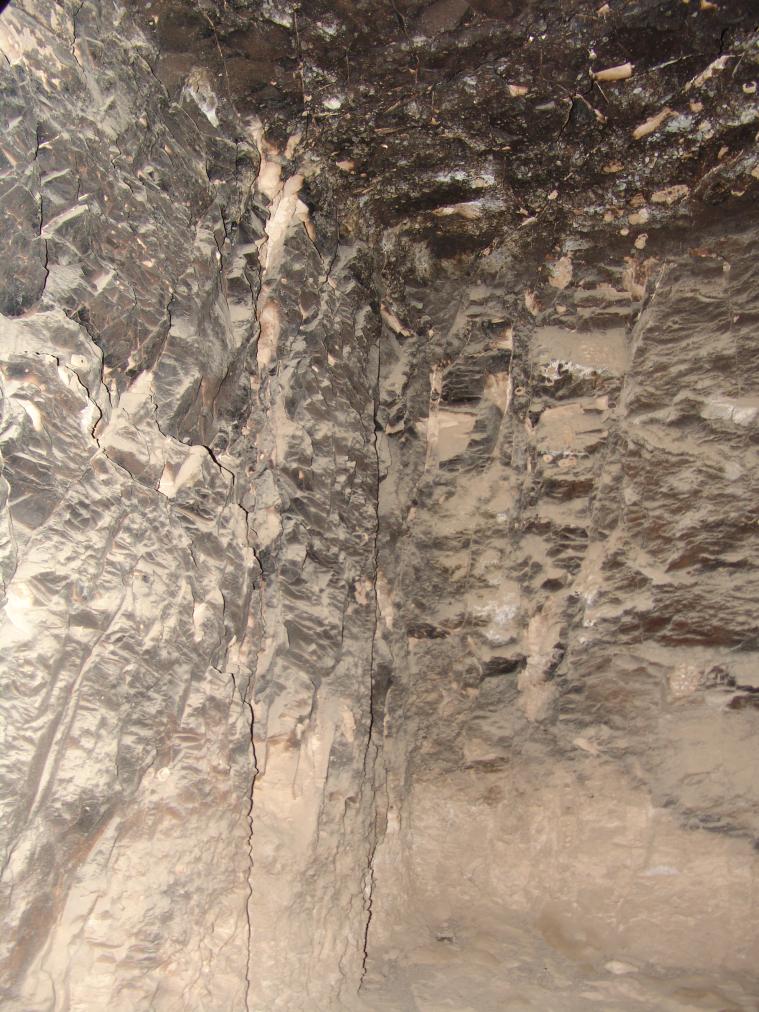
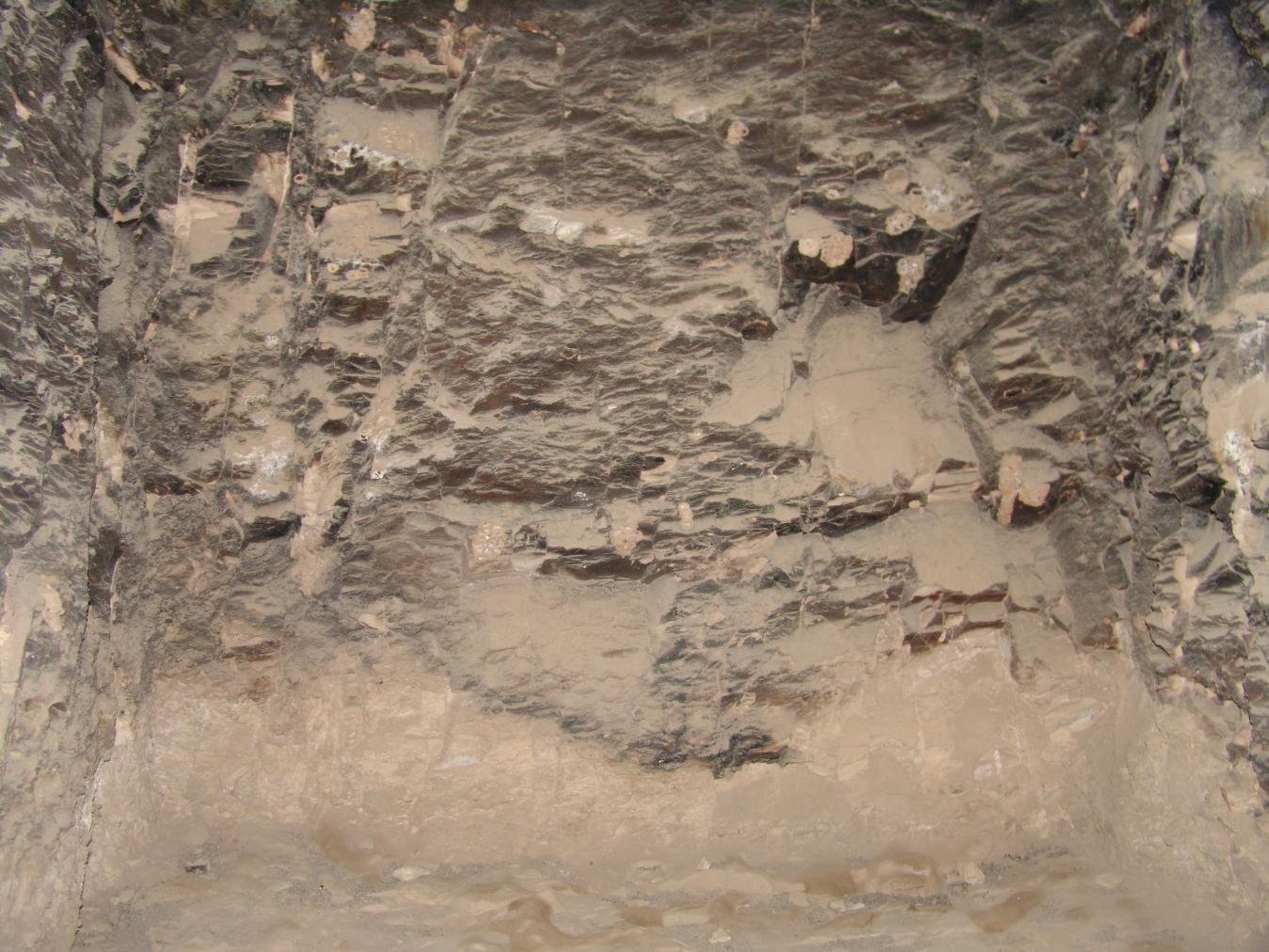


About
About
QV 68 lies on the north side of the main Wadi, between QV 66 and QV 71. It is multi-chambered tomb with a similar architectural plan to QV 66, QV 71, and QV 80. A steep Ramp (A) passes into large, pillared chamber (B) through a short Overhang in front of the entrance. Two side chambers (Ba, Bb) flank chamber B on the east and west, and another small chamber (Bc) is situated on the south, accessed from the west side of the entrance at the lower level. This latter side chamber is believed to have been added at a later date. Chamber (B) originally had a reconstructed pillar, but now only a base remains. Gate C provides access to the burial chamber (C), which lies perpendicular to the tomb's axis. This is followed by niche (Ca) at the rear. A sunken pit in the center of the burial chamber (C) accommodated the Sarcophagus. There is also a smaller pit to the west. Three small magical niches exist on the north, west and east walls of the burial chamber (C).
QV 68 is attributed to Merytamen, the daughter of Rameses II and Nefertari. She is the 4th daughter in procession of daughters at Abu Simbel and became the great royal wife after her mother's death. It is not certain whether or not she held the title of 'God's Wife of Amun'. A colossal statue of her was found at Akhmim in 1983, indicating she achieved high status in the royal court after the death of her mother. The poor preservation and fragmentary nature of the wall paintings in QV 68 makes it difficult to understand the tomb's decorative program. Extant scenes show the queen offering to and receiving favors from the gods with short text captions.
QV 68 has been accessible since the time of Robert Hay of Linplum (1826). Carl R. Lepsius (1844) describes the tomb as much destroyed and noted a piece of granite sarcophagus in the burial chamber (C). This sarcophagus was lost for many years and rediscovered by Labib Habachi in the Berlin Museum in 1974 (Berlin Museum 15274). Elizabeth Thomas visited the tomb in the 1950's and observed that chamber (B) and side chambers (Ba, Bb) were free of debris. She noted that the clearance of chamber (C) would probably reveal the four Magical brick niches and the sarcophagus fragments. Thomas also records a small chamber (Bc) in chamber (B) as a later addition. The tomb was most recently cleared by the Franco-Egyptian Mission in 1971-1972. Currently the tomb is not open to visitation.
Noteworthy features:
QV 68 is attributed to Merytamen, the daughter of Rameses II and Nefertari. It is multi-chambered tomb with a similar architectural plan to QV 66, QV 71, and QV 80
Site History
The tomb was constructed in the 19th Dynasty, during the reign of Rameses II. Substantial blackening of the tomb walls and the addition of side chamber Bc indicates that it was reused at a later period.
Dating
This site was used during the following period(s):
Exploration
Conservation
Conservation History
According to the GCI-SCA, though significant post-fire losses are visible on ceilings and in the burial chamber, overall the surviving areas of painting in the upper chambers are in stable condition, having been previously and extensively treated. It is unknown when the treatment was undertaken. Extensive plaster repairs were undertaken throughout the tomb but the level of treatment in individual chambers is varied. The plaster repairs in side chamber (Ba) have been done carefully, respecting surviving areas of loss and leaving exposed lower layers of plaster, using both edging repairs and large plaster fills. Side chamber (Bb) was instead heavily treated with extensive plaster repairs applied everywhere even over the original lower plaster layer. The burial chamber and rear niche do not appear to have been treated and are the only areas of the tomb that require some localized intervention. In chamber (B) the paintings in the upper blackened zone were selectively cleaned. Some areas exhibit smearing of the blackened deposit and abrasion of original colored surface decoration. There may also be application of a surface coating to the decoration in parts of chamber (B).
Site Condition
According to the GCI-SCA, the entrance Ramp (A) is cut into heavily weathered marl and presents a large area of loss in the east wall where boulders in the overlaying debris fan have been undercut by water erosion and risk falling. A short Overhang of marl rock above the entrance doorway exhibits some cracking and disaggregation. Ramp (A) was originally stepped on the sides with a narrow slope in the middle, but most of the lateral Steps have been eroded, leaving only a few that have partial surviving plaster edges along the ramp sides. The tomb does not appear to exhibit any major rock fracturing or collapse. In the lower parts of the tomb, the rock surfaces in burial chamber (C) and niche (Ca) are heavily blackened from fire, both walls and ceiling, and the rock itself is heavily jointed. There is some loss in the lower part of the west jamb of Gate Ca and in the south wall of niche (Ca). However, there is little post-fire loss of rock in the tomb.
The extent of the decoration in QV 68 is fragmentary. Only small areas of decoration survive, mainly at the tops of walls. The condition of surviving areas of decoration in the three upper chambers differs from area to area. The decoration in the main chamber (B), though heavily abraded, and intentionally scratched, and with substantial areas of loss, still retains much of its upper painted plaster layer. However, the decoration in both the east and west side chambers (Ba, Bb) suffers from severe cracking of the entire plaster stratigraphy. Both side chambers have substantial loss of the upper painted plaster layer, though the east chamber (Bb) has significantly more remaining than the west chamber (Ba), which has almost complete loss of this layer. The extent of surviving decoration in burial chamber (C) is more difficult to assess, given the heavy blackening and fire damage of the walls and ceiling. These surviving areas of painting are quite fragile and there are localized areas of cracking and detached plaster. The tomb has a heavy matte blackened appearance in burial chamber (C) and niche (Ca). Chamber (B) has blackening only on the upper third of the walls; the lower two thirds were presumably protected by debris. Side chambers (Ba) and (Bb) have limited areas of blackening, with small patches on the ceiling and very tops of the walls. These rooms appear to have been possibly closed off and protected from the fire, which has also been suggested by Thomas.
There is evidence of bat activity and birds were seen roosting on the entrance door during the GCI-SCA assessment. The loss in decoration of QV 68 can also be attributed to past flooding, resulting in complete loss of painting at the base of the walls in the upper chambers (although survival of paintings in side chamber (Ba) is relatively low to the ground and suggests a low flood level and/or that this chamber was partially protected), and deterioration around doorways as shown by the extent of replastering needed to recreate the shape of the upper chamber doorways and the substantial rock loss of Gate Ca. The SCA guardian recalled removing water during the 1994 flood. Intentional damage to the paintings such as the scratching in chamber (B) has also occurred.
Hieroglyphs
Queen Merytamen
 King's daughter, Great Royal wife, Lady of the two lands, Merytamen
sAt-nswt Hmt-wrt-nswt nbt-tAwy mryt-imn
King's daughter, Great Royal wife, Lady of the two lands, Merytamen
sAt-nswt Hmt-wrt-nswt nbt-tAwy mryt-imn



















































































Bibliography
Thomas, Elizabeth. The Royal Necropoleis of Thebes. Princeton: privately printed, 1966.

